

25 Safety Topics For Meetings To Discuss For a Better Workplace
Creating a safe and healthy work environment is a legal obligation and critical to maintaining productivity and employee satisfaction. Regular safety meetings play a crucial role in this effort. They provide an opportunity to reinforce safety policies, address concerns, and learn about potential hazards. However, organizing these meetings can often seem daunting, especially when selecting relevant topics that resonate with your team.
To help you facilitate effective discussions about safety, we’ve curated a list of 25 safety topics for meetings. Covering a wide range of issues from ergonomic practices to chemical safety , these topics can help ensure that safety is always at the forefront in your workplace, ultimately leading to a better and safer work environment for everyone.
Safety Meetings
Safety meetings, also known as safety briefings or safety talks, are formal gatherings in a professional setting where employees, management, and sometimes even third-party stakeholders come together to discuss health and safety concerns within the workplace. They typically last between 20 to 45 minutes and can involve a variety of formats, such as presentations, group discussions, or hands-on demonstrations.
The purpose of these meetings is to provide information about existing or potential hazards in the workplace , explain safety protocols and procedures, address any safety concerns or incidents that have occurred, and provide training as part of the organization’s safety program. They also reinforce the importance of safety guidelines and cultivate a safety culture within the organization.
Safety meetings are not usually daily or weekly occurrences. Instead, they tend to occur under specific circumstances, such as onboarding new employees, following a workplace incident, changing industry safety standards or regulations, or introducing new equipment or procedures that may carry additional risks. By maintaining open lines of communication about safety issues, these meetings help ensure the welfare of all employees and contribute to creating a safer, healthier work environment.

Safety Topics For Meetings
Safety topics for meetings are essential to promote a safety culture and ensure everyone’s well-being in the workplace. Here are some safety topics you can consider for your meetings:
1. Slipping, Tripping, and Falling
Slips, trips, and falls constitute some of the most frequent workplace accidents and can result in serious injuries. To mitigate these risks, it is essential to maintain clear, unobstructed walkways and workspaces. Regular cleaning and immediate attention to spills or wet surfaces can prevent slippery conditions.
Additionally, promoting suitable footwear with a good grip can reduce the risk of slips and trips. Adequate lighting is also critical, as it illuminates potential hazards and allows employees to navigate their environment safely. Implementing these practices can significantly reduce the incidence of these common accidents.
2. Ladder Safety
Ladder safety is essential in many workplaces, such as construction sites, warehouses, and offices. Incorrect use of ladders can lead to falls and serious injuries. Employees should be trained on the right way to use ladders, which includes choosing the correct ladder for the task, checking it for any defects before use, setting it up on a firm and level surface, and maintaining three points of contact (two hands and a foot, or two feet and a hand) at all times while climbing or descending.
The proper methods of ascent, descent, and dismounting should also be covered. Reinforcing these safety measures regularly can prevent ladder-related accidents and ensure a safer work environment.
3. Confined Space Safety
Confined space safety is a critical concern in construction, mining, or manufacturing industries, where employees may need to work in tight, enclosed areas. These spaces can present a range of hazards, including a lack of oxygen, toxic gases, or the risk of fire or explosion. It’s crucial to discuss the specific risks associated with each confined space, the necessary precautions to take before entering (like checking oxygen levels or removing flammable substances), and the appropriate use of personal protective equipment.
Workers should also be trained in emergency procedures in case of an incident. By addressing these topics, companies can help ensure their employees are prepared and protected when working in these challenging environments.
4. Hazard Communication
Hazard communication is a key safety concern in many workplaces, particularly those involving hazardous substances. Employees should receive training on identifying hazardous materials based on their labels and Material Safety Data Sheets (MSDS). They should also understand the proper handling procedures to avoid exposure and disposal methods to prevent environmental harm.
The correct use of personal protective equipment when dealing with these substances should also be highlighted if necessary. By improving employees’ understanding of these hazards, businesses can reduce the risk of accidents and ensure safer handling and disposal of dangerous substances.
5. Lockout/Tagout Procedures
Lockout/Tagout procedures are critical in ensuring worker safety while servicing or maintaining machinery and equipment. These procedures involve de-energizing and disabling machinery to prevent unexpected startup or energy release, which could cause harm. Regular discussions about these procedures are essential and should include the step-by-step process of shutting down, isolating, blocking, and securing machines before performing maintenance tasks.
Additionally, they should cover the proper way of applying lockout/tagout devices and the importance of only allowing the individuals who applied them to remove them. By maintaining rigorous lockout/tagout practices, companies can significantly reduce the risk of injuries related to the maintenance of machinery and equipment.
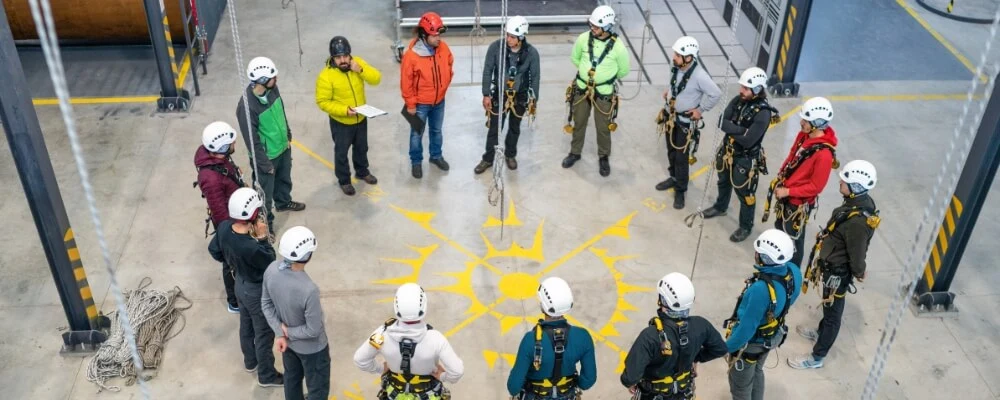
6. Working at Heights
Working at heights is common in several industries and presents unique fall-related risks. It’s essential to discuss the safety measures needed to mitigate these risks. Employees should be trained on correctly using fall protection equipment, such as harnesses, guardrails, and safety nets, and understand the importance of regular equipment inspections. They should also know how to assess their environment for hazards like unstable surfaces or windy conditions.
Moreover, procedures for safely ascending, descending, and working at height should be covered. By emphasizing these precautions, you can significantly reduce the risk of fall-related injuries in the workplace.
7. Drug or Alcohol Abuse on the Job
Drug or alcohol abuse on the job is a serious issue that can severely impact an individual’s health, productivity, and workplace safety . It’s crucial to articulate the company’s policy regarding substance use clearly and strictly, highlighting that impairment at work is unacceptable. Employees should be educated about the detrimental effects of substance abuse on their work performance, personal lives, and health.
Organizations should also provide information on resources such as counseling or rehabilitation programs, offering support to those struggling with addiction and fostering an environment of understanding and assistance rather than judgment or punishment.
8. Workplace Violence
Workplace violence, ranging from threats and verbal abuse to physical assaults, poses significant safety and health risks. Educating employees about recognizing potential signs of workplace violence, including aggressive behavior, verbal threats, or sudden changes in behavior, is critical. Establishing clear protocols for responding to such situations, including immediate reporting mechanisms, can help prevent escalation.
By cultivating an environment of trust and support, employees will feel encouraged to express concerns about potential violence without fear of retribution, contributing to a safer and healthier workplace.
9. Manual Handling
Manual handling, involving lifting, carrying, moving, or otherwise manipulating objects by hand, is a common cause of workplace injuries . Proper training on safe manual handling techniques is essential to prevent these injuries. This includes understanding the principles of safe lifting (such as lifting with the legs, not the back), knowing when to ask for help or use equipment, and how to safely move or carry loads.
Regular refresher courses can help keep this knowledge up-to-date and reinforce the importance of safe manual handling. Companies can significantly reduce the risk of strains, sprains, and other related injuries by equipping employees with these skills.
10. Personal Protective Equipment (PPE)
Personal Protective Equipment (PPE) is a vital safety aspect in many work environments, particularly in healthcare, construction, and manufacturing industries. Proper use of PPE can significantly reduce the risk of injury or exposure to harmful substances.
Employees should be trained on how to use, maintain, and dispose of various types of PPE correctly. This includes understanding which type of PPE is appropriate for different tasks, how to wear it correctly for maximum protection, how to clean and maintain reusable PPE, and how to safely dispose of single-use PPE. Reinforcing these guidelines helps ensure the effectiveness of PPE and promotes a safer working environment.
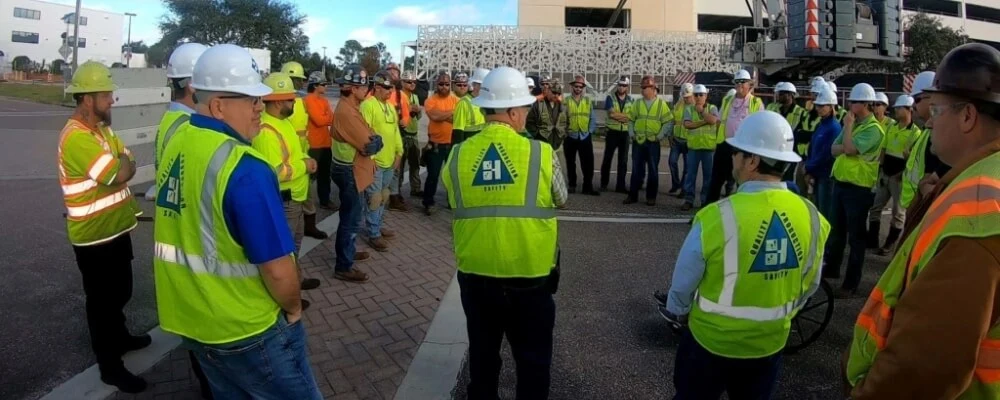
11. Electrical and Fire Safety
Electrical and fire safety are paramount in virtually all work environments. Employers should discuss necessary precautions to prevent electrical shocks, such as not overloading outlets, keeping liquids away from electrical equipment, and not using equipment with damaged cords. Regular electrical equipment inspection and maintenance are essential to ensure they’re in safe working condition.
Regarding fire safety, employees should be educated on preventative measures like proper waste disposal and avoiding the blockage of fire exits. Additionally, fire safety training should be conducted periodically, ensuring that employees know how to use fire extinguishers, understand evacuation procedures, and know emergency exit locations. This comprehensive approach helps minimize the risk of electrical and fire-related incidents.
12. Ergonomic and Workplace Stress
Ergonomics and workplace stress are critical factors in employee productivity and overall well-being. In discussions about ergonomics, employees should learn how to design their workspace for comfort and efficiency, thus reducing strain and the risk of injury. This could include correct seating posture, optimal placement of computer screens, and usage of ergonomic office equipment.
Alongside this, it’s crucial to manage work-related stress by promoting regular breaks, time management, balanced workloads, and fostering a supportive work environment. A holistic approach addressing physical and mental stressors can significantly improve health outcomes and productivity.
13. Reporting Hazards and Incidents
Promptly reporting hazards and incidents is crucial in maintaining a safe workplace environment. Employees should feel encouraged and empowered to report any safety concerns or incidents without fear of reprisal. This reporting allows for quick corrective action, reducing the likelihood of accidents or injuries.
Companies should have clear, straightforward procedures for such reports, including dedicated reporting lines, online forms, or direct communication with safety officers or supervisors. Regular discussions on this topic ensure that all employees know the reporting process and its significance in workplace safety.
14. Chemical Safety
Chemical safety is vital to many workplaces, including labs, factories, and cleaning services. Employees handling chemicals should be trained to use, store, and dispose of these substances safely to prevent accidents , spills, and potential health hazards. They should understand how to interpret Material Safety Data Sheets (MSDS), which provide detailed information about each chemical’s properties, hazards, protective measures, and safety precautions.
Training should also cover using personal protective equipment when handling chemicals and emergency procedures in case of accidental exposure or spillage. Regularly discussing these procedures helps ensure a safer workplace environment and reduces the risk of chemical-related incidents.
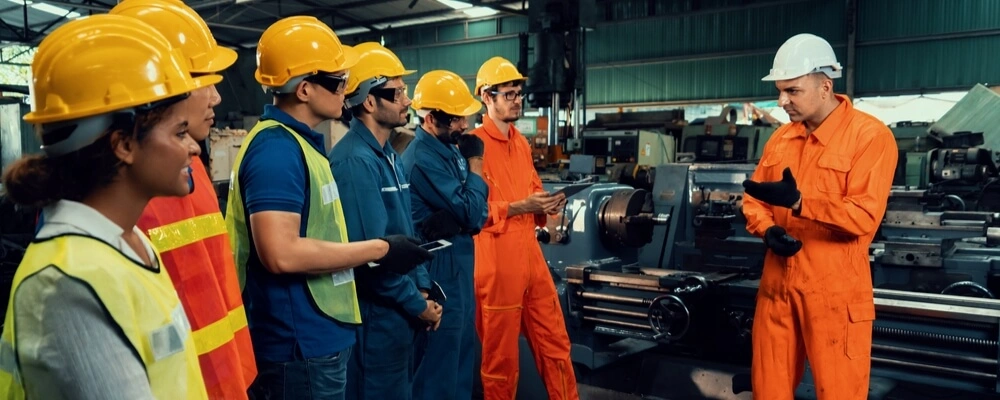
15. First Aid Training
First aid training is essential to workplace safety, equipping employees with the skills to respond quickly and effectively during medical emergencies. Such training can range from basic skills like wound dressing, CPR, and handling of minor injuries to more advanced practices for specific industries. By understanding these first aid techniques, employees can not only help stabilize a situation until professional medical help arrives but could potentially save lives.
It is recommended that these training sessions be conducted regularly to keep the information fresh and up-to-date. Creating a workplace where employees are confident in responding during emergencies promotes safety and readiness.
16. Equipment Safety
Equipment safety is crucial in many industries, from manufacturing and construction to hospitality and healthcare. All machinery or equipment employees should receive comprehensive training on correct usage, safety protocols, and the risks associated with improper use. This training should include preventative measures like regular equipment inspections, maintenance, and reporting faulty machinery immediately.
Ensuring that each employee is competent in handling their equipment, the risk of injuries due to mishandling or malfunctions can be significantly reduced, leading to a safer and more efficient workplace.
17. Mental Health Awareness
Mental health is a vital aspect of overall employee wellness and productivity. Creating an environment where mental health is acknowledged and supported is important. Regular discussions about the significance of mental well-being, signs of common mental health issues, and stress management techniques can help to destigmatize these topics and encourage employees to seek help when needed.
Additionally, companies should provide resources such as counseling services, mental health days, and wellness programs. Ensuring that employees are aware of these resources and feel comfortable using them is critical in supporting mental health in the workplace.
18. Noise Exposure
Noise exposure in the workplace can lead to permanent hearing loss or other hearing complications over time. Discussing ways to mitigate these risks is crucial in environments with high noise levels. This might include operating noisy machinery during specific hours, maintaining equipment to reduce noise, and creating quiet zones for employees. Alongside these measures, personal protective equipment such as earplugs or earmuffs is often necessary.
Employees should understand the correct usage of such protection and its importance in preventing hearing damage. Regular hearing checks can also help monitor employees’ hearing health and detect any issues early.
19. Office Safety
Office safety, though seemingly straightforward, is important in maintaining employee health and productivity. This includes setting up workstations correctly to minimize strain and discomfort—employees should be aware of the appropriate height for desks and screens, the correct positioning of keyboards and mice, and how to adjust chairs for optimal support. Discussing correct posture can help prevent long-term issues like back pain and repetitive strain injuries.
Additionally, the importance of taking regular short breaks should be emphasized, as this can help reduce fatigue and stress on the body. Companies can help ensure their employees remain healthy and productive by maintaining a safe and comfortable office environment.
20. Emergency Evacuation Plans
Emergency evacuation plans are vital to workplace safety designed to ensure quick and orderly evacuation during emergencies such as fires, earthquakes, or chemical spills. Regularly reviewing these procedures informs employees about the quickest and safest exit routes, meeting points, and roles during an evacuation.
Drills should be conducted periodically to practice these procedures and to identify any areas of confusion or inefficiency that need to be addressed. Ensuring all employees are familiar with these plans and can execute them calmly and efficiently in emergencies can significantly enhance safety and reduce potential harm.
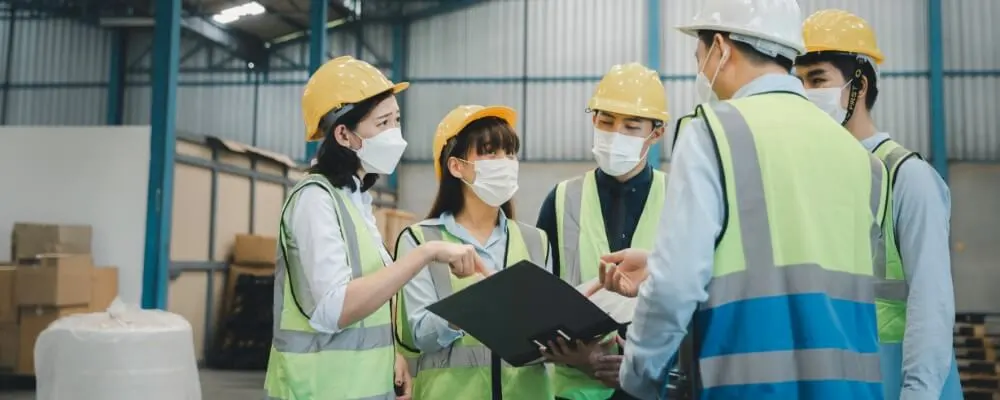
21. Radiation Safety
Radiation safety is a significant concern in workplaces where employees might be exposed to radiation, such as in healthcare facilities, research laboratories, or nuclear power plants. Employees should be trained on the principles of radiation safety, often summarized as time, distance, and shielding – limiting exposure time, maintaining a safe distance from radiation sources, and using appropriate shielding materials.
They should understand the different types of radiation, the potential health effects, and the safety equipment and procedures designed to protect them, such as using dosimeters to monitor exposure and wearing lead aprons when necessary. Regularly revisiting these principles can help ensure employees remain vigilant and well-protected.
22. Fatigue Management
Fatigue management is critical to workplace safety, as tiredness can significantly impair work performance and lead to serious accidents. It’s important to discuss the signs of fatigue, such as persistent tiredness, decreased alertness, slow reaction times, and poor decision-making. Employees should understand the importance of adequate rest and sleep, balanced nutrition, and regular exercise in maintaining energy levels.
Additionally, discuss strategies for managing fatigue, including taking regular breaks, managing workload effectively, and seeking medical advice if persistent fatigue is experienced. By promoting a culture that values rest and recognizes the risks of fatigue, employers can contribute significantly to the overall safety and productivity of the workplace.
23. Safe Use of Power Tools
Safely using power tools is crucial in industries like construction, manufacturing, or woodworking, where these tools are frequently used. Employees should be educated about the proper use, maintenance, and safety precautions associated with each type of power tool they use. This includes understanding the functions and limitations of each tool, wearing appropriate personal protective equipment, checking tools for damage before use, and maintaining them correctly to ensure their safe operation.
Emphasizing that tools should only be used for their intended purposes can help prevent misuse-related accidents. Regular discussions and training on these topics help ensure employees operate power tools safely and competently, reducing the risk of injuries.
24. Biological Hazards
Biological hazards can pose a significant risk to health in certain workplaces, such as healthcare facilities, laboratories, or waste management sites. Employees in these settings should be trained to understand the potential risks of exposure to biological agents like bacteria, viruses, or other biohazardous materials. This includes proper use of personal protective equipment, good hygiene practices, safe handling procedures, and disposal methods for biohazardous waste.
Procedures for exposure incidents, including reporting, first aid, and medical follow-up, should also be explained. Regular discussion can help prevent exposure incidents and maintain a safer working environment.
25. Personal Hygiene
Personal hygiene is crucial in maintaining a healthy and safe working environment, particularly in preventing the spread of infectious diseases. Regular discussions should be held on best practices, such as regular handwashing with soap and water, using hand sanitizers when soap isn’t available, keeping workstations clean, and practicing good respiratory etiquette, like covering mouth and nose when coughing or sneezing.
It’s also important to encourage employees to stay home when feeling unwell to prevent the potential spread of illness. Additional measures like wearing masks or social distancing might be needed in public health crises. Maintaining good personal hygiene benefits everyone and contributes to a healthier working environment.
Prioritizing workplace safety ensures employees’ well-being and fosters a positive work culture and productivity. By discussing the 25 safety topics outlined in this article in your safety meetings, you can create an environment where everyone feels empowered to uphold safety standards.
Remember, creating a safer workplace is a continuous journey that requires regular discussions, ongoing training, and constant vigilance. By investing in these safety talks, you invest in the well-being of your most valuable resource – your employees.
- +1 (800) 826-0777
- VIRTUAL TOUR
- Mass Notification
- Threat Intelligence
- Employee Safety Monitoring
- Travel Risk Management
- Emergency Preparedness
- Remote Workforce
- Location and Asset Protection
- Critical Communication
- Business Continuity
- Why AlertMedia
- Who We Serve
- Customer Spotlights
- Resource Library
- Downloads & Guides
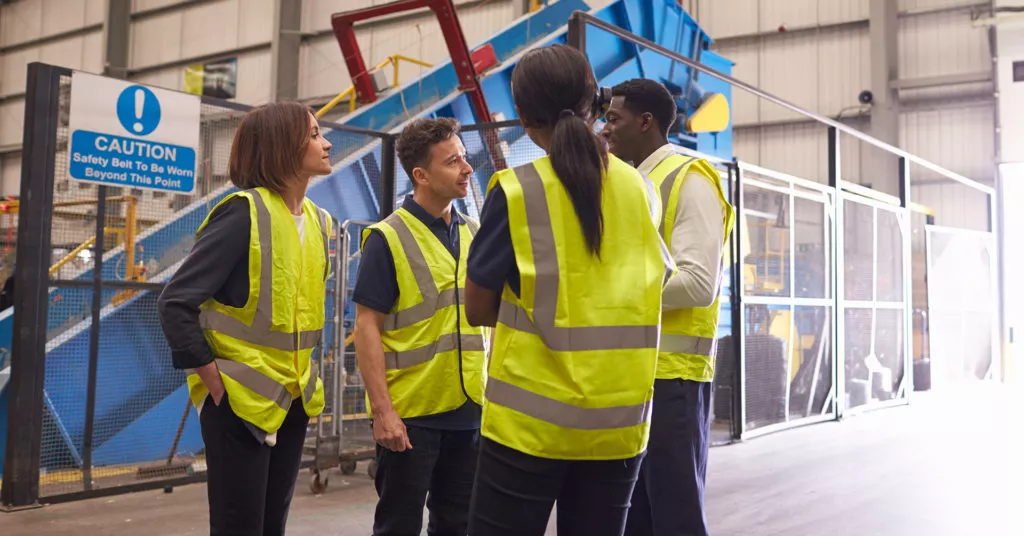
Safety Moment Ideas: 24 Topics to Enhance Safety Culture
To supplement safety training and keep employees engaged, plan safety moments on a range of topics. Here are 24 ideas to get you started building a strong culture of safety.
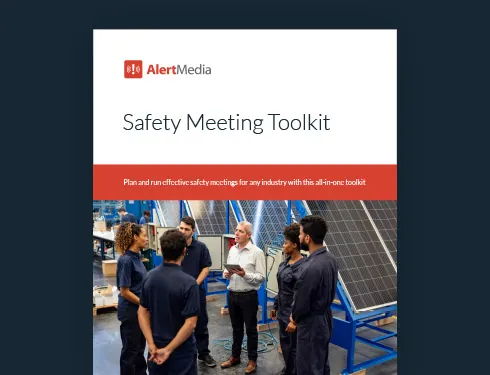
What Is a Safety Moment?
- How and When to Integrate Safety Talks
- 24 Safety Moment Ideas for 2024
“People have a sense of ownership when they're involved... Training is just the tip of the iceberg.” Adam Corn Director of Safety & Security and Training & Development, GoFundMe
Training is one of the key elements of effective safety leadership and a safe workplace. You need to establish a pattern of consistent communication, educating your company’s employees on the safety risks they face in the workplace and the best strategies to protect themselves.
Sometimes, this is easier said than done. Even the most engaged employees struggle to give safety meetings and training sessions their full attention. Research has found that most presentations lose the audience’s attention within the first 10 minutes.
You need a way to integrate education into your organization’s daily activities without risking information overload. Enter the safety moment. Concise, direct, and easily digested, it’s an ideal way to share and reinforce critical safety information.
Pro tip: A safety meeting agenda can aid in structuring effective and engaging meetings.
In this article, we’ll outline what safety moments are, how you can maximize them, and a variety of safety moment ideas to help keep safety first.
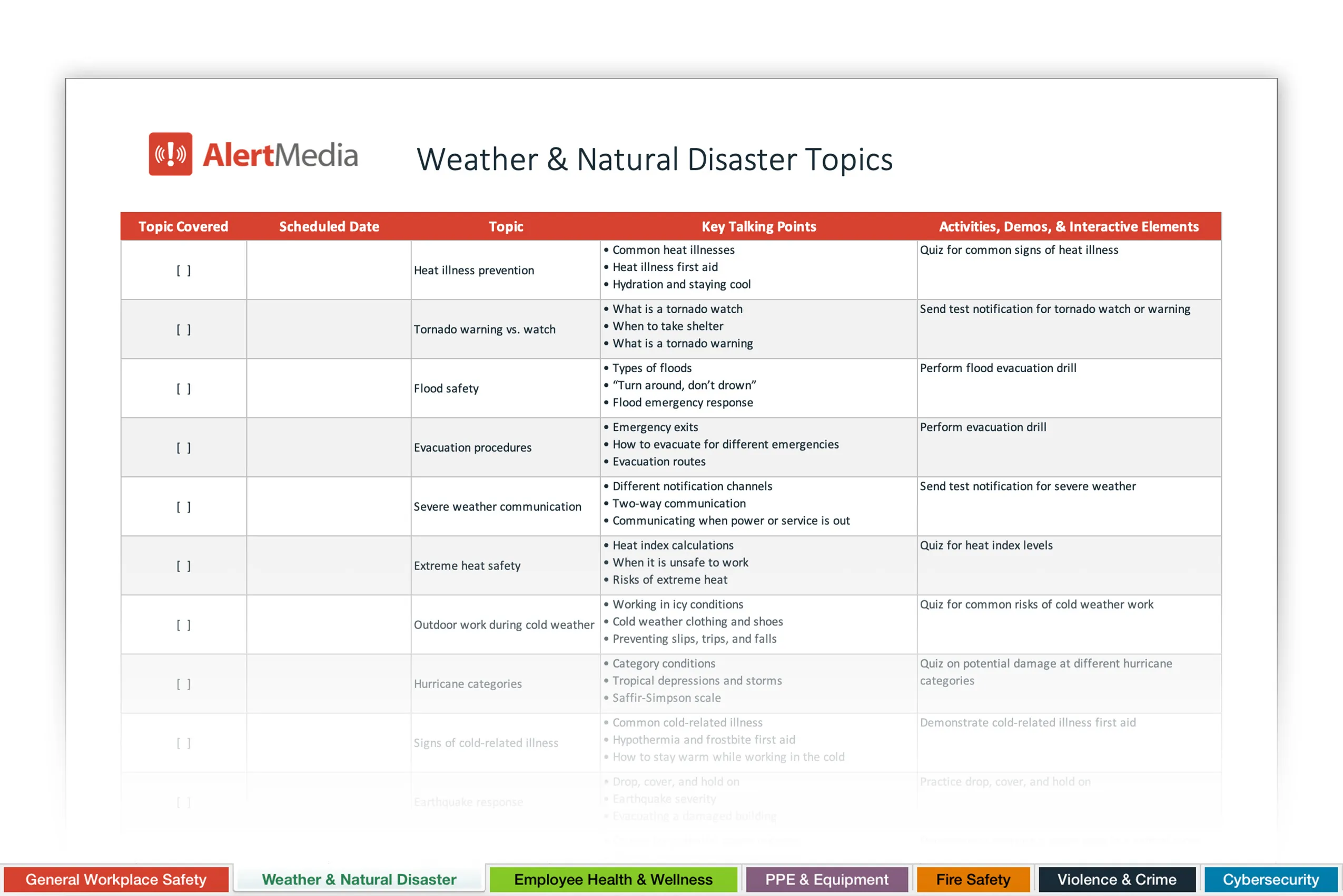
Preview of a spreadsheet full of safety meeting topics with talking points
Safety Meeting Toolkit
A safety moment is a brief talk about a specific, safety-oriented topic at the beginning of a meeting. Safety moments for work are usually between five and 10 minutes long and may also be called “safety minutes,” “safety chats,” or “safety shares.”
Teams can approach these conversations in different ways to maximize the impact. But there are a few common aspects of most companies’ safety moments:
- Keep them short, usually lasting approximately five minutes and never more than 10
- Focus on a single topic rather than jumping around or overloading participants with information
- Orient the safety moment toward your team’s upcoming day or week, not long-term planning
- Use safety moments to support a positive safety culture through clear, concise, and engaging communication
Safety moments vs. toolbox talks
You might have heard the term “toolbox talks” and wonder how they compare to safety moments. The tradition of toolbox talks may have begun on construction sites or similar job sites where there is a need to regularly brush up on equipment safety procedures. This term is used in diverse workplaces today, just as safety moments are used to establish regular informal discussions of actionable safety information.
In any case, the meaning of each of these terms is rooted in how teams use them—rather than strict definitions—and there is bound to be a wide variety of approaches to supporting safety outcomes for unique industries, organizations, and leadership teams.
Along with “safety moments” and “toolbox talks,” other common names include “safety minutes,” “ safety talks ,” and “tailgate meetings.” To choose an effective name, consider the tone and goals you’re aiming for—and the setting for your talks. What resonates for a roofing company may not resonate for an accounting firm.
Watch this video to learn the fundamentals of compelling safety talks, discover new topic ideas, and get facilitation tips.
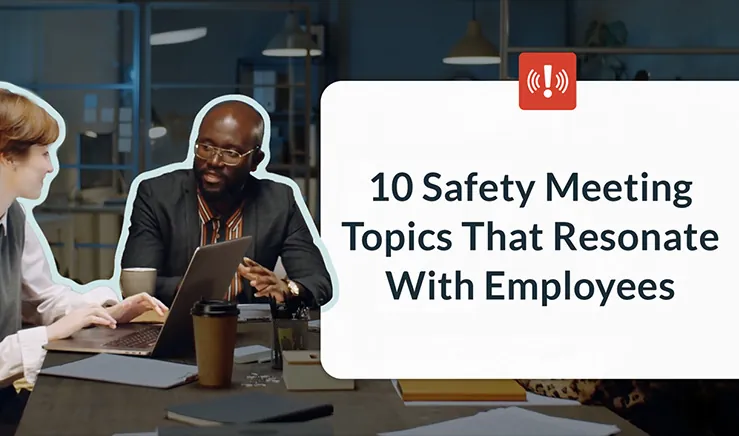
Why are safety moments important?
Safety moments are a valuable tool to deliver or reinforce critical information, such as safety protocols and standards, occupational safety concerns, and any other workplace safety messages that will lead to better outcomes.
Topics can cover routine safety issues but are also a great way to highlight timely hazards. Say, for example, your team is operating heavy machinery they haven’t worked with in a few months. At the start of the day, a quick safety moment covering the risks and precautions can help ensure everyone is aware and prepared.
Safety shares are also a great way to encourage safety engagement . Routine safety training can sometimes feel abstract and easy to tune out. However, since safety moments cover topics that are immediately relevant, employees are more likely to give their full attention and participation to the safety message of the day.
How and When to Integrate Safety Moments
The ideal frequency and format for safety moments vary by setting and industry. Companies with workers based mostly in offices will usually hold safety moments in conference or break rooms. And given the less hazardous environment, weekly safety moments may be sufficient. They can also be a great complement to your monthly safety topics .
Conversely, higher-risk workplaces like warehouses or construction sites might hold daily moments to reinforce salient points and help prepare workers for what they’re doing that day.
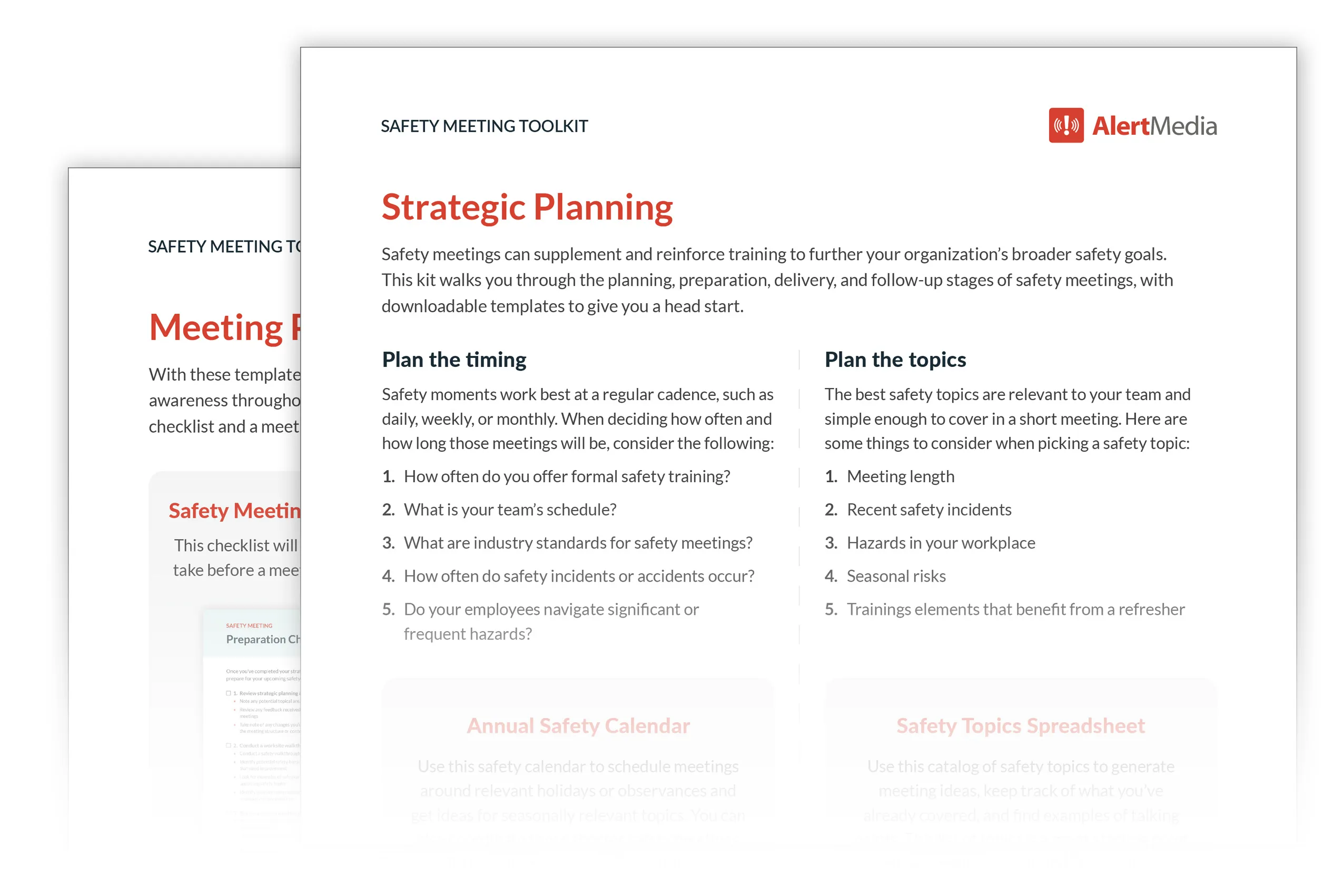
24 Safety Moment Ideas for 2024 and Beyond
To determine the most productive safety meeting topics for your workplace, first, perform a business threat assessment . No two organizations—or even worksites within an organization—face the same risks. Offices, kitchens, factories, and construction sites all have unique conditions that can impact your employees’ workplace safety . When you have a clear understanding of the hazards that might impact your people, you can plan for training sessions, including safety moments to address smaller safety topics or refreshers of more in-depth training.
Here are 24 safety moment ideas to improve general safety and inspire detailed presentations about the hazards in their work environments.
Universal safety moment topics
1. situational and safety awareness.
One of the most important skills you can help your employees develop is situational awareness in the workplace . Spend a few minutes to emphasize the value of staying focused on the task at hand and being cognizant of your surroundings to reinforce your broader situational awareness training programs. You can give actionable tips for minimizing distractions or reviewing a short safety checklist before putting one’s full attention on a potentially hazardous task. You can also dedicate one or a series of safety moments reviewing warning signs and reporting procedures to help prevent workplace violence.
Pro tip: Situational awareness also applies to mental health risks and safety measures to support total well-being.
2. Emergency exits and routes
Every workplace must have clearly marked emergency exits. While safety moments can’t replace fire drills , they serve as a good reminder of where the nearest exit is and how to safely reach it. This brief check-in would also be a good time to make sure people are aware of where evacuation routes are posted for easy reference in various locations throughout the workplace.
3. Security and access control
Whether it’s accidental or intentional, someone’s presence where they shouldn’t be creates a workplace risk. Cover the security policies for the group you’re talking to, as well as protocols for reporting a breach.
4. Fire prevention and preparedness
Workplace fire prevention is a broad topic that you can break down into several fire safety moments. For example, you can discuss how to avoid fire hazards , where fire extinguishers are and how to use them, what each employee’s role is in case of a fire, and where to meet after evacuating.
5. The importance of proper rest
What happens at home can indirectly influence workplace hazards. Employees who don’t get enough rest can fatigue more easily and make mistakes, putting themselves and their coworkers at risk of injury. You can encourage sufficient rest for health and safety reasons and review workday break schedules to ensure people are taking advantage of chances to rest and recharge while on the job.
6. Parking lot safety
At the end of a workday, it can be tempting to stare at your phone, catching up on messages while you walk to the car. However, between trucks with poor visibility, distracted drivers, and potential threats lurking in dark corners, parking lots are full of hazards to be aware of. Review any risks particular to your parking areas and tips for staying aware, avoiding known hazards, and how to contact reliable assistance if needed.
7. Two-way communication with safety leaders
A two-way communication platform that includes mass notification and employee check-in functionality is key to any safety program. But it’s effective only if your team uses it properly. Review how and when employees should expect to receive notifications, as well as how to check in and report threats.
Industrial, warehouse, and construction safety moment topics
8. personal protective equipment usage.
Personal protective equipment (PPE)—or safety gear—is part of many workers’ routines, but it’s often taken for granted. Periodic reminders about issues like properly fitting hard hats, hearing protection, and testing air filters and respirators could prevent serious injury.
9. Heat stress prevention
As OSHA prepares to release its first-ever set of heat regulations , it’s a good time to remind employees about the risks of heat exposure and heat exhaustion. Focus on prevention , early warning signs, and how workers can help keep each other safe in hot situations .
10. Forklift safety
Forklifts can be as dangerous for operators as they are for anyone in the vicinity. Discuss the safety rules for properly operating a forklift, such as speed and load limits, as well as the use of visual and audio cues to keep routes clear. One solution is to lay down brightly colored tape to designate driving lanes and no-go zones to keep pedestrians safe.
11. Heavy machinery
When someone spends long enough working with heavy machinery, the inherent danger can begin to feel routine. While experience is valuable, complacency is dangerous. Use safety briefings to remind workers of the risks and safety procedures to follow for each piece of equipment every time.
12. Hazardous materials and chemicals
Chemicals and other hazardous materials always present a risk, no matter how often your team may work with them. Review the specific safety risks and warnings of materials present in the workplace, and teach how to properly respond in the event of a spill or exposure.
13. Injury treatment and reporting
No matter how much effort you put into prevention, workplace accidents happen. In the event of an injury, workers need to know where to seek out first aid, when to go straight to the hospital, and how to comply with OSHA incident reporting regulations .
Retail and hospitality safety moment topics
14. avoiding slips, trips, and falls.
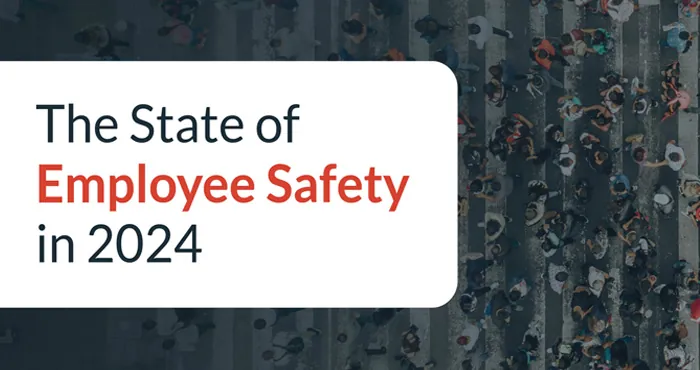
Workplace injuries caused by slips, trips, and falls cause workers to miss an average of 14 days of work . Go over potential hazards to watch for in your work environment, like tripping hazards, signage to be aware of, fall protection if necessary, the process for reporting incidents and near misses, and how to mitigate the risks.
15. Piling, stocking, and shelving hazards
Crowded aisles, tall stacks, and full shelves can create potential safety hazards for employees and customers. Review how to properly store, stack, and display inventory, as well as safe practices for avoiding cluttered emergency exit routes. A related safety moment topic would be ladder safety.
16. Safe lifting techniques
Standing for long periods of time can lead to back and leg injuries, especially when combined with bending over to lift objects. Provide frequent safety tips on good posture, the importance of appropriate footwear, and how to properly lift items to avoid injury.
17. Shoplifting and robbery protocols
If an employee faces theft or an armed robber, they need to know exactly how to handle the situation. A quick safety toolbox talk can refresh employees on what to do, how to protect themselves, and who to contact once everyone is safe.
18. Knife safety
There’s a common saying that a falling knife has no handle. Anyone who works in a kitchen has heard this a thousand times, but talking about how to properly handle and care for knives can help prevent an unfortunate injury and ensure a safe working environment for everyone.
19. Working with heat and flames
Hot surfaces and open flames from stoves, ovens, broilers, and deep fryers can all cause serious injuries. Quick safety talks focusing on each of these hazards can keep your kitchen staff aware of the risks and focused on doing their jobs safely.
Office environment safety moment topics
20. cybersecurity.
Researchers estimate that cyberattacks happen an average of every 39 seconds . Reviewing how to avoid phishing scams, social engineering, and unsafe attachments could save your company from a costly and painful data breach or malware infection.
21. Electrical safety
Offices might seem safe compared to industrial settings, but anything that plugs in can be a hazard. Frayed cords, overloaded surge protectors, and malfunctioning kitchen equipment can all lead to fires, and your team should know how to identify and address these unsafe conditions before a crisis develops.
22. Proper ergonomics
When you spend most of the day in front of a desk, you need a setup that’s easy on your body. Discuss the details of proper ergonomics to avoid repetitive stress injuries. including chair height and posture, desk height, monitor angle and orientation, and how to position keyboards and mice.
23. Eye strain
The more time someone spends staring at screens, the higher the risk of eye injuries. Going over ways to mitigate eye strain, such as screen filters and appropriate lighting, can help employees stay productive without impacting their vision.
24. The importance of regular breaks
Since sitting at a desk all day isn’t physically demanding, people might not think they need to take breaks. However, prolonged sitting can cause physical injuries, contribute to eye strain, and lead to mental fatigue. Remind employees not only to pause their work periodically but also to stand up and walk around for five to 10 minutes every hour.
Putting Your Safety Message of the Day to Work
A consistent feedback loop of training, education, and practice is an essential component of a strong safety culture . Frequent safety moments are a great way to complement more extensive and rigorous training programs, as they allow you to reinforce concepts on a more frequent basis.
In industrial settings, safety moments can set the tone for the day. Whether you’re reviewing a common topic or describing a new risk, an engaging discussion can get workers focused on keeping themselves and their peers safe. Five minutes every morning to ensure everyone goes home healthy and happy is time well spent.
More Articles You May Be Interested In

Please complete the form below to receive this resource.
Check Your Inbox!
The document you requested has been sent to your provided email address.
Cookies are required to play this video.
Click the blue shield icon on the bottom left of your screen to edit your cookie preferences.


100+ Short Workplace Safety Topics from [A-Z] – Free Download
The human attention span has been dwindling since the mass-adoption of the Internet. No wonder it’s becoming more and more difficult to engage your workforce in safety training.
But that’s where short workplace safety topics come into play. With the right resources, they can be conducted several times throughout the week and last about 10-15 minutes. That’s enough to keep safety knowledge fresh on everyone’s mind and build the foundation of a strong health and safety culture. A culture in which your entire workforce is engaged and invested.
All great except… There is one challenge here. Quick safety talks can actually be more work because of the limited time. As Mark Twain famously said,
“I didn’t have time to write a short letter, so I wrote a long one instead.” Mark Twain
So, how do you make a short safety talk count?
The Short Safety Talks Secret: How to Effectively Communicate Workplace Safety Practices In Minutes
Good news! With the abundance of short safety topics that the Internet has to offer, you have just about enough resources to make even a 2-minute safety talk effective.
But before we get to the downloadable toolbox talk templates, here are a few tips on communicating safety best practices:
- Tell a story . According to cognitive psychologist Jerome Bruner, we are 22 times more likely to remember facts when they are presented through a story. Another study suggests that “telling stories when communicating can make the speaker appear more warm and trustworthy, as opposed to speaking some other way, such as providing only statistics and figures”.
- Stay focused on your topic . Yes, there are probably dozens of related things that you want to say. And they all seem important. But, if you want your safety talk to stick, you have to remain laser-focused on one specific topic.
- 5-10 slides max . You’ll probably want to keep a slide for about a minute. Keeping slide count smaller enables you to keep your toolbox talk short, too.

100+ Short Safety Talks For Work [A-Z index]
Ready to transform your workplace’s attitude towards health and safety? It’s easy to stay consistent with your safety talks when you have a reliable backlog of quick safety topics for you to choose from.
We’ve done the homework for you. Here are 100+ short safety talks, ready for when your next safety moment takes place. Hopefully, these will help keep your idea bank full for the foreseeable.
- 5 Examples of Unsafe Bad Habits
- Achieving your Team’s Health and Safety Goals
- Alcohol Awareness
- Allergies and Hayfever
- Attitudes to Workplace
- Health and Safety
- Back Stretches
- Being a Positive Influence for your Colleagues
- Being Proactive
- Bullying in the Workplace
- Burns and Knowing the Different Levels of Severity
- Carbon Monoxide
- Carcinogens
- Cell Phones as Dangerous Distractions
- Close Calls
- Communication
- Concrete
- Construction Sites
- Construction Surveying
- COVID-19 (we’ll cover this topic in more detail later)
- Cutting Down Complacency
- Deadline Pressures
- Defibrillators
- Dropping Heavy Objects
- Dust and its Hazards
- Electrical Safety
- Energy Drinks and Excessive Caffeine Consumption
- Establishing a Safe Working Environment
- Excavation
- Eye Damage and Eye
- Fall Protection
- Fall Prevention
- Feeling Immune – ‘It
- Wouldn’t Happen To Me’
- Fire Extinguishers
- Fire Safety
- First Aid Kit
- First Day Back
- Gasoline
- General Day-To-Day Safety
- Hand and Arm Protection
- Hand Tools
- Handling Chemicals
- Hazardous Substances
- Health and Safety Mentoring
- Heart Attacks
- Heat Stress
- Heavy Lifting
- Improving our Health and
- Safety Communication
- Keeping Everyone
- Accountable for Workplace Health and Safety
- Keeping Hydrated
- Ladder Safety
- Lead-Based Paint
- Learning From an Accident
- Lyme Disease
- Machine Guarding
- Meeting your Safety Goals
- Mental Health
- Mosquitoes
- Neck Stretches
- New Employees
- Noise and Noise-Induced Hearing Loss
- Office Safety
- Personal Hygiene
- Personal Protective Equipment
- Planning a New Task
- Potential Hazards
- Protective Clothing
- Radio Communication
- Reporting an Incident
- Reporting Injuries
- Responding to an Emergency
- Safety Paperwork
- Safety Signs
- Sleep and Fatigue
- Slips and Trips
- Snow and Frost
- Workplace Stress
- Teamwork and Our Health and Safety Culture
- The Common Cold
- Truck Driving
- Using New Equipment
- Water Safety
- Winter Safety
- Working Alone Safely
- Workplace Violence
For more inspiration, check out OSHA’s library of free safety training materials which include:
- Brochures/booklets;
- Fact Sheets;
- Guidance documents that provide detailed examinations of specific safety and health issues;
- Online Safety and Health Topics pages;
- Posters;
- Small, laminated QuickCards™ that provide brief safety and health information; and
- QuickTakes , OSHA’s free, twice-monthly online newsletter with the latest news about OSHA initiatives and products to assist employers and workers in finding and preventing workplace hazards.

Flu and Covid Toolbox Talks and Safety Moments
Given the current situation, it’s important to cover this particular safety topic in a bit more detail. Besides, speaking to your workforce about the risks presented by COVID-19, and how you can mitigate them, is a great topic for a quick, 5-minute safety topic.
Here are some of the points you can cover within this particular topic:
- Social distancing
- The importance of wearing a mask
- The main COVID-19 and flu symptoms
- What to do if you show any COVID-19 symptoms
- How often you should use hand sanitizer
- The best way to wash your hands
- Understanding the risks (including any key risks for your particular type of work)
- The current situation in the USA (legislation, statistics and changes)
- Examples of small changes that you can make to ensure your work practice is as safe as possible
You can pick and choose from any of these topics and adapt your safety discussions accordingly to best suit your workforce. As you can see, short safety talks are ideal for covering a health and safety concern of this kind in a way that is efficient, informative and as useful as possible for your workforce.
How Should You Document Safety Toolbox Topics?
Different document types have their own strengths and weaknesses. So, it’s worth considering what would be the right format to deliver your chosen topic.
In the table below, we’ve listed the document types that you can typically use, alongside their plus points and drawbacks.
| Document type | Strengths | Weaknesses |
| They’re visually engaging and a great way to keep your audience’s attention. They also help you to structure your talk and stick to the key topics that you need to cover. | Presentations take the most time to create. Plus, multitasking and clicking through the slides can be a little bit fiddly. If it’s only a quick one minute talk, the effort of setting up a PowerPoint is probably not necessary. | |
| Instead of spending time designing your slides, you can simply write down the most important takeaways in a text document and save it as a PDF.Once the talk has finished, you can distribute the document amongst your team for them to refer back to later. | Make sure that the time and effort that goes into making this document is worthwhile. If you think your team members are likely to dump it straight into the recycling bin, redirect your efforts elsewhere. | |
| This is the most fluid option. It allows you to engage with your audience and encourage their participation. It’s also a great way to sincerely express the importance of the topic you are covering. | If you’re not able to go ad-lib confidently, visual aids to guide your talk are a very useful crutch. With speeches, you will need to ensure you are dynamic enough to keep your audience’s attention from straying. Plus, you will need to be strict with yourself to stay on topic! | |
| This makes it really easy to prepare a talk because there is lots of quality content on YouTube that you can use. It’s an effortless way to make the talk engaging and keep your audience’s attention. Perfect for a quick, yet effective safety talk. | Inflexibility. The content can’t be adapted to suit your workforce and your unique situation. This also has the downside of looking like an impersonal choice since you didn’t create the content yourself. |
How Often Should You Conduct Safety Talks?
In an ideal world, safety talks should take place daily. But this may be an unrealistic goal due to a Safety manager’s ever-increasing responsibilities. So, a good aim would be 3-5 short workplace safety topics a week. If your team is going through a busy period, you can also decide cut down the time that these talks last for. You can always find the time for a super quick 1-minute safety topic.
Where Should Safety Talks Be Conducted?
You should base these safety minutes in a place where everyone feels at-ease, while still firmly focused on what you’re saying. With this in mind, you could choose to have your next safety talk take place in a comfortable meeting room, a break room, or even the work area itself.
You don’t need to have a fixed location for these talks, either. The aim is to make them feel more informal and personal than a typical meeting. You can pick the location with the topic in mind. For example, if you’re talking about food allergies, the break room would make the message of your talk directly applicable to the day-to-day activities of your workers.
What Else Can You Do to Have a Better Safety Meeting?
Getting workers to listen for the entire duration of the talk is a challenge in itself. Not to mention getting them to actively relate to and understand the topic and then being able to apply the message to their own workplace behaviors.
To make your talk more engaging, try to interact with your audience directly. Encourage their participation, questions and feedback. Show them that this is not a lecture; it is a dynamic conversation that is taking place between the team as a whole. This way, you are helping to create a team that places the highest importance on keeping their operations as safe as possible.

Who Should Present a Safety Talk?
Normally, this would be the job of the team’s EHS manager. The presenter should be the individual who reports any incidents to OSHA. This way, it is the team member who is most well-versed in these topics who is delivering the content.
Does OSHA Require Toolbox Talks?
No. These talks are not a legal requirement of OSHA. The agency does not have a fixed standard in which safety training information needs to be communicated to a workforce. However, toolbox talks are a highly recommended way to advance your workplace’s health and safety beyond the bare minimum. Plus, the flexibility of these talks allows you to branch out beyond the topics that OSHA requires you to cover.
By incorporating regular safety talks into your workplace routines, you are putting your workforce in the best position to minimize preventable workplace accidents. Dedicating just a couple of minutes each day to a short safety moment will ensure maximum engagement in the topics being covered.
Also, these short safety topics for work help your team’s attitude towards health and safety and help improve your safety culture overall. This is far more intuitive and considerate than what could be achieved by a long meeting spent reading from a binder.
Additional Safety Moment Resources
If you’re keen to upgrade your workplace safety and the way that your team members discuss their practices, you can find more great resources below.
- Safety tips from eSafety : 8 Workplace Safety Tips Every Employee Should Know
- OSHA, Safe + Sound : Better Safety Conversations
- OSHA’s Safety Training page
- NSC : 2 Minute Safety Videos
- OSHA’s Training Requirements
Related Posts
8 important march 2023 safety topics to cover + spring safety tips, 7 interesting february safety topics to cover in 2023, 8 december safety topics for a safer holiday season at work.
Type above and press Enter to search. Press Esc to cancel.
Free Safety Talks to Print for Your Next Safety Meeting
Looking for safety talk topics to use at work? Scroll down to browse the list of 250+ completely free safety talks below! Print them off to use for your next safety meeting or safety moment with your employees. Use the links below to segment the talks by the most relevant topic category to easily find what you are looking for.

Members have access to over 320+ additional toolbox talks that are not found on this free site. There are also PowerPoint presentations with quizzes, 80 Spanish safety talks, and hand-picked weekly topic ideas. Additional members-only content is added every month!
Click the image of the safety talk to the left to download 1 of the over 550+ ad-free talks that are available for Members!
Save time and money from having to create your own resources. Instead, use that time to continue furthering your safety program.
Separate Talks by Category: BEHAVIORAL | CONSTRUCTION INDUSTRY | GENERAL INDUSTRY | OFFICE | MOTOR VEHICLE | SPANISH
Free Safety Toolbox Talk Topics Complete List
- * Advice for Using These Toolbox Talks *
- Achieving Safety Goals
- Alcohol Use
- Amputations
- Annual Checkup
- Asbestos Dangers
- Attitude and Safety: Fostering Positive Attitude at Work
- Auto Accident Procedures
- Automated External Defibrillators
- Back Injuries and Prevention
- Backing Up Hazards
- Battery Handling
- Battling Complacency
- Bees and Wasps
- Before a Work Task Begins
- Being Client-focused (Construction Industry)
- Being Observant
- Being Respectful to Coworkers
- Benzene Dangers in the Workplace
- Bloodborne Pathogens
- Burn Hazards and Injury Prevention
- Burn Severity
- Carbon Monoxide Safety
- Carcinogens in the Workplace
- Chainsaw General Safety
- Choices at Home and Safety on the Job
- Clothing and Safety
- Cold Stress Hazards
- Common Cold
- Common Issues with Fire Extinguishers
- Communicating Issues
- Communication and Safety
- Communication Tools and Safety
- Concrete Burns
- Concrete Work
- Continually Learning
- Conveyor Belt General Safety
- Costs of Drugs on the Job
- Dangers of Excessive Sitting
- Dealing with Hazards
- Dealing with Stress from Home
- Defensive Driving
- Diesel Exhaust Dangers and Safeguards
- Distracted Driving (Cellphone Use)
- Distracted While Walking
- Distractions Created by Smartphones When Not in Use
- Dog Attacks
- Doing Work Tasks Wrong the First Time
- Driving Safely Where Deer Are Present
- Dropped Objects on the Job
- Drowsy Driving
- Drunk Driving
- Dump Truck Operation
- Dump Truck Overturns
- Dust Hazards in Construction
- Easy Way Instead of the Right Way
- Eating Habits
- Electrical Injuries
- Electrical Safety
- Elimination of Hazards
- Embracing Change in the Workplace
- Emergency Exits
- Energy Drink Dangers
- Everyone is Responsible for the Culture
- Excavation Safety
- Excavator Quick Coupler Device Safety
- Eye Damage Due to Sunlight
- Eye Injuries and Prevention
- Fall Protection
- Falls in the Construction Industry
- Falls on the Same Level
- Fatal Four Hazards (Construction)
- Fatigue on the Job
- Fatigue on the Roadways
- Filter Pot Sock Filter Changeout
- Fire Extinguishers Use and Inspection
- Fire Safety at Home
- Fire Watch General Safety
- Firework Safety and Injury Prevention
- First Aid Preparedness
- First Day Back to Work
- Five Common Contributing Factors
- Fixed Objects (Motor Vehicle Safety)
- Fixed Open Blade Knives
- Food Allergies
- Forklift Fatalities and Injuries
- Four Focus Items for Work Area Inspections
- Front End Loader Safety
- Gasoline Safety
- Glycol Reclamation
- Good Enough Mindset
- Ground Personnel and Mobile Equipment
- Habits and Safety
- Hand Safety and Injury Prevention Safety Talk
- Hand Tool Inspections
- Hazardous Chemicals- Four Routes of Entry
- HDPE Pipe Welding
- Health is Everything
- Heart Attacks
- Heat Stress
- Heat Stroke
- Heavy Equipment (Four Other Hazards)
- Heavy Equipment (Two Significant Hazards)
- Heavy Equipment Operation
- Helping Out
- Hierarchy of Controls
- High Wind Dangers (Construction)
- Horseplay on the Job
- Hose Parting Pneumatic Testing
- Housekeeping in the Construction Industry
- How Observant Are You?
- How to Calculate Your Company’s TRIR (Total Recordable Incident Rate)
- How We React to Our World
- How What We Do at Home Affects Work
- Human Performance
- Hydration: The Importance of Water
- Hydrogen Sulfide
- Importance of Mentoring
- Importance of Organized Laydown Yards
- Incident Report Writing: A Comprehensive Guide
- Insect Sting Allergies
- Instant Gratification and Safety
- Involve the Right Person
- It Was a Matter of Time
- It Won’t Happen to Me
- Know Your Limits at Work
- Knowing What to do in an Emergency
- Lack of Time
- Ladder Safety
- Lawn Mower Safety
- Lead Paint Dangers and Safety
- Learning From Past Incidents
- Learning the Hard Way
- Leave Yourself an Out
- Lifting and Rigging
- Lightning Safety at Work and Home
- Line of Fire Hazards
- Lube Oil Flushing
- Lyme Disease
- Machine Guarding
- Manual Handling Injury Prevention
- Material Recovery Facilities General Safety
- Mechanical Issue-Related Crashes
- Motor Vehicle Safety
- Motor Vehicle Safety (Loose Cargo)
- Muddy Work Areas
- New Employees on the Job
- New Equipment
- Nine Basic Construction Safety Rules
- Noise at Work and Home
- Noise-Induced Hearing Loss
- Not a Big Deal Until it is
- Not My Problem
- Occupational-related Cancer
- Office Safety
- One Billion Dollars Spent on Injuries a Week
- One Decision
- One Safeguard Doesn’t Make it Safe
- Opioid Abuse
- Organization of Work Areas
- Orthostatic Intolerance
- Pinch Points and Hand Injuries
- Playing the Lottery and Workplace Injuries
- Pressure to Get Work Done
- Pressure Washing
- Preventing Equipment Damage Incidents in Construction
- Proactive Versus Reactive Safety Approach
- Questions to Ask Before a Work Task
- Rabies in the US
- Radio Communication on the Job
- Rationalizing Unsafe Choices
- Ready For Work
- Recognized Versus Unrecognized Hazards
- Recordable Injuries – Why Employees Should Care
- Relying on Memory
- Report All Injuries
- Respirator Donning, Doffing, and Seal Checks
- Road Rage (Motor Vehicle Safety)
- S.O.R.T Tool
- Safety Awareness: Being Present in the Moment
- Safety Can Be Redundant
- Safety Glasses
- Safety Related Paperwork
- Seatbelt Use and Safety
- Securing a Construction Site
- Selective Attention at Work
- Seven Basic General Industry Safety Rules
- Severity and Frequency
- Shift Work Dangers
- Shortcuts are a Choice
- Shoveling Snow
- Silica Dust Dangers and Safety Measures
- Skid Steer Safety
- Skin Cancer Due to Sun Exposure
- Sling Inspections
- Slip Hazards and Safety
- Slips, Trips, and Falls
- Smoking and Your Health
- Snakes in the Workplace
- Spill Prevention
- Spotter Safety at Work
- Stopping Work
- Stretching Pros and Cons
- Strokes- Signs and Emergency Response
- Struck-by Incidents (Construction)
- Success Through Reaching Potential
- Surveying (Construction)
- Table Saw General Safety
- Take Safety Home
- Taking Action to Work Safe
- Taking Ownership of Safety
- Taking Safety For Granted
- Taking Shortcuts
- Task Planning
- The “WHY” for “WHAT” Needs Done
- The Little Things
- The Negative Side of Quick Reactions
- The Ripple Effect of Safety
- Theft from a Construction Site
- Think of the Next Person
- Three Self-Centered Reasons to Work Safely
- Three Types of Poor Housekeeping Hazards
- Three Way Communication
- Top Five Reasons to Work Safely Today
- Tornado Safety
- Train Safety
- Trip Injuries and Prevention
- Truck Driving – Hazards On and Off the Road
- Two Types of Workplace Stress
- Types of Fire Extinguishers
- Underground Utility Strikes
- Unloading Trailers (Construction)
- Unsafe Acts
- Unsafe Conditions in the Workplace
- Utility Vehicle Safety at Home and Work
- Vehicle Inspections
- Verbal Communication and Workplace Safety
- Verifying Safeguards
- Weakest Link on Your Team
- Weed Wacker Safety
- West Nile Virus
- What Can Hurt Me Today?
- What is Your “Why”
- What Kind of Influence are You?
- Which Safeguard Makes the Difference?
- Why We All Should Care
- Wildlife in the Workplace
- Wind Chill Index
- Winter Weather
- Winter Weather Driving
- Work Area Best Practices
- Working Alongside Subcontractors
- Working From Home
- Workplace Inspections
- Workplace Shootings
- Workplace Suicides
- Workplace Violence
- Young Drivers and Motor Vehicle Accidents
- Zero Injuries in the Workplace
What Are Workplace Safety Talks?
Safety talks are short safety messages for the members of a work crew prior to work beginning. These talks can be as short as a few minutes or longer than 20 minutes. On average, they are in the range of 5 or 10 minutes long in duration at most companies when conducted often. The talks can cover a range of topics or just a single focal point.
Below are answers to some other common questions individuals may have about conducting these types of talks for their work crews.
$MMT = window.$MMT || {}; $MMT.cmd = $MMT.cmd || [];$MMT.cmd.push(function(){ $MMT.display.slots.push(["57a88d0a-5ddd-4a6a-93de-ba5c49768835"]); })
What are other names for these meetings.
There are many names for safety talks. Some of the more common names are safety toolbox talks, toolbox talks, safety moments, safety briefings, safety pep talks, and tailgate meetings. For the most part, many of these names represent the same thing. However, there can be slight differences between companies or industries.
These meetings, no matter what they are called, are the safety message of the day for a work crew prior to the start of the day.
Providing a Safety Moment of the Day
When done correctly, these talks can have a profound effect on the overall safety program at a workplace. Companies that spend time holding these meetings are less likely to have injuries compared to a company that does not hold them on a regular basis.
Conducting meetings often is an effective way to deliver relevant and timely safety messages to an entire work crew. The time spent conducting these talks also goes a long way toward reinforcing prior training efforts.
Even just holding a 5-minute meeting every day equates to a massive amount of knowledge for your workforce over a year’s time. To be exact- it results in over 20 hours of education per employee a year! (5 minutes X 5 workdays per week X 50 work weeks= 1250 minutes… 1250 minutes/60 minutes per hour= 20.8 hours of education) Imagine the difference that education can make if you make the most out of every talk!
What Topics Should You Cover for These Safety Talks?
The topic or topics you should cover for the next safety toolbox talk will vary greatly from what topic(s) another company should be discussing. Some general questions you can ask yourself to narrow in on some topics:
- What training needs to be reinforced?
- What problems have we been having lately?
- What are common injuries in this line of work?
- What have our near misses been a result of?
- What trends are occurring in the workplace or in our industry?
There are many other questions or guidelines you can use to determine what topics or topics you should cover. Keep topics useful, relevant, and timely.
Where Can I Find Free Safety Topics Online in 2023?
This site has one of the largest libraries of free topics found online today. That being said, there are also a number of great resources online to find topics for your next safety meeting. One of our favorite resources for topics is on OSHA’s website. They have a page called Safety and Health Topics that has a large list of high-quality topics.
Some other high-quality and reputable sources for toolbox talks or materials to support talks:
- Mine Health and Safety Administration
- Center for Disease Control
- National Institute for Occupational Safety and Health
- Bureau of Labor Statistics
Who Should Deliver a Safety Talk?
The person who is directing the work should be the one responsible for conducting or leading the safety talk. The responsibility at many companies, however, falls onto the safety officer or EHS manager instead. The reason for having the individual who is directing the work lead the talk is to show support for the message and efforts to work safely.
If it is constantly the EHS department’s responsibility to present, then employees can be led to believe that the frontline supervisors or managers do not truly support safety. If the workers’ supervisors or managers are not participating in the safety efforts, why should they?
The EHS department should instead serve more of an advisory role to the supervisor conducting the talk. They can provide the supervisor with topics, materials, or information for the talk, as well as chime in as needed to add value.
Do not be afraid to offer employees the chance to present at a meeting. While most employees would never choose to present a topic, you may be surprised to find that many would if given the chance.
How Often Should You Conduct Safety Talks?
There is no short and dry answer to how often your company should be conducting these talks. Some companies do multiple talks daily, and other companies may only do them monthly. A monthly schedule is probably way too sparingly for most companies, and two talks a day may be too often for others.
Companies often settle on conducting daily or weekly talks. At many companies, daily safety meetings prior to work beginning is an appropriate practice. Holding meetings that often may not make sense for all operations, however.
As mentioned earlier, these talks do not have to be extremely long. A lot of value can be added in a short amount of time if the talks are completed often. Employees are more likely to take more away from these talks if they are shorter in duration but are more frequent compared to longer meetings that occur infrequently.
Where Should Safety Talks Be Conducted?
These talks should be held in a place where employees are comfortable and can focus. Meeting rooms or break rooms are common areas where companies choose to hold their safety meetings. Another setting that can be even more effective is the work area(s) themselves.
This should only be done if the work area is comfortable, safe, and convenient for all involved in the talk. Conducting the talk in the work area itself can help employees visualize the information being conveyed, as well as allow the presenter to point out specific examples of what they are discussing.
If holding it in the work area is not an option, pictures or maps of the worksite can be great tools so that employees can visualize what is being said.
What Else Can You Do to Have a Better Safety Meeting or Safety Moment?
There are many things you can do to hold a better meeting. Below are a few quick tips that have not already been mentioned in this post:
- Prepare ahead of time.
- Keep topics relevant and timely to the audience.
- Only take the time necessary to cover the topic; do not drag it out.
- Do not read the talk word for word from the paper.
- Get the audience involved by asking for stories or examples relating to the topic.
- Use visual aids as needed to help get your message across.
- Have fun- don’t take yourself so seriously!
For more tips, check out this post on this site that outlines 10 tips for a better toolbox talk .
Does OSHA Require Safety Toolbox Talks?
While OSHA does not specifically require a company to hold safety talks or toolbox talks in any of their standards, doing so can play a part in helping to ensure compliance with some standards. For example, OSHA requires that employers make employees aware of the hazards of the work that they do and how to eliminate them.
One specific example of this is found in the construction standard under 1926.21(b)(2), where OSHA states: “The employer shall instruct each employee in the recognition and avoidance of unsafe conditions and the regulations applicable to his work environment to control or eliminate any hazards or other exposure to illness or injury.”
While training will be a large part of ensuring compliance with this specific regulation, safety toolbox talks are also a way to help to ensure compliance. These talks need to have the correct documentation to do so.
How Should You Document Safety Toolbox Talks?
Without documenting these efforts, there is no actual proof they were done. Meaning there is nothing to show OSHA or someone in your company in response to whether or not you were educating your employees on the hazards involved in their work. A lack of documentation can be problematic.
Every time a talk is conducted, a sign-in sheet should be completed by the presenter and signed by everyone present for the meeting. Some guidelines for documentation:
- Include the date and time.
- Include the presenter(s) name(s).
- Have everyone sign the sheet.
- Be detailed about what topics were discussed.
- Attach any materials used for the talk to the sign-in sheet.
- File documentation in chronological order so they can be easily found to be reviewed if needed.
The answers to the who, what, when, why, and how of safety talks can be as long of a list as the possible topics you could cover in your next meeting. The bottom line is your company should be conducting these talks on a regular basis as well as giving thought on how to continually improve on giving them. Use some of the insight here and tailor it to your company’s needs.
Consider checking out the Members Area of the site. There are plenty of other safety topics covered in there (with additional content added each month) if you find yourself not finding what you need in all of the free content offered on this site!

- Deskless workforce
75 safety topics for work, plus the key to effectively delivering safety messages to employees
- Posted by by Jack Woodworth
- March 05, 2024
- 6 minute read
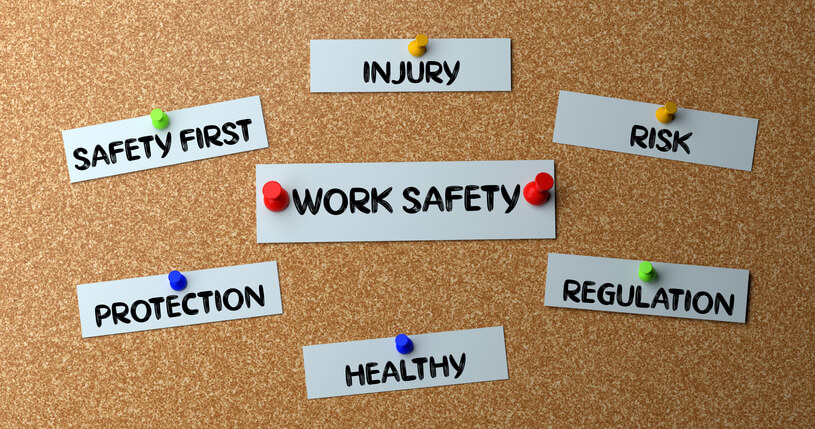
In 2022, private industry employers documented 2.8 million nonfatal injuries and illnesses , according to the Bureau of Labor Statistics.
That number represents real people, and speaks to the real challenges they face in their daily work environments.
That’s why workplace safety is a critical topic for employers— they have to provide consistent and quality safety education and practices. By doing so, businesses protect their most valuable asset— their employees— and foster a culture of safety.
Committing to safety leads to a more engaged and productive workforce, while significantly reducing the negative impacts of workplace incidents.
What are safety topics for work?
Why are safety meetings important, what are some safety meeting topics, choosing a safety topic of the day, harnessing mobile training platforms for safety education.
Safety topics for work are a broad range of subjects that cover information meant to prevent on-the-job injury and illness . These topics vary depending on where you work, but often include general safety practices, proper personal protective equipment (PPE) use, workplace hazards, fire safety, and more.
Workplace safety topics equip employees with the knowledge and skills they need to maintain a safe work environment.
Most workplace injuries aren’t unforeseen events. They can often be predicted and prevented. With this understanding, OSHA now refers to them as incidents instead of accidents.
Although this change in terminology may seem minor, it represents a shift toward proactive prevention . The focus has moved to identifying and addressing hazards before they result in injury or illness . Think of it like putting out a fire after it has caused damage and harm, versus taking measures to ensure fires never start in the first place.
In order to focus on prevention, you must strategically choose your safety topics for work. If you’ve seen an uptick in slips and falls, there might be a housekeeping issue to address. Back injuries might mean getting lifting equipment and focusing on lifting techniques training.
Your safety meeting ideas should follow a predetermined schedule while still remaining flexible enough to address pressing safety concerns quickly.
Understanding the importance of safety meetings as a preventative measure is the first step. You need to have a list of ideas at the ready.
Here’s a curated list of safety meeting topics to help you cover essentials and bolster your refresher training sessions.
General safety
These proactive discussions focus on broad safety practices.
Topics include:
1. Safe lifting and carrying techniques 2. Preventing slips, trips, and falls 3. Reporting incidents 4. Proper lighting 5. Housekeeping in common areas
Proper use of Personal Protective Equipment (PPE)
A meeting on PPE educates employees on the correct selection, usage, and maintenance of safety gear tailored to specific job hazards.
Topics include:
6. Head protection 7. Eye protection 8. Respirator maintenance 9. Face shields and goggles 10. Protective footwear
Workplace hazards
These safety meetings address identifying, assessing, and preventing potential risks.
11. Hazardous materials 12. Machine guarding 13. Fall prevention 14. Repetitive motion injuries 15. Weather-related hazards
Fire safety
During a fire safety meeting, staff learns about fire risks, prevention strategies, and responses to minimize harm during a fire.
16. Fire extinguisher use 17. Fire prevention 18. Fire drills 19. Fire safety in storage areas 20. Fire safety in kitchens and break rooms
Electrical safety
An electrical safety meeting teaches proper handling of equipment, recognizes hazards, and how to implement preventative measures.
21. Electrical hazards 22. Lockout/tagout procedures 23. Power tool safety 24. Working near power lines 25. Electrical safety for office equipment
Equipment and machinery safety
If your workplace involves machinery, it is important to keep your staff up to date on operation, maintenance, and safety protocols.
26. Forklift safety 27.Machine operation 28. Conveyor belt safety 29. Safety with hand trucks and dollies 30. Vehicle safety
Chemical safety
The goal of chemical safety meetings is to prevent accidents and exposure.
31. Chemical handling and storage 32. Spill response 33. PPE for chemicals 34. Chemical labeling 35. Chemical disposal
Emergency response
These meetings prepare staff to act swiftly and effectively during unforeseen incidents.
36. First aid procedures 37. CPR training 38. AED usage 39. Emergency response drills 40. Shelter-in-place procedures
Health and wellness
Balancing both the physical and mental challenges, and how to handle them, are the focus of these meetings.
41. Hydration and heat safety 42. Stress management 43. Mental health awareness 44. Mindfulness practices 45.Work-life balance
Environmental safety
Protect both the workplace and the planet with strategies to ensure a safer and more sustainable environment.
46. Recycling practices 47. Hazardous waste management 48. Paperless initiatives 49. Chemical spill containment 50. Reducing office waste
Workplace culture and safety
Here, the focus is the importance of collective responsibility and communication in creating a safe workplace.
51. Conflict prevention 52. Conflict resolution techniques 53. Mediation and third-party involvement 54. Promoting team bonding 55. Celebrating safety milestones
Remote work safety
Explore how to maintain safety, security, and wellness in a non-traditional work setting.
56. Digital security 57. Mental health for remote work 58. Collaboration and communication 59. Managing team performance 60. Remote meeting security
Cybersecurity and data safety
Highlight the importance of protecting sensitive information with best practices to mitigate risks and prevent breaches.
61. Password security 62. Data privacy and confidentiality 63. Secure file sharing 64. Mobile device security 65. File encryption best practices
Take time to explore enhancing comfort and efficiency in the workplace.
66. Proper lifting techniques 67. Proper lighting to reduce eye strain 68. Supportive seating 69. Ambient noise reduction 70. Adjustable desk height
Heat/extreme weather conditions
Navigate the risks of working in high temperatures using strategies and best practices.
71. Recognizing heat-related illness 72. Hydration and nutrition 73. Work-rest cycles 74. Appropriate clothing and PPE 75. Emergency response to heat illness
Sometimes, despite your best efforts to plan, days become unpredictable. When time is short, you might find yourself asking, “ What is a good safety message for today? ”
Instead of skipping your crucial safety meeting, you can rely on some short safety topics for work. The concept of toolbox talks is perfect in this situation.
Toolbox talks are short, informal meetings focused on specific safety topics designed to be engaging and to the point. They serve as a quick and effective way to address safety concerns, reinforce safe practices, and ensure safety is at the front of everyone’s minds.
Using a mobile training platform to cover workplace safety topics is a game-changing way to put info in the palm of your employees’ hands, without interrupting their work day.
Here’s how a mobile platform can help:
- Access to safety training anytime, anywhere A mobile training app means your staff has instant access to safety information, including offline. They can review information as they need it, and stay up to date on all training initiatives.
- Quick safety updates When there’s something new to learn, or a critical update you need to communicate, a mobile training app allows you to simply send out a push notification to everyone’s phones . The need for coordinating schedules and resources is eliminated, and you’ve avoided blasting out one more email that is left unread.
- Gamified and interactive learning Mobile training apps empower you to teach safety topics in gamified ways that lead to better memory retention: card sets, quizzes, badges, challenges, points, and many more interactive elements.
- Trackable learning From an administrative point of view, it’s critical that you have detailed, data-driven insights into your employees’ safety training . Choose a platform that tracks when employees start and complete their training, how long it takes, and how well they perform on assessments.
Using a mobile app for safety training makes it easier for everyone to learn important safety information in a way that fits into their busy days.
Make safety guides accessible anywhere with a powerful mobile training app

What is a good safety message for today?
A “good” safety message for today is one that is relevant to the industry you’re in, and the specific employees you’d like to address. Some universally good messages are:
- Always be aware of fire exits and where extinguishers are located in the event of an emergency.
- Keep safety exits clear at all times.
- Be sure to tape down cables and cords to prevent trips in the workplace.
What are safety topics for employees?
Safety topics for employees cover a wide range of topics. They aim to prevent accidents and ensure a safe work environment. These can include general safety practices, proper use of PPE, fire safety, and more. Each topic addresses specific risks and gives employees the knowledge and tools they need to work safely.
What are 10 tips for work safety?
Ten essential tips for work safety are:
- Always follow proper operating procedures when using machinery and tools.
- Take regular breaks to avoid fatigue and mistakes.
- Report hazardous conditions to management right away.
- Know your exit strategy in the event of an emergency.
- Never operate machinery under the influence of drugs or alcohol.
- Wear PPE.
- Practice mindfulness and minimize stress.
- Never take shortcuts on procedures.
- Prioritize ergonomics to preserve your health.
- Stay up to date on new safety procedures.
What is a good safety topic for September?
September is National Food Safety Education Month, which emphasizes the importance of preventing foodborne illnesses in the workplace.
Some topics that go along with this are:
- Food hazards and risks
- Handwashing
- Safe food preparation
- On-site food safety
Create safety training your employees can access from anywhere with TalentCards
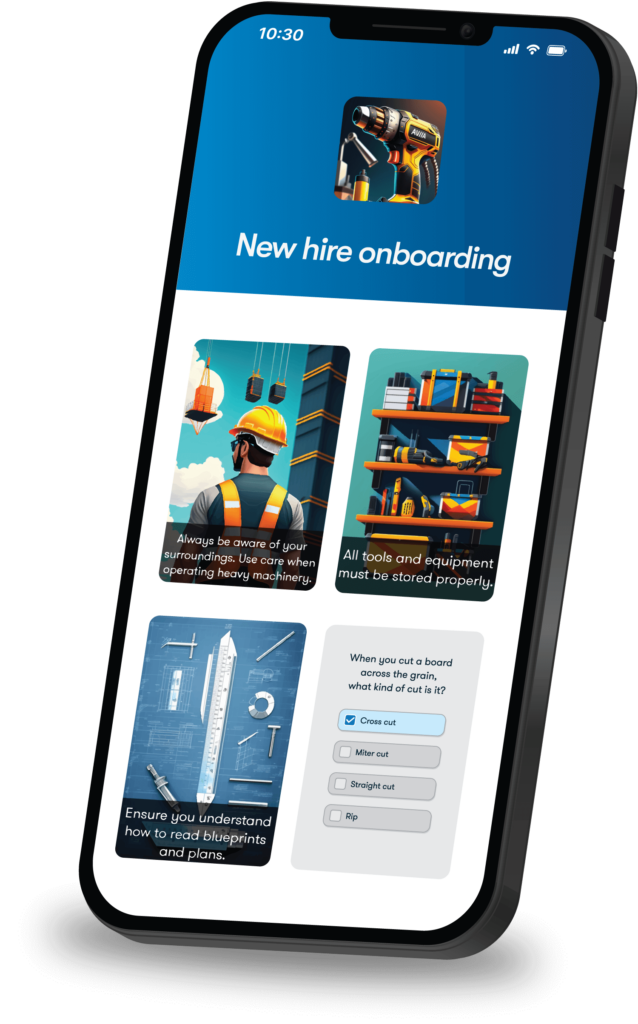
You might also like


- Desktop Pop-up Alert
- Desktop Scrolling Ticker
- Panic Button
- Corporate Screensaver
- Corporate Wallpaper
- Corporate Lockscreen
- SMS Notification
- Emergency Alert
- Digital Signage
- Email Notification
- Extended Reports
- RSVP Invitation
- Video Alert
- Skin Editor
- Mobile Client App
- Technical Support
- Professional Services
- Annual Maintenance
- Engineering
- Hospitality
- Manufacturing
- Oil and Gas
- Change Management
- Email Overload
- Employee Engagement
- Emergency Communications
- Remote Communications
- Compliance Communications
- Internal Communication System
- Crisis Communications
- HR Communications
- Product Overview
- System Requirements
- Templates Library
- Knowledge Base
- AD Integration
- SSO Integration
- API Integration
- Automated Incident Notifications
- MS Teams Integration
- Case Studies
- Become a Partner
- Our Partners
10 min read
Safety Moment Ideas

Creating a safe workplace for your employees is essential. Not only are there legal and moral obligations to do so, but when you have a safe workplace, you are less likely to have absenteeism and more likely to have higher productivity.
Table of contents
What is a safety moment?
Why you should consider safety moments in the workplace
How to make safety moments a success in your organization
30 safety moment examples to use in your workplace in 2024
Keeping staff informed about potential health and safety risks is critical to building a safety culture within your organization. Introducing new concepts to this space can help to bring new enthusiasm and awareness to health and safety.
Many organizations have successfully introduced “safety moments” to their health and safety awareness work.
WHAT ARE SAFETY MOMENTS FOR WORK?
Workplace safety moments are brief exercises or discussions focussed on specific safety-oriented topics held at a dedicated time. This work safety idea is designed to focus attention on particular risks as well as general safety.
Despite the name, they actually take up a few moments of time – usually three to five – and should be short and sharp in their duration. The goal is to get employees to think about and identify any potential workplace hazards and to understand what steps they should take to avoid them. Safety moments for work should have clear and concise information and provide easy-to-understand and actionable steps for employees to follow.
A safety moment is usually a standing item on a meeting agenda. They may be delivered at a weekly team meeting or at the start of the day each day, depending on your industry. They are not designed to take the place of formal safety training but can be used to reinforce such learning.
Organizations that have safety moments for staff are usually involved in industries where there is a high risk of workplace injury or death. Dangerous industries such as construction and manufacturing , for example, have workplaces where employees are exposed to numerous hazards and risks. However, workplace safety moments can be introduced to just about any industry.
WHY YOU NEED A SAFETY MOMENT OF THE DAY
Safety moments are designed to put safety at the front of employees’ minds so that they conduct themselves in a safe way, understanding their responsibilities to have a safe workplace and to reduce and avoid risks and hazards to keep themselves and their colleagues safe.
The benefits of having a safety moment of the day include:
- Being able to reinforce your workplace health and safety policies
- Being able to communicate the consequences of not following safety protocols
- Being able to offer quick and simple “refresher” training that builds on and reinforces more formal safety training
- It can present safety information in an engaging and easy-to-digest way for people with lower attention spans
- Can prevent people from being overwhelmed with too much information all at once
- Building a strong safety culture within your organization.
Read more: Emergency alert system for business
ENSURING THE SUCCESS OF SAFETY MOMENTS FOR MEETINGS
If you plan to introduce safety moments to your organization, there’s a few key steps you can take to ensure that they are useful, engaging and ultimately successful:
- Schedule safety moments at a frequency that suits your company’s needs.
- Use safety moments for meetings as part of other safety awareness campaigns to reinforce messages (or vice versa). For example, you can create screensavers or send pop-up quizzes .
- Use visuals to help keep boost engagement.
- Provide relatable workplace safety scenarios so that people can understand and engage with the content.
- Incorporate personalization if you can to help people empathize with the messaging.
- Always ensure there’s an actionable takeaway in each safety moment for work that employees can use in their day-to-day work lives.
- Include remote workers in your safety tips by sending pop-up video messages .
30 SAFETY MOMENT IDEAS FOR MEETINGS IN 2024
Here are some safety moment ideas that you can deliver in your workplace in 2024:
1. Lifting heavy objects
Many workplace injuries happen when people lift heavy objects incorrectly. People need to understand they must always be careful when lifting heavy objects in the workplace, taking care to use correct posture to avoid back and joint injuries:
- Always bend your knees and keep your back straight
- Hold objects you are lifting close to your body
2. Situational awareness
Situational awareness is an extremely important skill for employees to have in the workplace. This safety moment topic can involve talking about the importance of staying focused on the work that is being done while simultaneously being aware of what is happening in your surroundings. Give tips for minimizing distractions or include safety checklists.
3. Slips, trips and falls
Slips, trips and falls are extremely common causes of workplace injuries. The most common causes are:
- Wet and slippery floor/ground surfaces
- Poor lighting
- Unsuitable footwear
- Unstable walkways
- Tripping hazards being left in thoroughfares.
Provide your employees with the most common slip, trip and fall hazards that are unique to your workplace and the steps that they can take to minimize and prevent these risks.
4. Ergonomics
There are many ergonomic risk factors in the modern workplace that can lead to both long-lasting and acute injuries. It’s important that employees understand these risks so that they can avoid them.
A safety moment for office workers should include the following:
- What sorts of repetitive tasks can cause issues
- How to avoid overexertion
- Why they should avoid sustained awkward postures
- How to adjust their office furniture to reduce risk
- Who in the organization can help provide an ergonomic assessment
- The importance of regular breaks
- What stretches/exercises they can do to combat sitting for too long.
5. Workplace stress
There is a whole range of work-related stress that can cause workplace health issues, including burnout, anxiety, depression, and fatigue. This can include:
- Unsustainable workloads
- Toxic work culture
- Infrequent breaks
With these work safety moments, you should advise employees on how to ask for help, what employee assistance programs are available, and any relaxation and rest techniques that you can deploy to reduce stress.
Measure the level of employee stress by conducting a work stress survey .
6. Wearing appropriate clothing
It is important that all employees wear clothing that is suitable and appropriate for the tasks they are undertaking. This includes:
- Avoiding loose clothing that has the potential to be caught in machinery
- Always wearing the appropriate safety gear for the task (eg: goggles, gloves, helmets, boots, hi-vis vests).
- For outside workers, dress for the conditions (eg: wet weather gear, sunscreen, warm clothing when cold).
7. Awareness of emergency exits and routes
It’s important to take time to remind people about where emergency exits are located and to familiarize themselves with any escape routes in advance of an actual emergency occurring. This way, they can be prepared to evacuate should a critical situation unfold.
Free Download
10 Emergency message templates

8. Workplace drug and alcohol misuse
Employees who are under the influence of drugs and alcohol in the workplace pose a risk to their own health and safety and that of others. When their mental state is impaired, they can cause accidents and fatalities. A safety moment on this topic can:
- Help employees understand the health and physical risks of being affected by drugs and alcohol at work
- The role they have to play in creating a safe work environment that is drug and alcohol-free.
9. Workplace violence
Violence has no place in any workplace, but sadly it can be an occupational hazard for many people. This can be employees being violent with each other or employees being attacked by clients, customers, visitors, and other stakeholders.
This safety minute topic should address what employees can do to keep themselves safe if a work situation becomes violent.
10. Why proper rest is important
Employees who are not well rested at home can be severely fatigued at work. A lack of alertness can lead to a range of health and safety issues that can affect both them and others. Work safety moments on rest should encourage people to ensure they’re getting enough rest for workplace health and safety reasons and schedule regular breaks so they can recharge on the job.
11. Driver safety
Employees who are using company vehicles need to understand the importance of road and driver safety. This includes:
- The most common road hazards
- Driving in severe weather
- Safe and defensive driving practices
- Vehicle safety
- Parameters around driver fatigue
- Zero tolerance for alcohol and drug impairment while operating a company vehicle.
12. Reporting workplace accidents
It’s crucial that employees understand their obligations in reporting any workplace accidents or near misses so that management are aware. This helps to improve safety and is essential for legal and insurance purposes. A safety moment on this topic would give examples of accidents and near misses that should be reported and familiarize staff with the reporting procedures.
13. WORKING WITH HAZARDOUS MATERIALS
Working with hazardous materials can be extremely dangerous and potentially lethal. Employees must understand proper handling, storage, and disposal procedures. A safety moment topic would emphasize:
- the importance of using personal protective equipment, such as gloves and goggles
- the importance of being familiar with material safety data sheets.
14. FIRE PREVENTION
Addressing potential fire hazards and instilling preventive measures ensures both employee well-being and safety and helps to protect the company’s valuable assets. Emphasizing proper equipment usage, emergency protocols, and regular drills fosters a prepared and proactive workforce, reducing the risk of fires.
15. ELECTRICAL SAFETY TIPS
Discussing electrical safety tips in a safety moment educates employees on ways of preventing shocks and fires and reducing any other electrical hazards. Safety moment ideas include:
- regular equipment inspections
- proper use of extension cords
- reporting malfunctions promptly.
16. HEAT STRESS PREVENTION
Heat stress occurs when the body struggles to regulate its temperature, often due to excessive heat. This can be a result of high temperatures in summer time or working in situations, such as fire suppression, where there is a lot of radiant heat.
Addressing heat stress in a safety moment is vital for preventing heat-related illnesses. Suggestions include staying hydrated, taking breaks in shaded areas, and wearing appropriate clothing to ensure a safe and healthy work environment.
17. PARKING LOT SAFETY
Employees must be aware of parking lot safety to prevent accidents, collisions, and ensure a secure environment for everyone. Safety moments examples include:
- adhering to speed limits
- using designated walkways
- maintaining clear visibility
- pedestrian awareness
- security measures.
18. FIRST AID BASICS AND RESPONSE
It’s important for employees to have knowledge of first aid basics to provide immediate assistance in emergencies. First aid is crucial from everything from saving a life through to providing assistance with burns, cuts and broken bones.
Topics could include CPR training, recognizing and responding to common injuries, and creating a first aid kit.
19. SAFE USE OF HEAVY MACHINERY
When employees fail to use heavy machinery properly, it poses severe risks. Accidents, injuries, and equipment damage become likely. Improper operation can compromise workplace safety, lead to financial losses, and result in legal consequences.
Discussing this in a workplace safety moment raises awareness of potential hazards and emphasizes the importance of proper training, maintenance checks, and adherence to safety protocols
20. CHEMICAL SPILL RESPONSE
An appropriate chemical spill response involves immediate containment, evacuation, and notifying designated personnel so that you can keep people and assets safe.
Safety moments can be used to communicate spill response procedures to employees. Stress the importance of reporting spills promptly to minimize exposure risks and ensure a swift, effective response to protect both individuals and the environment.
21. AVOIDING DISTRACTED WORK
Distracted work, caused by factors like smartphone use or multitasking, compromises safety and productivity. Safety moment ideas include stressing the dangers of distractions and encouraging employees to stay focused on tasks. Promote designated break times for non-urgent tasks and emphasize the importance of mindfulness to maintain a safe and efficient work environment.
22. AVOIDING EYE STRAIN
Eye strain can occur in the workplace as a result of prolonged screen use or poor lighting, leading to discomfort and fatigue.
Safety moment ideas include:
- Recognizing symptoms like headaches and dry eyes
- Encouraging regular breaks
- Using proper lighting,
- How to use the 20-20-20 rule (looking at something 20 feet away for 20 seconds every 20 minutes) to reduce eye strain
23. RESPIRATORY PROTECTION GUIDELINES
Respiratory protection is vital to prevent inhalation of harmful substances. In a workplace safety moment, stress the importance of understanding and identifying substances that pose respiratory risk, wearing proper masks and correctly fitting respirators for specific tasks. Educate employees on proper fit, maintenance, and disposal.
24. PREVENTING HEARING DAMAGE
Hearing damage risks in the workplace stem from prolonged exposure to loud noise. In a safety moment, inform employees about the potential hazards, emphasizing the use of ear protection. Encourage regular hearing checks, raise awareness about noise levels, and implement engineering controls to mitigate risks,
25. WORKPLACE WELLNESS INITIATIVES
Many organizations have a wide range of workplace wellness initiatives in place, but don’t always do a good job of promoting them to staff. Leverage workplace wellness initiatives in a safety moment by emphasizing their impact on overall health and safety.
Discuss the benefits of physical activity, stress reduction, and mental health support. Encourage participation in wellness programs, fostering a culture of well-being that positively influences workplace safety, productivity, and employee satisfaction.

26. IMPORTANCE OF STRETCHING EXERCISES
Encourage employees to incorporate regular stretching into their routines, emphasizing its role in improving flexibility, reducing muscle tension, and preventing strains. Promote awareness that simple stretches contribute to overall well-being and enhance workplace safety.
27. IMPORTANCE OF REGULAR EQUIPMENT INSPECTIONS
Regular equipment inspections are vital for workplace safety. Emphasize their importance in a safety moment to prevent malfunctions, accidents, and injuries. Discuss the role of inspections in identifying potential hazards, ensuring equipment reliability, and maintaining a secure work environment. Promoting a routine inspection culture fosters proactive risk management and overall safety awareness.
28. CORRECT USE OF PERSONAL PROTECTIVE EQUIPMENT
Correct use of Personal Protective Equipment (PPE) provides a protective barrier against hazards, reducing the risk of injuries and illnesses.
- How to wear PPE properly
- Compliance with regulations
- Personal responsibility
- Maintaining health
- Preventing exposure to harmful substances
29. FALL PROTECTION MEASURES
Falls in the workplace involve incidents where individuals descend unexpectedly from one level to another. They can occur on stairs, ladders, platforms, or slippery surfaces, posing a significant risk of injuries.
Emphasize its importance in a safety moment to create awareness about proper ladder use, clear walkways, and the significance of fall protection equipment.
30. COLD WEATHER SAFETY
Cold weather safety in the workplace is crucial to prevent hypothermia, frostbite, and accidents. Promote a culture of vigilance and preparedness for working in chilly conditions.
In a safety moment, stress the significance of wearing appropriate clothing, taking breaks to warm up, and recognizing early signs of cold-related illnesses.
Workplace safety moments are a great contribution to your communications activities to build a culture of safety in the workplace. In conjunction with other communications tools, channels and strategies you can make safety front-of-mind in your organization.
To find out how DeskAlerts can help you to deliver vital safety information to staff in an engaging way that cuts through digital noise in the workplace, get in touch with our team of experts for a free demo today.
WHAT IS A GOOD SAFETY MOMENT FOR A MEETING?
A good safety moment for a work meeting is one that is topical and relevant to the people you are talking to. For example, office safety moments may include work station ergonomics, while in a chemical plant you may want to talk about working with hazardous materials.
WHAT'S A GOOD SAFETY TOPIC FOR WORK?
Good safety topics for work meetings are anything that will help to keep employees safe while on the job and should be relevant to the work that is done and the industry it is done in.
WHAT ARE THE 10 SAFETY TIPS TO BE PRACTICED IN THE WORKPLACE?
The top 10 safety tips for the workplace are:
- Reducing stress
- Always operate tools, equipment and machinery correctly
- Always use the appropriate personal protective equipment
- Stay sober and free from drugs in the workplace
- Understand what to do in an emergency
- Report all accidents and near misses
- Always be aware of your surroundings
- Take regular breaks
- Drive safely
- Follow processes and procedures.
WHAT IS AN EXAMPLE OF SAFETY AT THE WORKPLACE?
An example of safety in the workplace is identifying hazards and taking steps to remove them.
What are some good safety moments?
Safety moment examples to use in your workplace include:
- Lifting heavy objects
- Situational awareness
- Slips, trips and falls
- Workplace stress
- Wearing appropriate clothing
- Awareness of emergency exits and routes
- Workplace drug and alcohol misuse,
What is a good safety talk?
A good workplace safety talk addresses specific hazards, emphasizes preventative measures, encourages active participation and reinforces the importance of a safety-conscious mindset among employees. It should be engaging, relevant, and promote a culture of responsibility and awareness.
What is an example of a quick safety moment?
A quick safety moment for today could involve reminding employees to wear personal protective equipment, discussing the proper techniques for lifting heavy items, or highlighting the location of emergency exits. It's a brief, focused reminder to enhance safety awareness in the workplace.
What are good topics for safety meetings?
Good safety moment topics for meetings include emergency preparedness, hazard communication, workplace ergonomics, electrical safety, fire prevention and proper use of personal protective equipment. Addressing these topics help to promote a culture of safety within an organization and also aids in reducing workplace risks.
What is a safety moment for a work meeting?
A safety moment for a work meeting is a brief discussion or presentation focused on a specific safety topic. It aims to raise awareness, reinforce safe practices, and encourage employees to keep safety front-of-mind and make it a priority.
Send urgent notifications to any corporate devices: PCs, phones, tablets, etc.
The high visibility combined with our 100% delivery rate guarantee. Bypass information overload. Deliver key information even if the computer is on screensaver mode, locked or sleeping.

Posts by Tag
- Alert Software (43)
- Best Practices (13)
- Business Continuity (8)
- Change Management (22)
- Communication in finance (6)
- Communications Feedback Solutions (27)
- Construction Industry (5)
- Corporate Communication Strategy (27)
- Corporate Communication Tools (28)
- Corporate compliance (6)
- Corporate lockscreen (3)
- Corporate screensaver (4)
- Corporate wallpaper (5)
- COVID-19 (30)
- Crisis Communications (6)
- Cybersecurity (25)
- Desktop Alerts (16)
- Desktop Alerts Software (28)
- Digital signage (5)
- duty of care (4)
- Education (10)
- Email overload (17)
- Emergency Alert System (69)
- Emergency communications (19)
- Employee Communication (25)
- Employee Communication Channels (15)
- Employee Engagement (42)
- Employee quiz (2)
- Employee survey (4)
- Executive communications (6)
- Government Industry (6)
- Health and Safety Training (4)
- Healthcare (22)
- Helpdesk (26)
- Hospitality (1)
- HR Communications (57)
- Improve Corporate Communication (428)
- Internal Communication Best Practices (117)
- Internal Communication Channels (29)
- Internal Communication Plan (12)
- Internal Communication Strategy (26)
- Internal Communication Tools (50)
- Internal Communications (46)
- Internal marketing communications (4)
- Internet Security (41)
- IT communications (15)
- IT Issues (23)
- IT Outage (23)
- Manufacturing (5)
- Mass notification (28)
- Mobile App (2)
- MS Teams (2)
- New Release (1)
- Organizational culture (9)
- Pharmaceutical industry (1)
- Pop-up alerts (7)
- RSVP alert (3)
- Safety Culture (7)
- Security Awareness Training (18)
- SMS Notifications (1)
- Staff training (5)
- Strategy-Internal Communication Tools (2)
- Telecom (1)
- Video Alert (3)
- Workplace Safety (5)
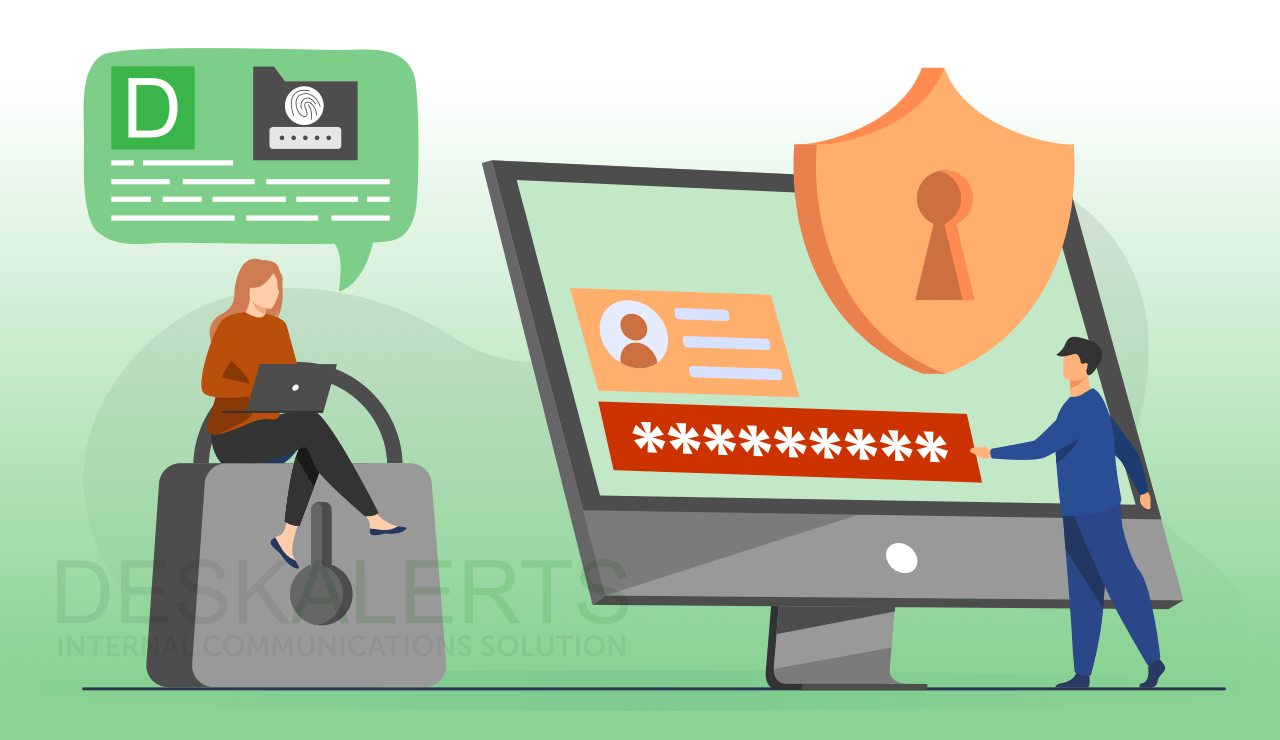
10 Best Practices: Corporate Password Policy
How to Improve Employee Welfare?
Employee welfare is an important investment for your company. Your company’s greatest assets are its people. When you look after your people, you’re...

Help Desk Problems
IT helpdesks in large organizations are often extremely busy places, with staffing and budgetary issues that can affect the ability to deal with...
- Skip to primary navigation
- Skip to main content
- Skip to primary sidebar
- Skip to footer
SafetyRisk.net
Humanising Health, Safety and Risk
How to Give an Unforgettable Safety Presentation
June 3, 2019 by George Robotham 2 Comments
How to Give an Unforgettable Safety Presentation (Failure is not an option)

The following has been assisted by formal learning / Education but largely represents critical reflection on the writer’s personal practice. The people who say an amount of it is based on the writer’s stuff-ups would be quite correct
- The number one thing you must do is identify your audience’s needs, the number 2 thing you must do is satisfy those needs
- “When reading your correspondence the reader must say “Wow” in the first third of the page”
- “When listening to your presentation the listener must say “Wow” within the first 3 minutes”
- Most of us are not naturally gifted speakers and need some assistance to make an impact. The following will make your presentation unforgettable-
- Do not focus on what you are going to talk about but focus on your outcomes, objectives and end results (What you have achieved for the participant)
- If you want to get exposure as a speaker volunteer
- Preparing a speech-Talk to the audience first, demonstrate an unique perspective, orientate to the future, be provocative , use relevant aids, let your audience know you have done your homework
Getting relevant input for your speech, ask 3 questions-
- What is the biggest challenge you are facing in your job?
- If you could change just one thing tomorrow what would that be?
- What advice would you like to give a new person in your job?
- Preparing a speech-Outcomes, time frame & requirements, key learning points, rough draft, supporting stories, aids and examples, build the opening and conclusion ,practice the speed and adjust the timing.
- Need to define and articulate how you will improve the participants condition.
- .The key to a successful presentation is identifying and meeting the needs of your audience. You need to define your objectives and the desired outcomes.
- Have a variety of presentation styles to cope with differing learning styles.
- It helps to appeal to your audiences emotions-Power, pride, courage, self interest, convention, posterity, sociability
- Use clear, simple messages
- Good visual aids are clear, simple, original, easy to see, easy to grasp, stimulating, creative, reinforce your messages
- Good messages will trigger an emotional response
- Use facts to support your message but do not use facts as the message
- Super prepare for an important presentation, particularly rehearse your opening & conclusion so it comes out strong & clear
- Sometimes some comment on why you are qualified to talk on this topic is appropriate
- At the beginning tell them what you are going to do and how you will do it.
- Research the topic thoroughly bearing in mind that not everything you find on the internet will be credible. As well as looking at the theory it helps to talk to people who have practically implemented strategies.
- Throw in a bit of humour
- Have an interesting anecdote that touches the emotions of my audience. The following is something that got me a lot of applause with a Canadian audience on a talk about safety
- Hold up an Australian $ 100 note (worth about $95 Canadian)
- “Who would like me to give you this $ 100 note?
- Show of hands
- Crumple it up
- Who would like me to give you this $ 100 note?
- Stand on it, jump on it and grind it into the ground
- That right, it still has value despite what has been done to it and many people want it
- YOU are like this $ 100 note, throughout your life trying to improve safety there will be many people who put you down and try to grind you into the dirt
- Remember that YOU, like the $ 100 note still have value despite what others have tried to do to you and many people will want you.”
- Note The storey above is adaptable to a wide range of situations with a bit of thought and adaptation
- Know your audience, know their needs and fill those needs
- Have a strong opening and conclusion
- Make a conscious effort to slow down your speech to slightly slower than normal conversation
- Use a few Power-Points but not “Death by Power-Point”. Make the size of the font readable down the back of the room. A lot of people get annoyed if you stand in front of them and read out what they can easily see on the screen. A bit of clip art and colour helps to liven up the power-points. Leave your power-points on screen long enough to be read.
- Try to build in a range of activities for the participants that reinforce your message. A controversial question for discussion is sometimes useful
- Rehearse your presentation sufficiently that you do not have to refer to your notes too often, you thus maintain eye contact with your audience.
- Make it fun not hard work
- Treat your audience with respect
- Do not try to cram too much information into too short a time frame, people will become overloaded & give up. Concentrate on the MUST KNOWS
- Have learning objectives and plan to meet those objectives
- Avoid lecture style presentations where you read from your notes unless the presentation is very short, suggest a maximum of 5 minutes. Instead prepare speakers notes ( big enough for you to read them in poor light) with key points and talk to the key points, this will require a bit of rehearsal. Alternatively use the key points on your power point presentation as your notes, pays to have the hard copy notes as a back up just in case for a number of reasons that could crop up when you rely on technology, you cannot use the power-points.
- Sometimes a “Where to from here” is appropriate at the end
- If time permits encourage questions
- Always pilot your presentation and react to comments
- The idea is for the audience to get lost in the topic, give them word pictures they can relate to
- Give something of yourself eg. a personal storey, to build rapport with the audience
- Focus on audience needs and use words appropriate to those needs
- Always identify the range of the audience and target your presentation appropriately
- Identify the purpose of the presentation and the one, single message you want to transmit. Paint a picture to give the message
- A good approach is to make a point and then tell a storey about that point or tell a storey to make a point. Indigenous people are good storey tellers and this is a powerful technique.
- Use pauses and silence to emphasise points
- Have links between sections so audience can see where you are going
- If you have practical exercises that require participants to give feedback have a roving microphone person.
- Check out the venue beforehand in case any adjustments to your presentation are required.
- Try to get the audience close to you.
- Go along and see learn how the professional speakers do it-For me Laurie Lawrence, Nick Farr-Jones and General Norman Schwarzkopf were fantastic and could be learnt from.
- The presentations that seem so easy and natural only got that way through lots of work, rehearsal and preparation.
- Do not be surprised that you have to spend 5-10 times in preparation as presentation.
The Use of Humour
- Laughter is the best medicine!
- Much is written about the benefits of humour, you can look it up on the internet if you like. I will not mention this here as I am sure you will have a good intuitive idea of what I am talking about.
- In the days when I used to work in the mining industry I remember being in a meeting in Rockhampton about a series of personal damage occurrences (“Accidents”) that had occurred. Two representatives of the company that manufactured the equipment involved were in attendance along with a number of industry Safety Advisers. The manufacturer representatives would not acknowledge that the design of their equipment was a factor and were spinning us their company line about how safe their equipment was. Tempers progressively got more frayed and we were getting nowhere. My workmate Terry Condon came out with a classic, humorous one-liner that defused the tension and set the scene for meaningful progress.
- That was the first time I have seen humour used in a meaningful way in business. I watched Terry in action after this and noted his frequent effective use of humour.
- Humour can be used effectively in formal and informal presentations and in general interaction in business and non-business life.
- Avoid humour that focuses on religion, politics, race, class, sex, age, physical appearance. To use any of these will run the risk of upsetting someone. I hear you asking what the hell else is there that I can use? The only safe butt of your humour is yourself! You can also use mythical people whose characteristics you do not describe.
- There are joke books you can buy but storeys from daily life are more acceptable.
- Be funny early and often.
- Introduce the humour in the general flow of your conversation.
- For a major presentation rehearse and listen to yourself on a tape recorder.
- Like many things in life humour follows the 6 P rule-Prior Preparation Prevents Piss-Poor Performance.
- If giving a major presentation have a small pilot first and respond to the comments you receive.
- Try to use humour that relates to things others see as an annoyance.
- Know your audience and try to relate to them.
- Quotations from famous people are often sources of humour, you can search these on the internet, Laurie Lawrence’s web-site has a lot of quotations.
- Stretching the truth is forgivable.
- Do not take yourself too seriously.
- You can use a storey to illustrate a point.
- The Readers Digest and t.v. comedy shows are good sources of material. It also helps you to observe how the professionals use humour.
- Poking fun at the establishment may be an appropriate and inoffensive way of using humour.
- Appropriate self-disclosure can be an effective way of enhancing communications and interpersonal relationships. I was introduced to and practised appropriate self-disclosure in a Psychology subject. You will find in a new relationship if you reveal a little bit of you (provided it is appropriate)the other party will reveal a little bit of them(provided it is appropriate), if you then reveal a little bit more of you(provided it is appropriate) they will reveal a little bit more of them (provided it is appropriate), and so the cycle goes on. This is very simple, incredibly effective and I use it all the time to build relationships. Of course if you really hang all your dirty washing out it will probably stuff up the process.
- Telling a humorous storey about yourself can be a great way of starting the appropriate self-disclosure process. If you show you are prepared to pile crap on yourself it will influence how you and your message are perceived.
- Being an OHS person I attend a number of safety conferences and courses, these are inevitably dull, dry and boring affairs. It is a pity things are taken so seriously! Perhaps the same thing happens in your speciality? If you are a presenter who uses effective humour, presents well and has a relevant message you will be invited back.
The presentation secrets of Steve Jobs (Ex-C.E.O. of Apple)
- Transmit passion for your topic
- Write out the 3 key messages you want your audience to receive
- Offer evidence or testimonials, have third party reviews
- Use video where you can
- Early up answer the question about why your audience should care
- Rally people to a better future
- Use groups of 3 rather than long lists of topics
- Introduce an antagonist, reveal the conquering hero who makes life better
- Give an experience not a presentation
- Your audience checks out after 10 minutes, give them something different or something to do
- Keep it simple
- Use photos wherever possible
- Paint a picture, the more strikingly visual your presentation the more people will remember it
- The brain switches off to boring things, use variety
- Deliver what you promise
- Give credit to your helpers
- Use demonstrations
- Reveal a Holy S # 1 t moment
- People remember how you made them feel not what you said
- Use a minimum of notes so you maintain eye contact with the audience
- It only looks effortless when you put in a hell of a lot of practice
- Try to anticipate questions
- Relentless preparation is the way to beat nerves
- Never read out a prepared speech
- Latest Posts
- More about George

George Robotham
Latest posts by george robotham ( see all ).
- Psychology and safety - February 19, 2024
- Psycho-social workplace issues - February 6, 2024
- Psychometric Testing and Safety - January 13, 2024
- Icebreakers and Games that Safety Trainers Play - September 8, 2023
- Safety Culture and How to Improve it - July 1, 2023
Please share our posts
- Click to print (Opens in new window)
- Click to email a link to a friend (Opens in new window)
- Click to share on LinkedIn (Opens in new window)
- Click to share on Facebook (Opens in new window)
- Click to share on Reddit (Opens in new window)
- Click to share on Pinterest (Opens in new window)
- Click to share on WhatsApp (Opens in new window)
Reader Interactions
Ndilimeke Shiwayu says
May 25, 2022 at 12:07 AM
I would like to get example of safety presentation
Rob Long says
May 25, 2022 at 4:54 PM
If you need to be spoon fed on how present, then you will never present well.
Do you have any thoughts? Please share them below Cancel reply
Top posts & pages.
- CATCHY and FUNNY SAFETY SLOGANS FOR THE WORKPLACE
- 500 of THE MOST EFFECTIVE HEALTH and SAFETY SLOGANS 2024
- SAFETY MEMES
- How to Calculate TRIFR, LTIFR and Other Health and Safety Indicators
- FREE RISK ASSESSMENT FORMS, CHECKISTS, REGISTERS, TEMPLATES and APPS
Recent Posts
- Linguistics and responsibility transfer
- Toilet Safety
- Frames of Mind and How the Mind Frames Risk
- The Significance of C.G. Jung for The Social Psychology of Risk
- Uncommon Sense
VIRAL POST!!! HOW TO QUIT THE SAFETY INDUSTRY

FEATURED POSTS
Understanding goal states, motivation and spor, a video, ten secrets to risk and safety motivation and ownership, myth and symbols in safety, free safety and risk lunch n learn, tackling the reality of harm.
More Posts from this Category
VIRAL POST – The Risk Matrix Myth
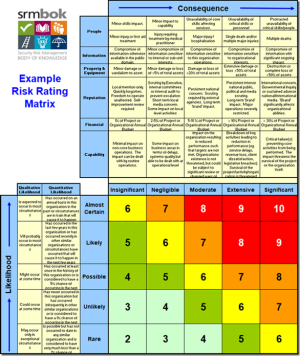
WHAT IS PSYCHOLOGICAL SAFETY?
What is Psychological Safety at Work?
Discover more from SafetyRisk.net
Subscribe now to keep reading and get access to the full archive.
Continue reading
18 Workplace Safety Topics for Meetings to Discuss
In 2020, the U.S. had 2.7 million nonfatal workplace injuries, as the Bureau of Labor Statistics reported.
That's a lot! So, we need to take safety seriously.
This blog is here to help busy folks who struggle to find time for long safety meetings. Instead of adding more to your schedule, we suggest squeezing in quick safety talks during your regular meetings. It's a smart way to make sure everyone's on the same page about staying safe.
Why are these meetings so important? Well, they're not just about following rules. They help create a vibe where everyone looks out for each other. It's like a team effort to keep the workplace safe and sound.
These meetings are where we share important info, discuss experiences, and determine how to avoid problems.
Now, let's get into the nitty-gritty. We've got seventeen topics that are perfect for short safety chats. We're talking about simple things like making sure your workspace is comfy and more serious stuff like spotting dangers.
Our goal? To give you practical tips that you can easily use every day. This blog is like a guide to making your workplace safer. It's not just about doing what the rules say; it's about ensuring everyone plays a part in keeping things safe. So, let's dive in together and make your organisation a safe and healthy workplace .
What are Workplace Safety Meetings?
Toolbox talks, often known as workplace safety moments, can address a range of subjects. They can discuss topics such as managing risks on the job or acquiring a healthy work environment .

Safety discussion is a crucial subject for office workers. It is a commitment to fostering a safety culture in the office and on dangerous job sites. An organized safety meeting:
- Educates the public about workplace dangers and safety measures
- Allows evaluation of previous safety-related occurrences
- Enables people to remain vigilant and aware of dangers
Leaders in the workplace can use workplace safety meetings to reiterate safety policies. They can introduce new safety requirements and raise employee knowledge of potential dangers.
Before work begins, a safety meeting or toolbox talk may clarify current and new staff expectations. The topics covered in typical safety meetings range from general advice to industry-specific safety regulations.
Any industry can hold safety meetings. The following, however, may require frequent meetings due to their greater emphasis on worker safety:
- Landscaping
- Material Handling
- Public Utilities
- Industry and manufacturing
- Construction
- Security and policing
- Firefighting
- Healthcare Facilities
- Oil and Gas Industry
- Waste Management
- Forestry and logging
Why Are Meetings About Workplace Safety Important?
Meetings about workplace safety are crucial because they help keep employees safe. Employees can learn about potential workplace safety hazards and how to prevent them during these meetings. All employees will be informed of the various safety regulations and standards thanks to safety meetings.
Suggested Read: Workplace Health and Safety: Ways to Incorporate It

The greatest time to impart new knowledge or in-depth safety instruction is not during a safety moment. Instead, these moments should be used to teach the fundamentals of safety to your staff consistently. Doing this will show everyone that safety is important and build a strong safety culture.
Stats and Facts

The United States Bureau of Labor Statistics reported-
- Five thousand one hundred ninety fatal work injuries in 2021, an 8.9% increase from 2020.
- Injuries and illnesses reported by employers were 2.6 million in 2021, a 8% decrease from 2020.
- Payroll jobs increased in 8 states, while unemployment rates rose in 12 states and declined in
- In September 2022, the average cost of union benefits in the private sector was $21.24 per hour worked.
- Hiring rates decreased in 8 states while increasing in 5, and job vacancies decreased in 15 states.
- November saw a 0.6% drop in U.S. import prices and a 0.3% drop in export prices.
18 Workplace Safety Topics for Meetings to Discuss in your Next Meeting

A company's safety meetings can be tailored to meet specific needs and address ongoing safety concerns. Start by discussing accidents in your office premises or safety guidelines employees usually disregard.
Creating a diverse list of topics to include in your training modules is essential. If you want to ensure that you cover all workplace safety factors that apply to employees, here are 17 safety topics for your next meeting on workplace safety:
1. Building Safety:

The security of the building can be improved by reducing entry points for visitors. Only allowing employees with proper authorization into the premises can aid in fostering a safe environment. Typically, a secure workplace satisfies the following standards:
No unauthorized entry : According to this, only those with a visitor's badge can enter the building without authorization. This frequently applies to the corporation's employees, such as suppliers and business associates.
Securing doors : The establishment's doors are locked during regular business hours to avoid unwanted entry. Employees can enter with a key, keycard, or code.
PPE refers to the protective clothing and equipment (hard helmets, hand protection, eye protection, etc.) that employees wear to keep themselves safe. It is, therefore, essential to inform them about its benefits.

Having your staff use personal protective equipment (PPE) correctly is one of the easiest methods to ensure their safety. Prescription glasses, shielded hearing aids, foot and arm guards, and other safety gear must all be discussed and instructed on.
Having workers wear hard helmets is a good idea if objects can fall during work.
3. Safety Training:
Many workers need safety training of some kind. Some jobs and sectors may have higher requirements than others. Meetings are a fantastic opportunity to remind staff members of the necessary training, check their current status, and give simple safety advice.
In your meetings, bring up the subject of opportunities and requirements for safety training. In addition to promoting safety behaviors, investing in safety training for your staff demonstrates your appreciation for them. It gives them a chance to advance their skills.
4. Reducing slips, trips, and falls:
These are typical occupational dangers. A lot goes into it, including slick surfaces, dim lighting, and improper footwear. Remind employees to be aware of these risks and invest in fall protection measures. This will help them to prevent unnecessary injuries.
5. Mental Health and Stress:
The health and safety of employees at work now depend on their mental health and psychological security. It's a good idea to check in with employees. You should monitor their mental health and remind them of the services available during meetings. Remind employees they can always share their feelings privately if they don't feel comfortable sharing them publicly.

A significant portion of workplace health problems is caused by work-related stress, exhaustion, sadness, and anxiety. Various circumstances, including uneven task patterns, toxic cultures, infrequent breaks, and many others, can cause stress and pain.
Try the following to lessen stress at work:
- Seek assistance from a mental health expert.
- Explain psychological issues to your team members.
- Try meditating and other relaxing methods.
A good workplace culture fosters discussions about stress management and finding work-life balance.
Suggested Read: Workplace Stress: A Huge Issue For Companies Worldwide
6. Stacking:
At offices, when items are stacked improperly, they are stacked in a way that could tip the pile over. The main danger associated with this practice is the possibility of things shattering and falling on someone. In your safety meetings, you can review proper stacking techniques and spot a possibly compromised stack.
7. Heat Exhaustion:
It's crucial to inform workers about heat exhaustion and heat stroke, especially those who work in an environment where they may be exposed to extreme temperatures or other elements.
Consider providing a water cooler and offering staff operating in high-risk regions a chance to escape the heat briefly. These conditions with extreme heat are caused by dehydration and prolonged exposure to the sun. Additionally, you can instruct staff members on the symptoms of heat exhaustion and stroke.
8. Fire Safety:
Safety officials should be bold in reminding employees of the significance of fire safety. They should also inform the employees about the fundamental best practices they need to know in case of a fire.

This is not compulsory in every meeting, but a quick reminder now and then is always helpful. So, it's beneficial for your staff to understand the following:
- Whereabouts of fire extinguishers
- Usage of fire extinguishers correctly
- Fire Drills
- Quick escape routes in case of emergency
Addressing their concerns by including them in your safety meetings is imperative.
9. Reporting Accidents:
Urging employees to promptly and accurately report potential incidents is critical. Encourage reporting of incidents and offer readily available safety gear. This can reduce the number of dangers an accident presents and enable qualified personnel to address it swiftly.
10. First Aid:
Employees at every level can gain from having first-aid expertise. Even something as simple as stopping bleeding can benefit the team. Also, knowing how to conduct CPR can save lives.
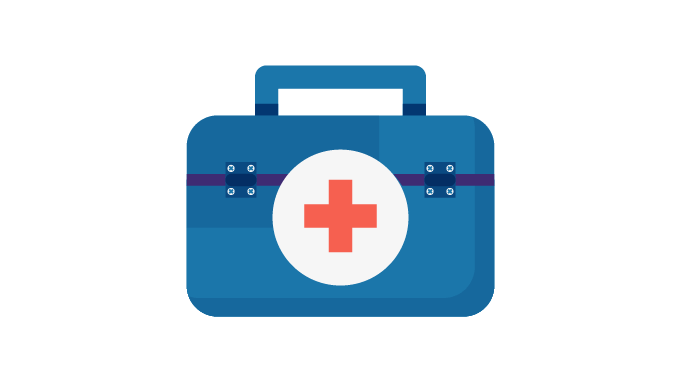
Consider providing first aid training and letting the workforce know where to get the company's supplies, defibrillators, and other related tools.
11. Workplace Ergonomics:
Workplace ergonomics is a major concern in almost every office. Even individuals who work from home should invest in comfortable furniture. They should look for laptop stands and seats to prevent the development of musculoskeletal disorders (MSDs).

For workers, poor ergonomics can have disastrous effects. Safety officials must communicate with the employees to know if there is anything the organization needs to do better.
12. Workplace Violence and Harassment:
Violence in the workplace can result from disruptive behavior by staff, clients, visitors, or customers. This violence may be a physical act or threat, intimidation, harassment, and even murder. The policies and procedures that firms must follow during safety meetings to cope with violent workplace acts should be covered.
It is crucial to have a zero-tolerance policy, and you must inform all departments frequently. Employers may also want to offer training so the employees can identify toxic behaviors and learn more about them.
13. Long Shifts and Work Fatigue:
The pandemic has significantly influenced employees’ mental health. The epidemic has resulted in lengthier workdays or shifts for many people (nurses, for example, have seen their workloads increase substantially).

Over time, this may cause problems like exhaustion or even burnout. These problems continue to be widespread even without the pandemic. During meetings, try to discuss mindful resources and breathing exercises, and practice sessions for your employees.
14. Electrical Safety:
Electricity-related accidents frequently result in fatalities. Every employee should understand how to use electrical tools and equipment at work. Any safety conference must cover the repercussions of working with live wires without appropriate safety equipment or being negligent around them.
Suggested Read: Implementing 9 effective Tips for Electrical Safety at Work
15. Drugs on the Job:
Employees who use drugs at work are much more likely to sustain injuries. As we know, the use of drugs has several negative effects. Taking drugs at work results in greater vulnerability to accidents, work turnover, time loss, decreased attentiveness and productivity, and unexplained absences.
So, you should devise drug policies to keep your employees alert. But will they understand the specifics of your drug policy?
For instance, When will you conduct drug tests? What role do prescription drugs play here? Everyone will agree if these issues are discussed, and staff members sign a formal policy. Then, your staff will know that you expect them to report to work sober.
Suggested Read: A Definitive Guide On Employee Drug Testing
16. Lock Out/Tag Out procedure:
Proper locking and labeling are required when machines undergo maintenance or cleaning procedures. Employees can use a tag to identify a machine as being "locked out" while being cleaned or repaired. Also, you must include every employee in any discussion about locking out machines. This can ensure that nobody tries to operate a device that might break down or act erratically.
17. Communications Issues and Safety:

Lack of communication among employees might result in mishaps. Clarifying the obligations outlined in a company's safety program can be done well through toolbox talks or pre-work safety seminars.
- Safety and Health at Work
Workplace health and safety is a shared duty. Both employers and employees are responsible for maintaining workplace safety. Meeting topics like the ones mentioned above are a great way to communicate these responsibilities.

Ensuring employees work in a safe atmosphere is every employer’s responsibility. Usually, safety protocols are put in place to do this. Additionally, employers must have workers' compensation insurance.
18. Anti-Phishing Awareness
Every year, there are more phishing attacks. In these attacks, hackers send fake messages pretending to be someone else. Their goal is to get into systems or resources they're not supposed to access.
It's not like traditional hacks that use fancy code or software problems. Instead, phishing relies on tricking people through social manipulation. Training employees to recognize phishing attacks can save your company a lot of money, time, and problems.
How to Effectively Communicate Workplace Safety Practices?
In workplace safety, it's crucial to understand how to communicate information about risks and safety training effectively. This helps both bosses and employees get the most out of safety meetings.
Aim for the following to run an effective workplace safety moment:
Engage your audience : The initial few minutes of a safety briefing should be a two-way conversation between you and your staff. Recognize their worries and provide them a chance to ask questions.
Not providing them with manuals : - Reading from a safety manual doesn't sound much fun. It suggests you must prepare for an engaging and fruitful conversation before the meeting.
Establish a schedule : It's best to prepare and do your homework in advance. It's also more effective to demonstrate what you're trying to teach them in a presentation.
Talk about relevant safety topics : Avoid discussing subjects unrelated to your job.
Many businesses discover that having a weekly safety meeting gives their workers consistency and keeps safety at the top of their priorities.
You may update your employees' understanding of vital safety information in just a few minutes. Your firm will benefit from a safety culture you create by implementing safety moments. You can incorporate these safety meeting topics into your daily or weekly meetings.

This article is written by Daina Barman who is a content writer and marketer at Vantage Circle . Besides being an epicure trying to cook every dish possible, she likes to dance her way around everything. To get in touch, reach out to [email protected]

Vantage Fit - A complete AI-Powered Solution for seamless implementation of your Corporate Wellness Program to nurture a healthy and engaged workforce

Schedule a Vantage Fit Demo
How Corporate Wellness Program can Help Your Organisation

Discover Personalized Corporate Wellness Solutions Today !
Talk To an Expert
Get Corporate Wellness Tips

Subscribe to our blog today

A comprehensive guide for launching successful and engaging employee wellness programs that foster employee health and wellness.
Download Corporate Wellness Guide
- Skip to primary navigation
- Skip to content
- [email protected]
- (213) 409-9197

- OSHA 10-Hour Construction
- OSHA 10-Hour Construction – Spanish
- OSHA 30-Hour Construction
- LOW PRICE $99 OSHA 30-Hour Construction Training (Spanish)
- New York OSHA 10-Hour Construction Training
- New York OSHA 30-Hour Construction Training
- Group Discount

Best Safety Moment Ideas for 2024
Constructing a safe and secure place of work for employees is highly imperative. Yet, it is a fact that having a safe workplace is not only a legal and moral requirement, but it also increases the employees’ productivity and decreases absenteeism. That shows that keeping employees informed about the potential hazards and instructing them about health and safety topics helps in cultivating a safety culture in every organization. However, incorporating fresh safety moment ideas for meetings can stimulate interest in and understanding of health and safety.

In this article, you will learn the best safety moments ideas for 2024 as well as the importance of why organizations need safety moments ideas for meetings.
Understanding Safety Moments
A quick talk or presentation on a particular safety issue is called a “safety moment” at a work meeting. It aims to increase knowledge, reinforce safe procedures, and motivate employees to prioritize and keep safety first. However, safety moment ideas are concise talks, targeted discussions, or activities that are designed to emphasize the importance of workplace safety. These moments are brief but quite powerful and easily grab workers’ attention and motivate them to take an active role in establishing a safe workplace.
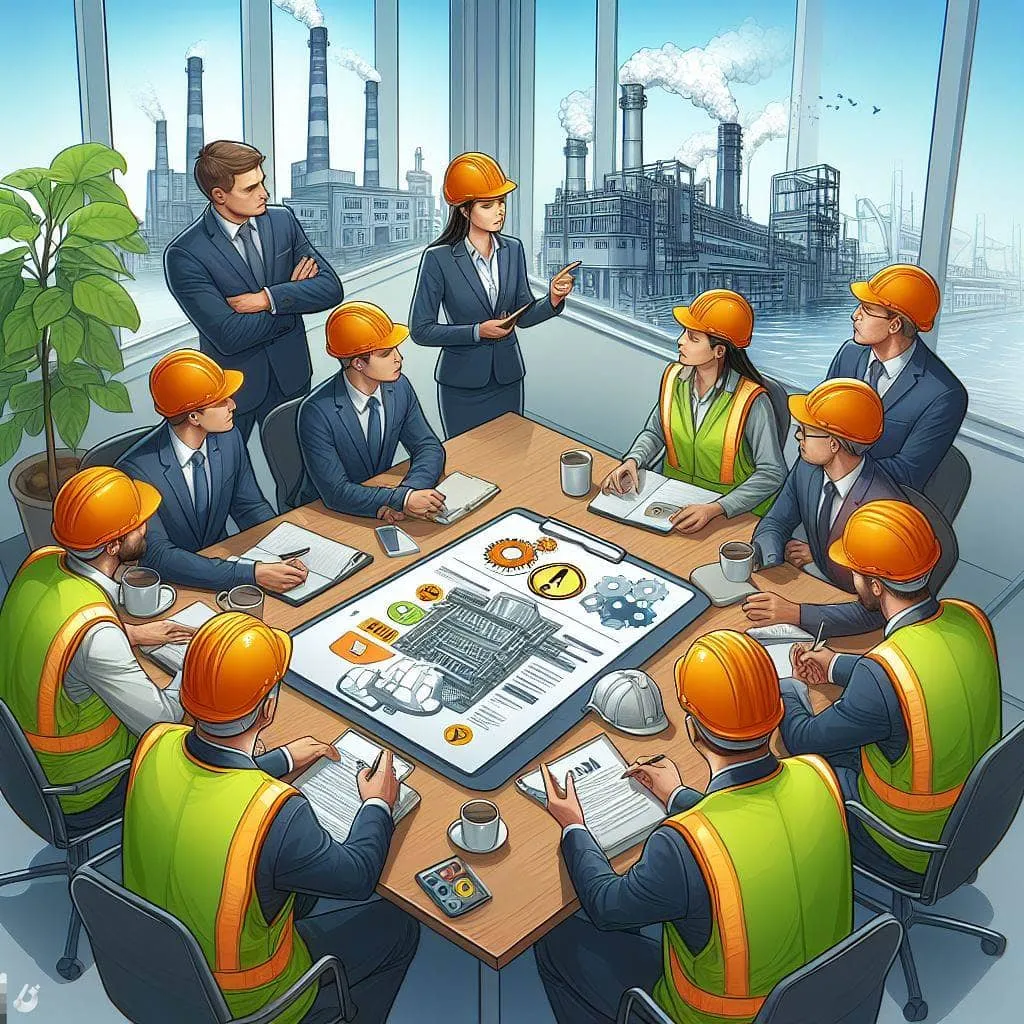
The essence of safety moment ideas lies in their versatility, as they can take various forms, including presentations, hands-on demonstrations, or interactive activities. These moments focus on specific safety topics to bring attention to potential hazards, best safety procedures, and the overall health and safety culture within an organization.
The incorporation of safety moment examples into regular routines is a key to their effectiveness. Whether these moments are conducted daily or weekly, these moments make sure that safety remains at the forefront of employees’ minds and also foster a heightened awareness of potential risks and preventive measures. Safety moments can cover a broad spectrum of topics, ranging from general safety guidelines to more specific discussions addressing unique hazards within particular work environments.
8 Safety Moment Ideas for 2024
Here you will read seven safety moments topics for meetings to discuss with your employees. So, without further ado, let’s delve into this read!
1. Lifting Of Heavy Objects
When heavy items are lifted improperly, many industrial injuries occur. People must realize that in order to prevent back and joint injuries, they always need to consider precautionary measures while lifting heavy objects at work and pay attention to proper posture, for instance; always maintain a straight spine posture and bend your knees or when lifting something, keep it close to your body.

2. Slips, Trips, And Falls
Slips, trips, and falls are another most common workplace hazards that cause severe accidents and injuries at the workplace. This safety moment will help the employer explore the causes of these incidents and provide practical tips in order to maintain the secure workspaces and give them safety ideas they can employ. The main motive of these meetings is to reduce the occurrence of preventable accidents in the workplace. However, safety moment ideas for office topics will include proper housekeeping, the use of non-slip footwear, and the significance of addressing spills promptly.
3. Situational Awareness
One of the most crucial abilities for workers to possess on the job is situational awareness. The safety moment topic may include discussing how important it is to maintain attention to the task at hand while also being conscious of your surroundings. Provide safety checklists or advice on how to reduce distractions. You can also do a safety moment presentation explaining how crucial situation awareness is when it comes to preventing accidents.
4. Ergonomics
In the modern workplace, there are numerous ergonomic risk factors that can result in both acute and chronic injuries. It is imperative that workers comprehend these hazards to mitigate them. Office workers should have a safety moment that includes the proper understanding of different work tasks, which include; what kinds of repetitive work can lead to problems? How to prevent overexertion and the reasons behind avoiding prolonged awkward postures? How to modify the furniture in their office to lower risk? Who is qualified to assist with an ergonomic assessment within the organization? What stretches and exercises can be used to prevent prolonged sitting?
5. Workplace Stress
Unfortunately, stress remains an unusual safety topic for meetings as they are mostly focused on physical health. However, addressing workplace stress is crucial for the overall well-being of employees. This safety moment idea for meetings helps employers explore different types of workplace stressors that impact employee performance. In these meetings, workers will learn practical tips for stress management, emphasizing the importance of seeking support when needed and creating a work environment that prioritizes mental health.
6. Misuse Of Alcohol And Drug
When it comes to safety moment ideas for meetings, intoxicating material shouldn’t be a taboo topic. Workers who are impaired by alcohol or drugs at work endanger not only their own safety and health but also the health and safety of others. They are more likely to be responsible for accidents and fatalities when their mental condition is compromised. On this subject, a safety moment can be: Employees should be educated on the potential physical and health effects of using substances such as alcohol and drugs at work, as well as their responsibility to maintain a drug- and alcohol-free workplace.
7. Fire Prevention Techniques
Taking preventive measures and addressing any fire threats contribute to protecting the company’s valuable assets as well as the safety and well-being of its employees. Promoting appropriate equipment use, emergency procedures, and frequent drills encourages workers to be proactive and well-prepared, which lowers the potential of fires.
8. Electrical Safety Tips
This safety moment will highlight the importance of electrical safety in the workplace. In this kind of discussion, you will learn the common causes of electrical accidents, such as faulty wiring and damaged equipment, and emphasize the necessity of proper training and adherence to safety protocols when working with electricity. Practical tips for identifying and mitigating electrical hazards will be covered.
Short Safety Talks: They Are Necessary For Workplace Safety
In any organization, prioritizing safety through regular safety moments yields numerous benefits. Firstly, it establishes a culture of awareness and responsibility where employees actively contribute to maintaining a safe workplace. Secondly, it reduces the likelihood of accidents, injuries, and workplace incidents, ultimately saving the organization from potential legal and financial consequences.
Additionally, safer situations boost employee satisfaction and morale. Employee engagement and productivity are higher when they perceive that their well-being is valued. Furthermore, an organization’s reputation is improved by its dedication to safety, which makes it a desirable place to work for prospective workers and a reliable partner for stakeholders and clients.
Safety moments are essentially an investment in an organization’s long-term viability and performance. Organizations that promote a culture of safety not only safeguard their most valuable resource, which is their workforce but also establish themselves as leaders in their field.
This proactive approach to safety cultivates an environment where open communication and knowledge sharing thrive, ultimately contributing to the development of a robust safety culture within the organization.
At last, it has been concluded that safety moments are indispensable tools to promote a secure and healthy work environment. The eight safety moment ideas offer a diverse range of topics that address the various aspects of workplace safety to ensure a comprehensive approach to managing risks. It is no offense that these safety moments are one of the best contributions to hazard communication activities at construction sites. You may put safety at the forefront of your organization’s priorities by combining it with other communication tools, channels, and tactics.
Incorporating these discussions into regular meetings will contribute to building a safety-conscious culture and empower employees to actively participate in maintaining a secure work environment. That is why enrolling in safety courses like OSHA 30 Hour Construction New York is the best way to promote safety worldwide.
You may also like

Details to Acquire Job With OSHA
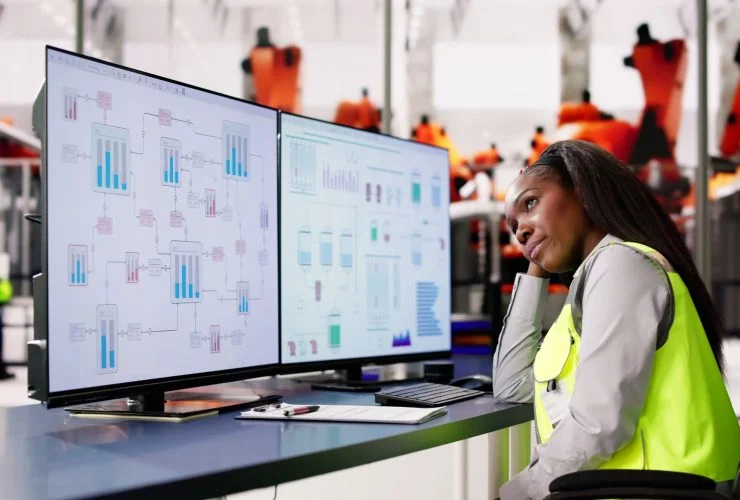
Workplace Stress Statistics: Understanding the Problem
- Corporate (76)
- Financial services (144)
- Industrial & manufacturing (152)
- Retail (123)
- Education (139)
- Healthcare (138)
- Government & public sector (141)
- Hybrid workplace (102)
- Frontline workers (16)
- Culture & engagement (98)
- Appspace AI (13)
- Better office experience (88)
- Consolidate your tech stack (60)
- Appspace for Microsoft (10)
- Appspace for Google (1)
- Virtual Experiences
- In-Person Experiences
- Hybrid Experiences
- Attend a Demo
- Experience FAQ
- Features & Benefits
- How Pricing Works
- Client Testimonials
- Happiness Guarantee
- Schedule Call
- View Experiences
18 Workplace Safety Games to Educate Employees
By: Michael Alexis | Updated: August 23, 2024
You found our guide to workplace safety games.
Workplace safety games are engaging activities that teach employees safety knowledge and procedures. For example, the Slip and Fall Game, Safety Puzzle Race, and Emergency Equip Relay. The purpose of these games is to make learning about safety procedures fun. These games are also known as “company safety games” and “health and safety games.”
These activities are a subset of team building games and employee wellness programs and are similar to work competition games and employee safety tips .

This list includes:
- company safety games
- corporate safety games
- creative safety games
- employee safety games
- fun safety games
- health and safety games
Let’s get started!
List of workplace safety games
From trivia to hands-on challenges, here is our list of fun games that teach employees about workplace safety.
1. Slip and Fall Game
The Slip and Fall Game highlights the risks of falling at work. Participants spot hazards that may cause accidents. When planning this game, create cards that have possible falling hazards on them. Examples include wet floors, cluttered walkways, or improperly maintained equipment. Teams will compete to identify fall hazards and solutions around the office. You can award points for each hazard players notice and fix. Whoever earns the most points wins!
By playing this game, teammates will learn to spot safety issues at the workplace and correct them. Plus, this activity promotes critical thinking and creates a safety-conscious culture.
2. Safety Quiz Show
A Safety Quiz Show makes learning about safety enjoyable and informative. Employees answer questions on workplace safety. To run this activity, create safety-related questions about hazards, emergency procedures, and protective gear. You can use visuals or videos during the quiz. Then, split players into teams. Groups will go head-to-head to answer as many questions correctly as possible.
Here are examples of questions:
- How should you lift heavy objects to prevent back injuries? Answer : Bend at the knees, keep the back straight, and lift with your legs
- How do you prevent slips, trips, and falls? Answer : Keep walkways clear and use signage
- What’s the first step in handling a chemical spill? Answer : Contain the spill to prevent further spread
Teams that earn the most points win! This activity encourages cooperation and teaches participants about workplace policies.
Check out more quiz games .
Get our free team building toolbox
- icebreaker games
- bingo cards

3. Fire Extinguisher Challenge
The Fire Extinguisher Challenge mixes learning with fun. Participants get hands-on practice using a fire extinguisher in a controlled setting. First, gather the team in a safe area. Next, show a quick demo about how to use a fire extinguisher. Hosts will hold the device, pull the pin, aim at the fire’s bottom, and sweep side to side. Each participant can take a turn using a practice fire extinguisher.
Using props, you can even create a simulated fire situation, like a controlled fire. Participants can put out the “fire” using the extinguisher. This hands-on exercise helps workers feel more prepared and confident if they ever face a real fire. Be sure to combine this exercise with information on fire safety and emergency procedures.
4. Safety Puzzle Race
The Safety Puzzle Race brings teams together and reinforces important safety rules. Participants form teams and get a set of puzzle pieces representing safety practices or hazards. Puzzles could depict electrical, fire, and fall hazards. You can even order a custom puzzle featuring industry-specific issues. The goal is to put the puzzle together correctly within a time limit. As teams work on the puzzle, they talk about and learn different safety measures. This interactive game makes learning enjoyable and encourages employees to focus on safety.
Similarly, here are Amazing Race ideas .
5. First Aid Bingo
First Aid Bingo combines Bingo with important first aid knowledge. Participants get Bingo cards with different first aid scenarios. Players can mark off Bingo squares as hosts discuss workplace policies and procedures. The first player to complete a specified pattern, like a line or full card, wins!
Here is an example of a Bingo card:
Get Just the Bingo Card
This game boosts awareness of first aid practices. By playing, participants learn how to respond to emergencies. First Aid Bingo also encourages teamwork and communication. As employees play together, they discuss safety scenarios. In turn, colleagues foster a sense of responsibility for each other’s well-being.
6. Hazard Hunt
Hazard Hunt is one of the top health and safety games for work. Players search for potential dangers in their work environment using a checklist. For instance, teams can search for slippery floors, improperly stored chemicals, or sharp objects. Participants can earn a point for each hazard they spot, and whoever gets the most points wins!
This activity helps workers become more aware of safety risks and encourages them to take action to prevent accidents. Playing the game also promotes teamwork and communication among employees. Overall, Hazard Hunt is a fun way to improve safety awareness and foster a culture of safety in the workplace.
Important Note: Be sure to correct any hazards workers identify while playing this game.
Here are more office scavenger hunts .
7. Escape Room: Safety Edition
Escape Room: Safety Edition blends the excitement of an escape room with important lessons about staying safe at work. Hosts will lock participants in a simulated work environment. Teams must solve puzzles to escape while facing various safety hazards.
To set up this escape room, choose a large enough space. Next, think of safety hazards you want to include, like slippery floors or exposed wires. Finally, create puzzles or challenges related to the hazards. You can use props like caution signs or safety equipment to make the game more realistic. Clues should lead to the solution of each puzzle and ultimately to the “escape.”
The game boosts teamwork and problem-solving and raises awareness of workplace dangers.
Read more about how to create a DIY escape room at work .
8. Emergency Equip Relay
The Emergency Equip Relay helps employees improve their preparedness and teamwork skills. In this relay, teams must navigate through different stations that simulate emergencies.
For this exercise, start by splitting players into teams. Then, set up safety-related stations. For example, players might need to correctly identify the type of fire extinguisher needed for a specific fire. Another idea is for participants to demonstrate how to properly use a first aid kit. Once a player finishes their task, their next teammate takes one on. The first team to complete the relay wins!
This game encourages quick thinking, communication, and problem-solving skills. Further, players get a chance to test their knowledge under pressure, boosting their confidence.
9. Safety Charades
Safety Charades is one of the most fun safety games that promotes learning. To play this game, start by writing a list of safety scenarios on slips of paper. Examples include giving CPR, finding emergency exits, and practicing stop, drop, and roll. Participants act out safety scenarios while their teammates try to guess the behavior. Whoever earns the most points wins!
This game encourages teamwork and reinforces important safety protocols. By turning safety information into an entertaining activity, Safety Charades teaches players important skills.
Here is a general Charades prompt generator .
10. Pin the First Aid Kit
Pin the First Aid Kit puts a fun twist on the traditional Pin the Tail on the Donkey. To play this game, create a large poster or drawing of a first aid kit and hang it on a wall. You can give participants a sticker or cutout representing the missing item in the first aid kit. Examples include a bandage or a pair of scissors.
Players will put on a blindfold and spin around a few times. Then, folks will try to put the item in the correct spot in the first aid kit. You can offer a prize to whoever gets closest to the correct placement! This game reinforces the importance of knowing where to find essential first-aid supplies.
11. Safety Equipment Match-Up
Safety Equipment Match-Up is one of the best creative safety games that teaches employees about safety gear. When setting up this game, start by making a list of safety equipment. Next, make a separate list of descriptions or situations where folks might use the items. Players will match each piece of equipment with the correct description or scenario. Whoever has the most correct matches wins! This game helps employees understand how to use safety gear and where to find it.
12. Safety Video Trivia
Safety Video Trivia is a fun workplace training game. Participants watch safety videos and answer trivia questions about them. Videos could cover topics like proper PPE use, emergency procedures, or health and wellness. You could choose to have workers play individually or in teams. Be sure to give a prize to whoever earns the most points!
This activity encourages active learning. Instead of just watching the video, participants must focus on the safety topics. This exercise helps folks remember important information better. Further, trivia is a great way to encourage friendly competition among teams.
13. Electrical Safety Game
The Electrical Safety Game is a fun way to teach employees about staying safe around electricity at work. In this game, participants face different scenarios involving electrical hazards. Folks must make decisions to stay safe.
Hosts will present different situations involving electrical hazards, like frayed wires or overloaded sockets. Each player must decide what they would do to stay safe in that situation. For example, workers might choose to unplug the device or ask for help from a qualified colleague. After the team makes their decisions, discuss the best actions to take. You can give points for good choices to make it more exciting. The individual or team with the most points at the end wins! By playing the Electrical Safety Game, the team learns how to be safer around electricity in the workplace.
14. Chemical Handling Race
The Chemical Handling Race is one of the best employee safety games that teaches employees how to handle chemicals at work. In this game, players compete to finish tasks related to chemical handling as quickly as possible.
When planning this game, set up different stations with tasks related to handling chemicals safely. For example, one station might involve correctly labeling chemical containers. Another might require players to demonstrate how to wear protective gear. Players then race against each other to complete these tasks as quickly as they can. The player or team that finishes all the tasks correctly in the shortest time wins! By playing the Chemical Handling Race, the whole team learns important safety procedures for working with chemicals.
Important Note: When playing this game, you can use water in place of harmful chemicals since workers are still learning.
15. Workplace Clean-up Challenge
The Workplace Clean-up Challenge is a fun game that promotes safety and teamwork. To play this game, split employees into teams. Then, assign areas of the workplace for groups to clean within a time limit. You can even place hidden hazards in each zone that teams need to watch out for. Judges can score teams based on how well they clean, follow safety rules, and work together. Corporate safety games like this keep the workplace safe and encourage players to take care of their spaces.
16. Safety Poster Contest
The Safety Poster Contest encourages employees to think about safety and be creative. Employees design posters about safety topics. To organize the contest, choose themes like identifying hazards or using protective gear. Participants can either use art supplies or digital tools to create posters. You can have a voting contest to award prizes! Best of all, you can display posters around the workplace as reminders of safety rules. This game makes participants more aware of safety and encourages teamwork and creativity.
17. Safety Role Play
Safety role play is a helpful activity at work where employees practice safety procedures. During this exercise, split players into teams. Then, assign each team a safety scenario. Examples include fires or chemical spills. Performers will react as if they are responding to a real emergency. To gamify this activity, you can give a prize for the best performance.
This game helps folks think quickly and improve how they handle emergencies. Role play also strengthens teamwork and communication among coworkers.
Here are more theater games for work .
18. Hazard Avoidance Maze
The Hazard Avoidance Maze is one of the top company safety games that helps employees learn about potential dangers and how to stay safe. In the game, participants navigate through a maze filled with hazards like slippery floors or exposed wiring. The goal is to reach the exit without encountering any hazards. This game is interactive and helps them make decisions to protect themselves. Employees become more aware of real workplace dangers and learn how to handle them better. After playing, it is important to talk about what teams learned to reinforce safety rules. Overall, the Hazard Avoidance Maze is a helpful tool for teaching safety skills.
Final Thoughts
Workplace safety is a serious concern that companies should emphasize. Playing engaging safety games encourages employees to learn and remember important information. You can adapt several of these games to fit different industry needs. In addition, these activities pair well with safety workshops or lessons. Overall, these exercises create an informative and exciting learning experience.
Next, check out our posts on employee wellbeing surveys , workplace complacency , and Mental Health Awareness Month ideas .
Book wildly fun team building events with expert hosts

FAQ: Workplace safety games
Here are frequently asked questions about workplace safety games.
What is the purpose of workplace safety games?
The purpose of workplace safety games is to teach employees about workplace hazards, emergency protocols, compliance rules, and safe practices. These exercises are an effective way to teach or practice safety skills.
How often should you play workplace safety games?
Employees should play workplace safety games when new hires come aboard or leaders modify policies. These exercises can also help reinforce existing knowledge.
What are the benefits of playing workplace safety games?
Playing workplace safety games teaches important safety lessons. Further, these exercises strengthen communication and promote health consciousness.
Can you play workplace safety games remotely?
Several workplace safety games are great for remote teams. Examples include Safety Video Trivia and Safety Equipment Match-Up.
How can workplace safety games improve work culture?
Workplace safety games mix learning with play, which is a more enjoyable process for most folks. This method increases the likelihood that employees will remember the information presented to them. In addition, playing such games promotes a culture where workers view safety as more than checklists and protocols.
Author: Michael Alexis
CEO at teambuilding.com. I write about my experience working with and leading remote teams since 2010.
Hi, I would like to explore this training puzzle,let me know how to get this. I am working as Manager – Environment, Health & Safety in Saint-Gobain.
Regards Santhosh
Leave a Reply Cancel
Your email address will not be published.
CEO at teambuilding.com.
I write about my experience working with and leading remote teams since 2010.
- 45,000+ clients including Apple, Amazon, Google and NASA
- 50,225+ five star reviews on Google
- #15 on Inc 5000's List of Fastest Growing Private Companies in America for 2022
- 80+ happy remote employees
We lead wildly fun experiences for teams with 1,000,000+ players to date.

4.96 / 5.0 rating on
50,225 Google Reviews
Get our free team building tool box
$49 value at no cost..
- May as well check it out?
- 100+ tested icebreaker questions
- 24+ themed Bingo generators
- 5+ PDFs (including the 8% Rule)
- 2024 team building calendar and more...

Enter your email for instant access
Fitment Service
- 3D showcase
- Dealer locator
- SHOP BY CATEGORY Tonneau covers cargo management bed protection styling spare parts Sale View all products
- SHOP BY LIFESTYLE Active Family Mountain Biking Camping Kayaking / Boating Work Surfing
- NEW RELEASES New amarok accessories Next-gen ford Ranger accessories US Truck Accessories

Find your truck
- Career opportunities
Your cart is empty

9 Work Ute Storage Ideas For Tradies
Explore top work ute storage ideas for tradies! From heavy-duty toolboxes to customisable drawers, discover efficient solutions for organising tools and gear. Tradies often face the challenge of keeping their work utes organised and efficient. Without proper storage space, tools and equipment can become difficult to find, increasing downtime and reducing productivity. Effective storage solutions not only improve efficiency but also enhance safety on the job. In this article, we'll explore a range of innovative work ute storage ideas to help you keep your gear organised and secure.
1. Heavy-Duty Toolboxes
Heavy-duty toolboxes are essential for any tradie looking to keep their tools secure and organised. There are several types of toolboxes to consider:
Under-Tray Toolboxes: These are mounted underneath the tray of the ute, providing storage without taking up space in the tray itself. They are ideal for storing tools that you need quick access to.
Side-Mounted Toolboxes : Attached to the sides of the ute tray, these toolboxes offer easy access to your tools while keeping them secure.
Sliding Drawer Systems: These systems allow you to slide out the toolbox for easy access to your tools. They are perfect for organising a large number of smaller tools. You could also consider utilising the Mountain Top Slide instead of a sliding draw, which combines convenience with safety. Especially for fleet businesses.
Pairing heavy-duty toolboxes with a quality tonneau cover can provide additional protection from the elements and keep your tools out of sight, reducing the risk of theft. Heavy-duty toolboxes keep your tools safe from theft and the elements, ensuring they are always in good condition when you need them.
2. Customisable Cargo Management Systems
Customisable drawer systems can be a game-changer for organising your work ute. Here are some options to consider:
Modular Drawer Systems: These systems allow you to configure the drawers according to your needs, making it easy to organise different types of tools and equipment.
Adjustable Dividers: These help you to create specific compartments within the drawers, ensuring that everything has its place.
Lockable Drawers: For added security, lockable drawers ensure that your tools are safe from theft.
3. Roof & TUB Racks and Cargo Bars

Roof racks and cargo bars can expand your storage options significantly. They are ideal for carrying larger items and freeing up space in the ute bed:
Fixed Racks : These are permanently installed on your ute's roof and are great for carrying ladders, pipes, and other bulky items. Consider options like the Mountain Top Ladder Racks to go with the fixed ute roof rack for durable and reliable storage solutions.
Crossbars: These provide additional support for carrying heavy loads. The Mountain Top Cross Bars are perfect for adding extra carrying capacity and stability.
Ladder Racks: Specifically designed for carrying long bulky items for trade, these racks make transporting long items safer and more convenient. Check out the Mountain Top Ladder Rack for a sturdy and efficient solution.
Utilising roof racks and cargo bars helps you maximise your ute's storage capacity and keep the tray free for other tools and equipment.
4. Tool Organisers and Caddies
Tool organisers and caddies are perfect for keeping smaller tools and accessories in order. Here are some popular options:
Tool Belts: These keep your essential tools within reach at all times.
Hanging Organisers: These can be attached to the sides of your ute or inside toolboxes, providing easy access to frequently used tools.
Portable Tool Caddies: These are great for carrying tools to and from the job site, ensuring you have everything you need in one place.
Effective use of tool organisers and caddies can greatly improve your efficiency on the job.
5. Utility Drawers and Shelving Units
Utility drawers and shelving units provide versatile storage solutions for tradies:
Vertical Shelving: Ideal for organising larger items and keeping them upright.
Under-Bed Drawers: These drawers make use of the space underneath the ute bed, providing hidden storage for tools and equipment.
Side-Access Drawers: These are mounted on the sides of the ute and provide easy access to tools without having to climb into the tray.
Utility drawers and shelving units help keep your tools organised and easily accessible.
6. Cargo Nets and Tie-Down Straps
Cargo nets and tie-down straps are essential for securing equipment during transport:
Bungee Cords: These flexible cords are perfect for securing lightweight items.
Ratchet Straps : These provide a secure hold for heavier items.
Adjustable Nets: These can be used to cover and secure larger loads, preventing them from shifting during transport.
Using cargo nets and tie-down straps ensures that your tools and equipment arrive at the job site safely and undamaged.
7. Slide-Out Trays and Shelving

Slide-out trays and shelving systems provide easy access to items stored in the back of your ute:
Slide-Out Trays : These trays slide out from the ute bed, making it easy to access tools and equipment without climbing into the tray. The Cargo Slide serves as an excellent option again, offering both convenience and durability.
Shelving Systems: These systems can be customised to fit your needs and provide organised storage for various items.
Slide-out designs maximise space and improve accessibility, making them a practical storage solution.
8. Mobile Workbenches
Mobile workbenches can be a valuable addition to a work ute:
Foldable Designs: These workbenches can be folded up for easy storage and transportation.
Built-In Storage: Many mobile workbenches come with built-in storage compartments for tools and equipment.
Portability: These workbenches are easy to move around the job site, providing a convenient workspace.
Mobile workbenches are perfect for on-site repairs and projects, offering a versatile and portable solution.
9. Weatherproof Storage Solutions
Protecting your tools and equipment from harsh weather conditions is crucial:
Waterproof Toolboxes: These toolboxes are designed to keep your tools dry in wet conditions.
Sealed Containers: These containers protect your gear from dust and dirt.
Weather-Resistant Covers: These covers protect your tools from sun damage and other weather-related issues.
Investing in weatherproof storage solutions ensures that your tools remain in good condition, regardless of the weather.
10. Safety and Security Measures

Safety and security are paramount when it comes to storing tools and equipment in your ute:
Lockable Storage Units: These units provide a secure storage solution to store your tools.
Security Alarms: Installing an alarm system can deter theft and tampering.
Anti-Theft Measures: Additional measures, such as padlocks and security cables, can further protect your tools.
Tonneau Covers: Secure cargo protection is essential, and the Mountain Top EVOe Tonneau Cover is an excellent choice. With no external handle or keylock and a unique hinge design, the aluminium slats are 100% knife-proof, providing an extra layer of security for your tools and equipment.
Ensuring the safety and security of your storage solutions helps protect your investment and gives you peace of mind.
Investing in effective storage solutions for your work ute is crucial for improving efficiency, safety, and productivity. From heavy-duty toolboxes to mobile workbenches, there are numerous options available to suit your specific needs. Assess your storage requirements and consider implementing the solutions discussed in this article to keep your tools and equipment organised and secure.
For more information on ute accessories and storage solutions, visit Mountain Top Australia and explore our range of tonneau covers , cargo management, cargo slides , and UTE racks for work.

- College Football
- Football/Soccer
- Pro Wrestling
- Buffalo Bills
- Miami Dolphins
- New England Patriots
- New York Jets
- Baltimore Ravens
- Cincinnati Bengals
- Cleveland Browns
- Pittsburgh Steelers
- Houston Texans
- Indianapolis Colts
- Jacksonville Jaguars
- Tennessee Titans
- Denver Broncos
- Kansas City Chiefs
- Las Vegas Raiders
- Los Angeles Chargers
- Dallas Cowboys
- New York Giants
- Philadelphia Eagles
- Washington Commanders
- Chicago Bears
- Detroit Lions
- Green Bay Packers
- Minnesota Vikings
- Atlanta Falcons
- Carolina Panthers
- New Orleans Saints
- Tampa Bay Buccaneers
- Arizona Cardinals
- Los Angeles Rams
- San Francisco 49ers
- Seattle Seahawks
- NFL Betting
- Watch The NFL
Sports. Honestly. Since 2011
Funny fantasy football team names.
- August 26, 2024
Mike Kashuba, Editor

No one will remember your salary, how hard you worked or your job title. They will remember your funny fantasy football team names. Here’s a list of the best ones to be remembered by.
Team Specific
- Bearly Winning
- Steel-ing the Show
- Sex Panther – 60% of the Time, Works Every Time
- Spare a Couple Bucs
- Patron Saints of Football
Most NFL teams don’t have easy puns, but if you’re fan of one of these teams they’re worth a shot. The real money is made with the player specific puns. Bears fans should follow along with Isaac Zuniga who submitted their name. Anchor Man references will be funny until the end of time. At least in good leagues they will be.
Player Specific
- Griddy Griddy Bang Bang
- McConkey Tonk Badonkadonk
- Kmet Your Match
- Bijan Mustard
- London Bridge Came Falling Down
- Here Kittle Kittle
- The Dak Side
- Just the Tua Us
- Like a Good Nabers
- Pat and Geno (For the Philly/Seattle Crossover we didn’t know we needed)
- My Team is Purdy Good
Justin Jefferson’s celebration has become an international sensation. While Ladd McConkey might not have the same star power, a country pun about a Georgia Alumni might be a crowd pleaser. Just don’t be the guy that uses Hock Tua like everyone else in the world. Kmet and Tua might not make the impact to fantasy teams that we’re looking for, but the names are good enough for puns even if they bounce around waivers all year.
Puka Nacua took the league by storm in 2023, and now his name is gold for team names. Whether it’s Puka Boo, I Ate Too Much and Puka’d, or anything else you can imagine it’s pretty fun.
Pop Culture References
- Jakobi-Wan Kenobi
- Tua Infinity, and Bijan
- Zay My Name Zay My Name
- Dalton Abbey
- Mr. Rodgers Neighborhood
- Mayfield of Dreams
- I’ve Got a Fast Carr
- Scottie Doesn’t Know
- Running Up That Hill
Perfect for the Star Wars nerd, Disney nerd or Downton Abbey fan in your leagues. Whether your team has Zay Flowers, Zay Jones, or if there’s another Zay floating around you’re really passionate about, Zay My Name will work for you. Or draft Scottie Miller for the vibes alone. Songs, movies, whatever floats your boat these names will get you right.
Other Funny Fantasy Football Team Names
- All Aboard the Gus Bus
- Get Wright Game
- Give Me Moore
- Austin Bowers
- Waddle Baby Waddle Baby Waddle
- Chase-ing a Championship
- Mother Maye I
- Mayo Man (Perfect for Patriots or Will Levis fans)
Gus Edwards has a strong chance to be the RB1 in a run heavy offense. But more importantly, his nickname is delightful and we should all climb aboard. Jaylen Wright made the handcuff list for 2024, and his speed alone will make him a waiver wire option before long. Bottom line, don’t be the nerd that has “team last name” as your name all fantasy football season long.
Main Photo Credit: Sam Navarro-USA TODAY Sports
Chargers Defense Backups Impress in Final Week of Preseason
The backups on the Chargers defense had a strong night against Trey Lance and the Cowboys in the final week of the preseason.

Will Chiefs, Chargers Meet Trade Price For Saints Playmaker?
Bleacher Report’s Alex Ballentine believes the Saints could still trade Marshon Lattimore and receive a decent return.

Saints, Ravens Could Target Recently Cut 2nd Round Pick
The Cincinnati Bengals cut Jackson Carman, but the offensive lineman could find a new home in the coming days.

Veteran Safety Comes Out of Retirement, Dominates Preseason
The National Football League is a young men’s league. However, Former Ravens safety, Tony Jefferson is back to prove he can still play at 32.
Send Us A Message
More information
Stock updates, did you know.
Spring 2023 sees Nutrien reach 23,500 employee milestone. Learn more
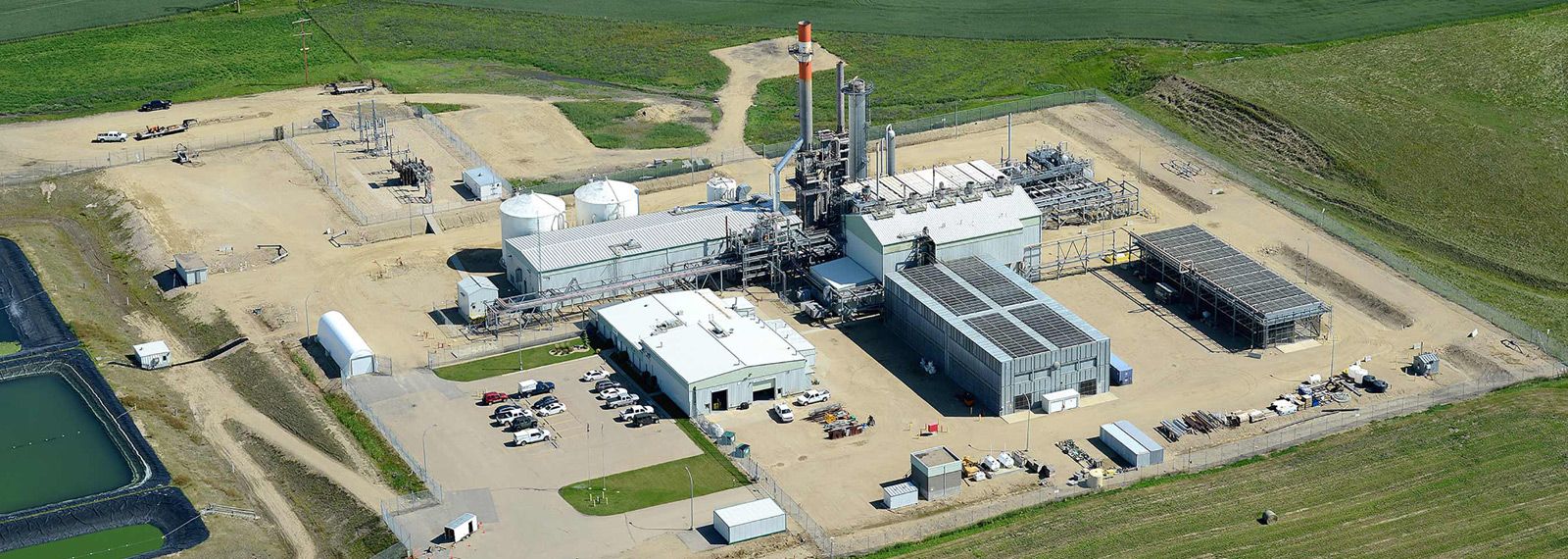
Joffre Nitrogen Operations: our safety culture in action
How does a major industrial site go a full decade without a lost-time incident? By never giving safety a day off.
That’s the word from leaders at Nutrien’s Joffre Nitrogen Operations and Chigwell Distribution Terminal in central Alberta, Canada, which reached the 10-year milestone on October 13th. The facilities also marked three years without a recordable injury on November 15th.
“We’re deliberate and methodical about safety, every day. For example, we meet every morning to talk about what’s planned for the day,” explains Jennifer Mercer, General Manager. “It's a team conversation that asks the question, ‘Is there something specific about the tasks we're doing – whether it’s maintenance, operations, engineering or procurement – that need an additional safety focus?’”
A lost-time incident is logged when an employee or contractor needs to miss work due to an injury they sustained while on the job. A recordable injury is one that needs professional medical attention beyond standard first aid. Going 10 and three years respectively without such incidents is a major accomplishment, says John Horne, Vice President, Safety, Health, and Environment.
“I want to congratulate the Joffre and Chigwell teams for reaching these important milestones and thank them for consistently walking the talk on our safety culture,” John says. “Making sure everyone goes home safe, every day, clearly isn’t just a slogan for them, it’s a fundamental part of who they are.”
In addition to making safety a central part of every conversation, Jennifer points to the team’s commitment to the principle of stop work authority as another key component of the Joffre and Chigwell safety culture.
“It’s well established around here that we are going to stop work and make sure that we are 100 percent aligned before proceeding,” Jennifer says. “We also regularly ask the question, ‘What are we missing?’ before we do any work. Openness and communication are key.”
That focus on communication is particularly important in light of the fact that the Joffre Nitrogen facility and its Chigwell distribution terminal are 20 kilometers apart, says Myrna Kalev-Kleppe, site Safety, Health and Environment Specialist.
“Even though there’s a physical distance, the communication and mutual respect between the two sites is extraordinary,” Myrna says. “There’s also a real emphasis on mental health awareness, and on inclusion – because if you don’t feel like you can bring your whole self to work, that could impact safety, too.”
Maintenance and Engineering Superintendent Alex Deagle says another key ingredient in the site’s safety success is trust.
“This is a small operation, and everyone cares very much about each other. We've got a couple of sites here that are full of safety leaders who rely on each other to do what's right day in, day out,” he says.
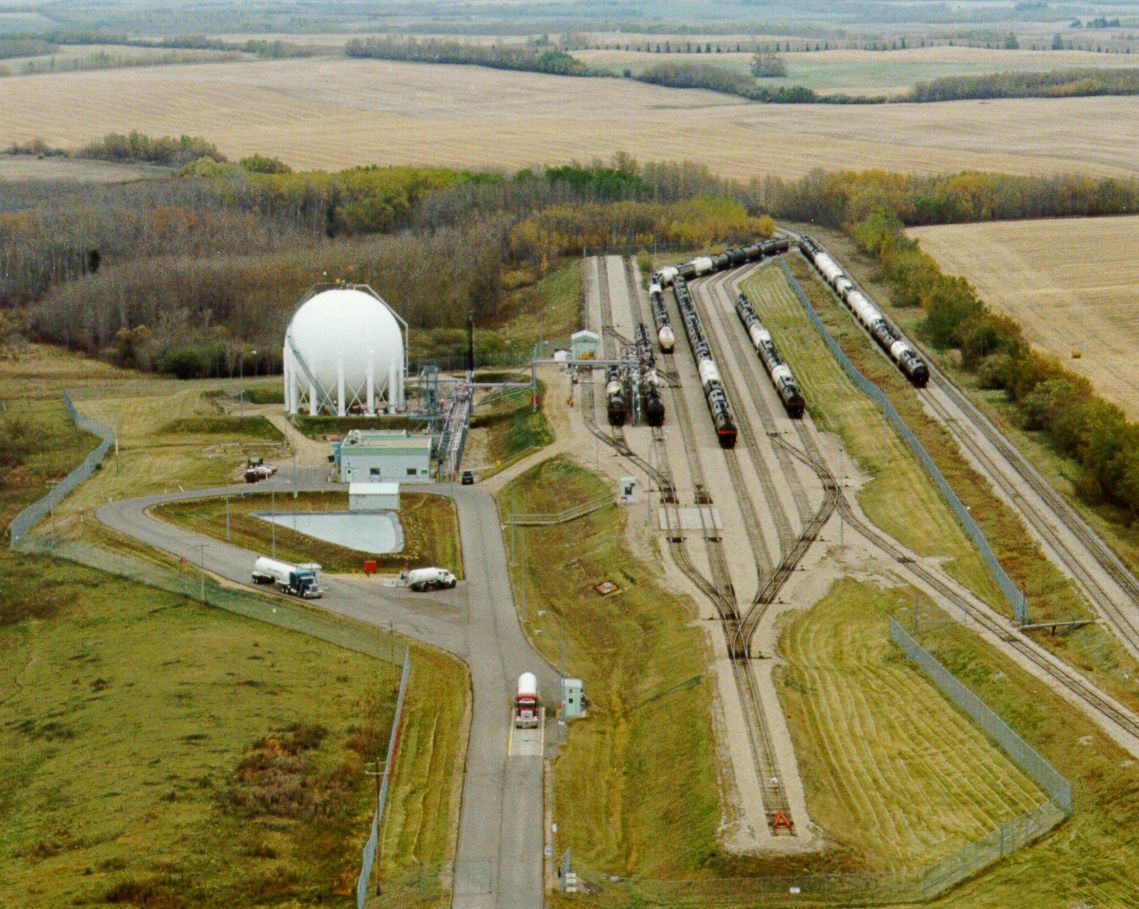
The 411 on Joffre and Chigwell
Located 175 kilometers north of Calgary, the Joffre Nitrogen facility produces about 490,000 tons of ammonia per year. All of it travels by pipeline to the Chigwell Distribution Terminal about 20 km north of the Joffre plant. From Chigwell, it’s sent out by rail or truck to retailers including Nutrien Ag Solutions, other Nutrien nitrogen facilities and commercial customers for upgrading to agricultural or non-ag products, and ultimately to farmers across Western Canada.
“We have 36 employees and two long-term contractors between the two sites, and more than a third of the team has been here for the full 10 years,” Alex says. “We are one team, and that is key to our success.”
Joffre is unique among Nutrien nitrogen plants, in that it doesn’t use natural gas to react with nitrogen in the atmosphere to make ammonia. Instead, its hydrogen and nitrogen feedstocks are byproducts from nearby petrochemical plants that are delivered to Joffre by pipeline. As a result, the site is part of Nutrien’s low-carbon ammonia network and a key contributor to our Feeding the Future Plan.
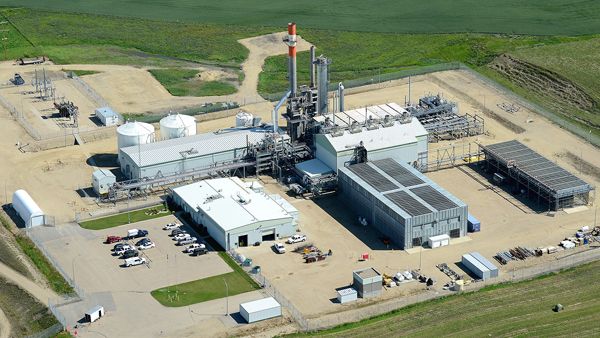
Hammer time – celebrating a decade of safety success
Tin and aluminum are the traditional materials associated with 10th anniversary gifts, so to mark the 10-year milestone, Jennifer gave each employee a shiny aluminum hammer, etched with a commemorative engraving. Similar hammers were mounted on plaques and hung in the lobbies of the Joffre and Chigwell facilities.
“Tin and aluminum represent strength and resilience, and those words describe our team to a tee,” Jennifer says. “The plaques in the lobbies will be a testament and reminder of our strength and resilience for current and future employees for years to come.”
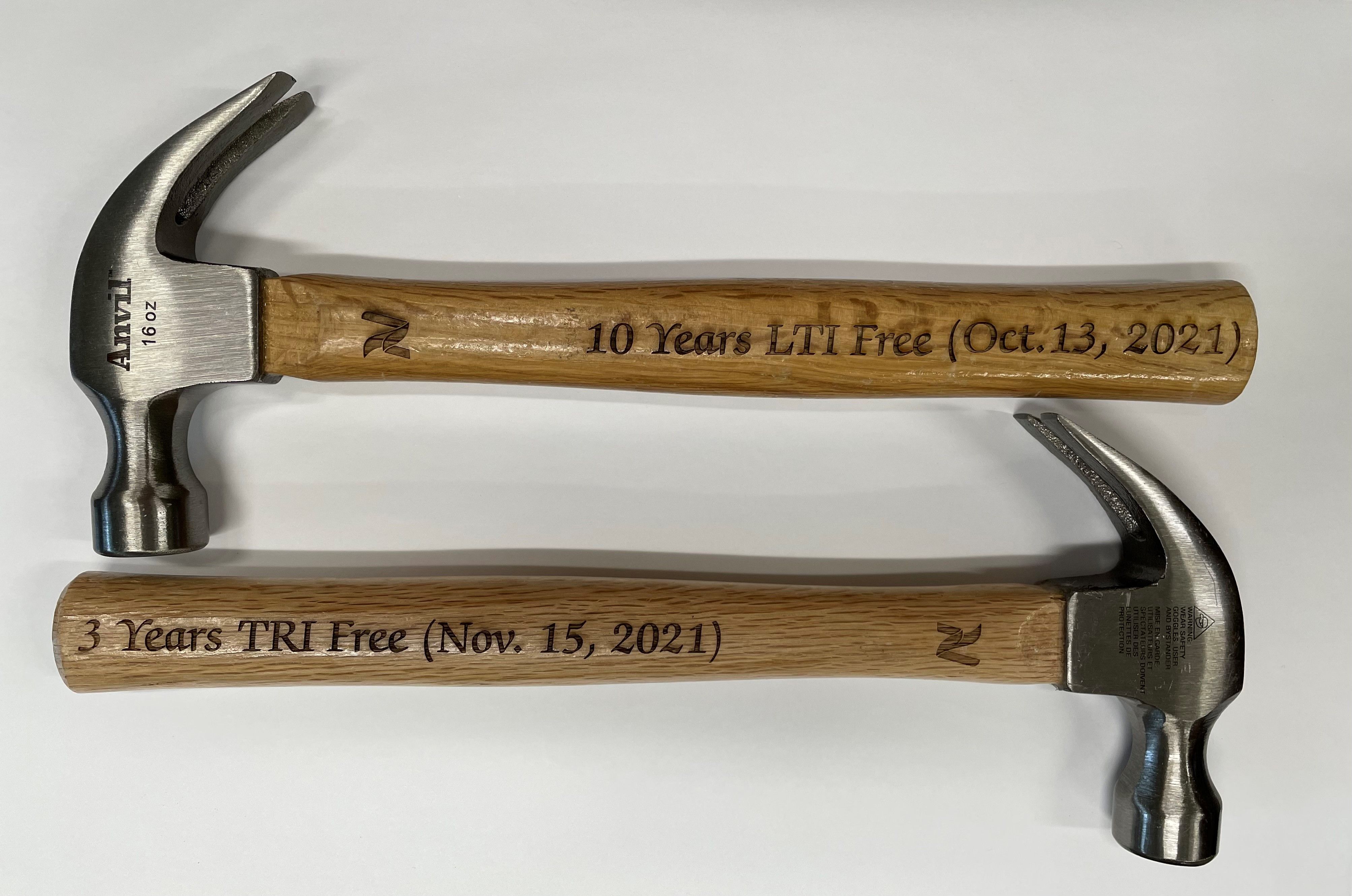
Related stories
Explore more about Nutrien
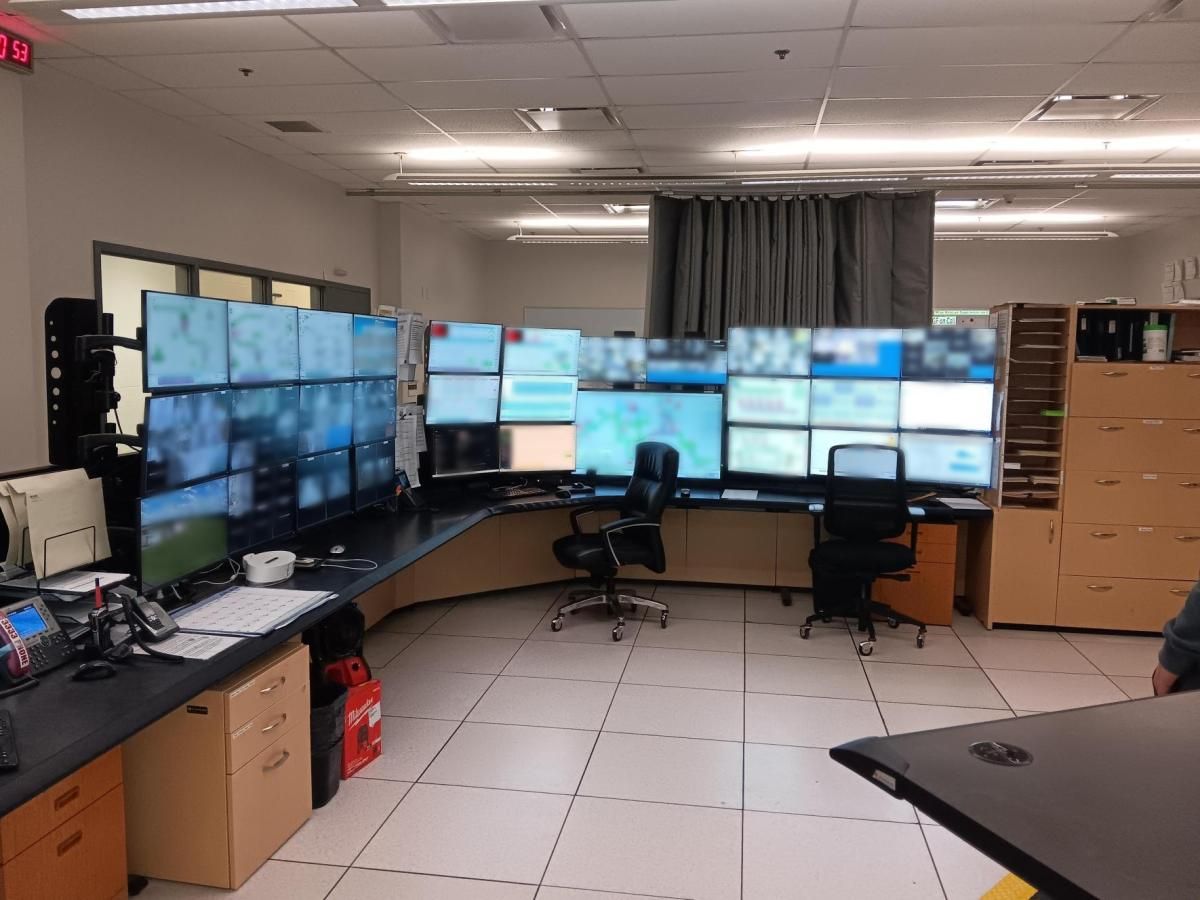
Innovation is Changing the Landscape for Nutrien
When Nutrien opened the first potash mine in Saskatchewan at Patience Lake in 1959, rudimentary tools and machines were the standard as technology wasn’t considered a key factor during those early days, but things have changed a lot.

Intentional opportunities creating real benefits for Indigenous Peoples
I work with a collaborative and dedicated team of procurement professionals who create and drive opportunities for positive impact for Saskatchewan’s Indigenous communities. By utilizing and leveraging our local supply chain spend, my position is responsible for implementing and supporting our [...]

Collaboration is key to sales and marketing wins
When it comes to sales and marketing, our Commercial group is at the top of its game.
Newly Launched - AI Presentation Maker

AI PPT Maker
Powerpoint Templates
Icon Bundle
Kpi Dashboard
Professional
Business Plans
Swot Analysis
Gantt Chart
Business Proposal
Marketing Plan
Project Management
Business Case
Business Model
Cyber Security
Business PPT
Digital Marketing
Digital Transformation
Human Resources
Product Management
Artificial Intelligence
Company Profile
Acknowledgement PPT
PPT Presentation
Reports Brochures
One Page Pitch
Interview PPT
All Categories
Top 10 Team Member List PowerPoint Presentation Templates in 2024
Introducing our top-notch Team Member List PPT, an indispensable asset for any business presentation. This PPT is specifically designed to showcase your team's composition, skills, and roles in a visually appealing and organized manner. Our Team Member List PPT is not just a simple list; it's a comprehensive tool that allows you to highlight the strengths and unique attributes of each team member. With its clean and professional design, it can easily be incorporated into any corporate presentation.What sets our Team Member List PPT apart is its complete customization feature. You can effortlessly adapt it to match your brand's style, color scheme, and overall aesthetic. This means you have the freedom to adjust the layout, text, colors, and graphics as you see fit.Moreover, the Team Member List PPT is user-friendly, making it easy for anyone to edit and modify, regardless of their design skills. With its intuitive design, you can quickly add or remove team members, update their information, or change the order as your team evolves.In addition, our Team Member List PPT is designed to be versatile. Whether you're presenting to stakeholders, clients, or your own team, this PPT can be tailored to suit your audience's needs. In summary, our Team Member List PPT is not just a roster of names. It's a powerful presentation tool that allows you to showcase your team's capabilities and achievements in a professional, appealing, and fully customizable format.
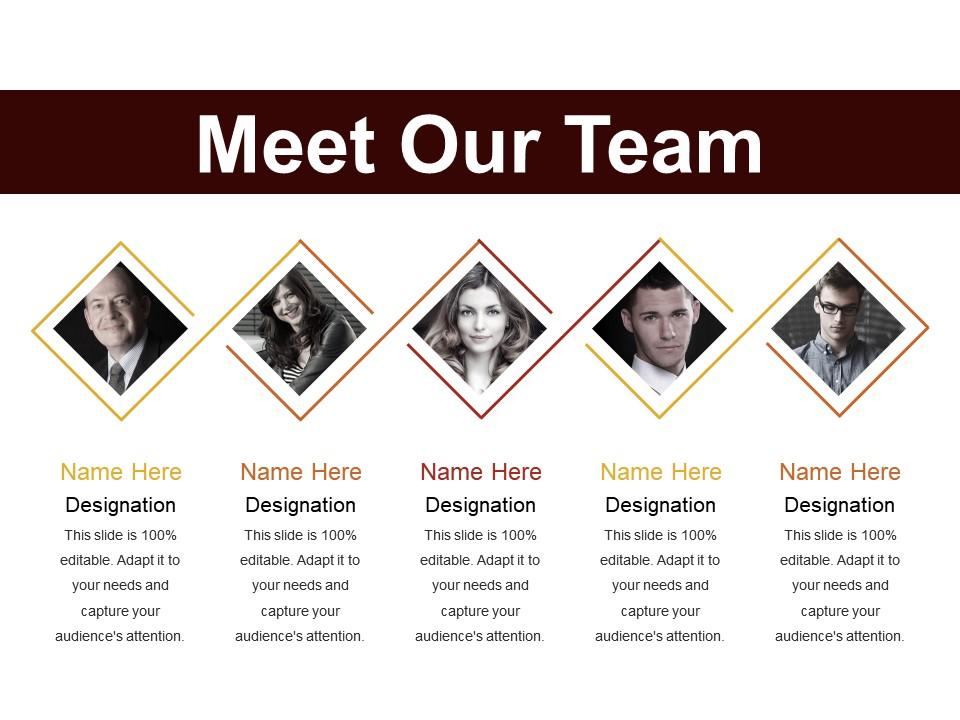
Meet our team powerpoint slide ideas
Presenting Meet Our Team PowerPoint Slide Ideas PowerPoint slide. This PPT template is easy to download in various formats like PDF, PNG and JPG. You can modify the text, font color, font size and shape used as per your convenience. As this PPT is Google Slides compatible, it is accessible easily. The PowerPoint theme is readily available in both 4:3 and 16:9 aspect ratio.
Introducing Meet Our Team PowerPoint Slide Ideas PowerPoint presentation. Employing this PPT presentation you can get familiar with employees of other departments as well and promote the social culture of your company. This social interaction PowerPoint theme can be helpful in knowing more about the firm’s employees and their designations. Using this reach out PPT slide you can get to know your fellow colleagues. You can list out the qualifications and experience of the colleagues along with their photographs using our PPT layout. Additionally, this PowerPoint slide can help in recognizing a suitably skilled employee for a project. This introductory PPT template can be used in institutions like schools and colleges for conferences to introduce departmental heads and various authorities. This introduction PowerPoint layout can be used by HR during company induction to new employers. Therefore download this connection building PowerPoint slide and promote public relations within your organization to create an amicable environment.
- Designation
- communication
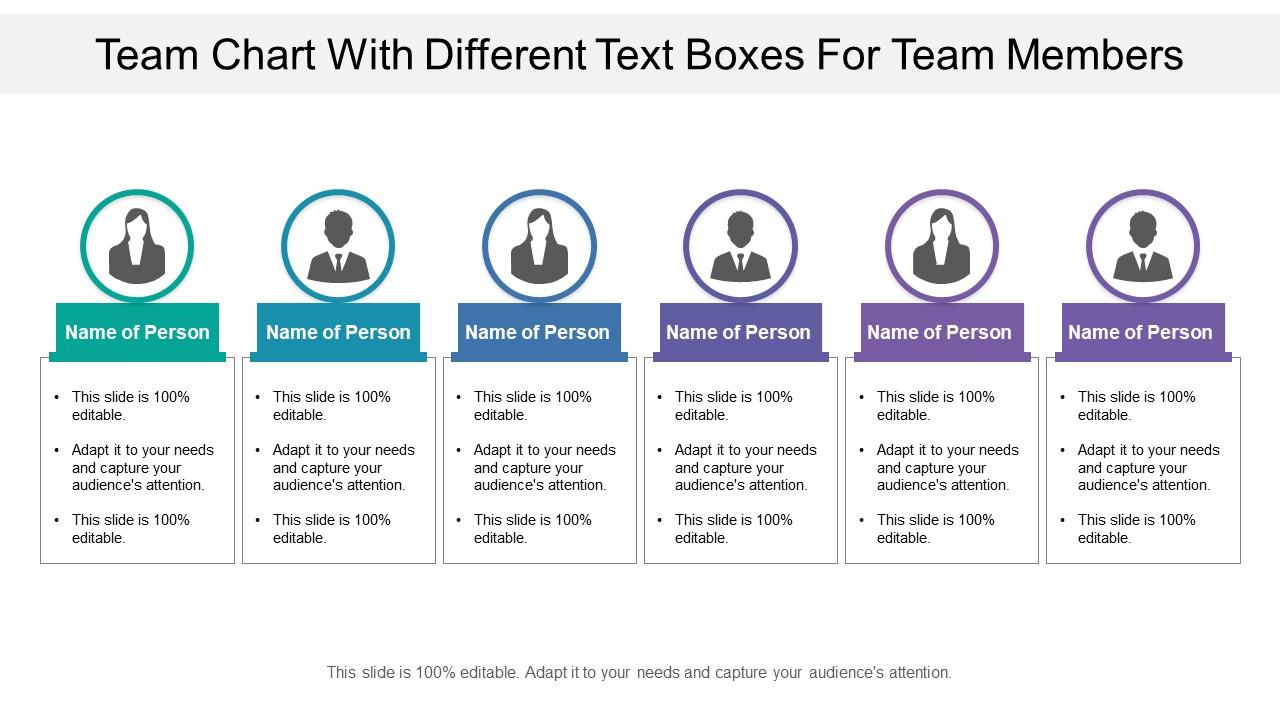
Team chart with different text boxes for team members
Presenting this set of slides with name - Team Chart With Different Text Boxes For Team Members. This is a six stage process. The stages in this process are Team Chart, Group Chart, Member Chart.
Our Team Chart With Different Text Boxes For Team Members don't allow the going to get heavy. They bring in an element of fun.
- Group Chart
- Member Chart
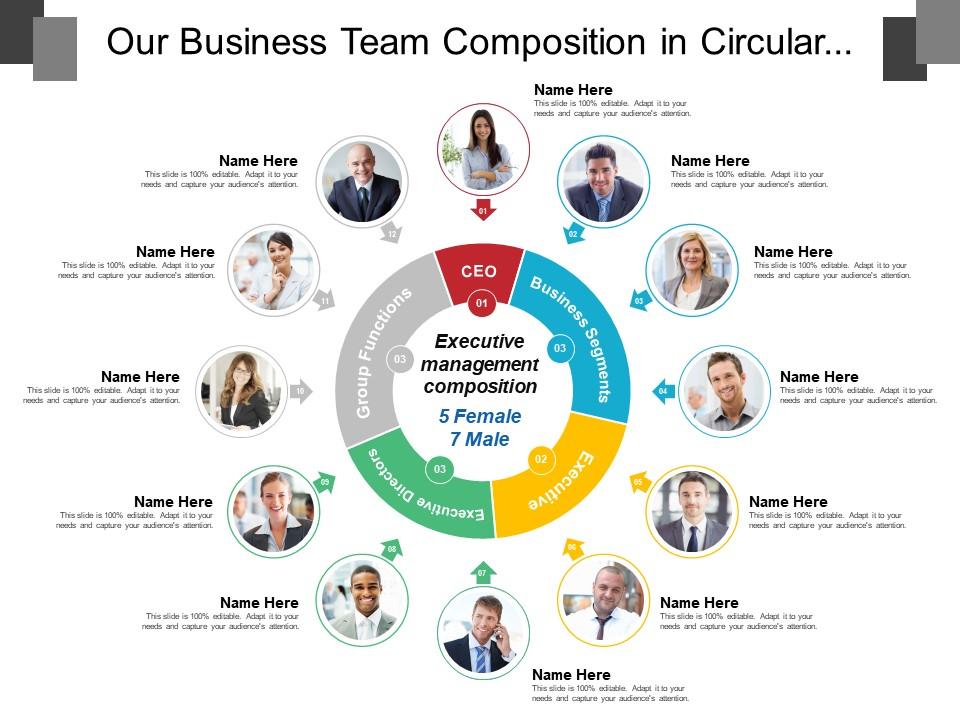
Our business team composition in circular format
Presenting this set of slides with name - Our Business Team Composition In Circular Format. This is a two stage process. The stages in this process are Our Team, Our Group, Our Members.
Control your confidence with our Our Business Team Composition In Circular Format. Don't allow complacency to enter.
- Our Members

Core Team Companionship Management Investor Funding Elevator Pitch Deck
This slide represents core management team of community of older community engagement platform. It includes team members such as founder and CEO, lead developer, software developer, community manager, community support, etc. Introducing Core Team Companionship Management Investor Funding Elevator Pitch Deck to increase your presentation threshold. Encompassed with Six stages, this template is a great option to educate and entice your audience. Dispence information on Software Developer, Community Support, Lead Developer, Community Manager, using this template. Grab it now to reap its full benefits.
This slide represents core management team of community of older community engagement platform. It includes team members such as founder and CEO, lead developer, software developer, community manager, community support, etc.
- Software Developer
- Community Support
- Lead Developer
- Community Manager
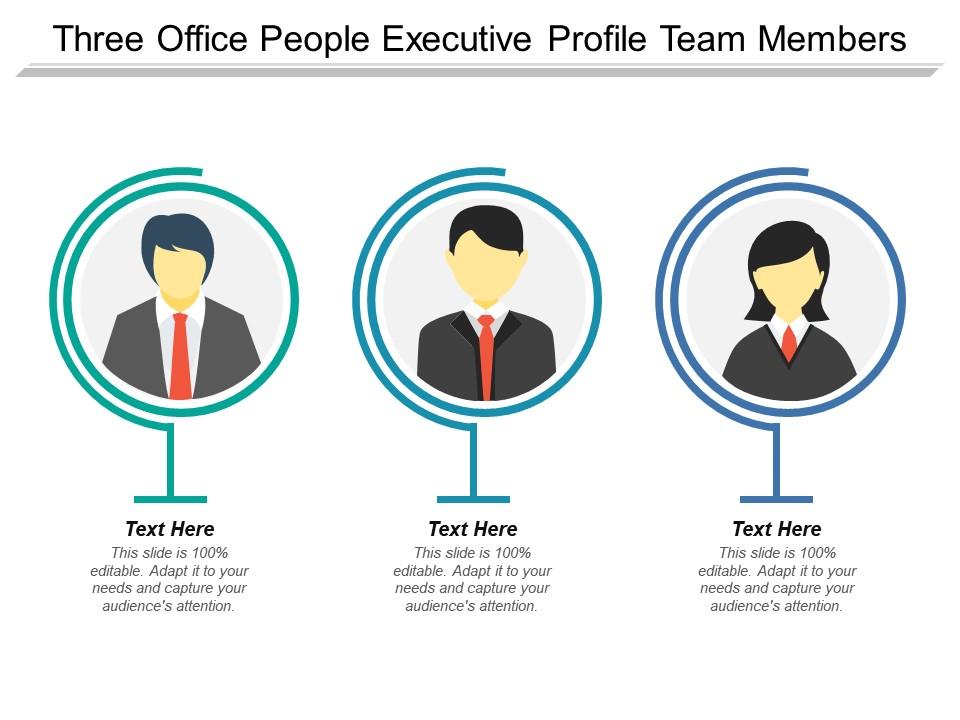
Three office people executive profile team members
Presenting this set of slides with name - Three Office People Executive Profile Team Members. This is a three stage process. The stages in this process are Company Profiling, Executive Profile, Company Introduction.
Get folks interested in the journal with our Three Office People Executive Profile Team Members. Draw their attention to informative articles.
- Company Profiling
- Executive Profile
- Company Introduction
Four 3d men holding team puzzle pieces business ppt graphics icons
We are proud to present our four 3d men holding team puzzle pieces business ppt graphics icons. A set of customizable puzzle pieces for creating PowerPoint charts and illustrations. This PowerPoint Diagram contains an image of four 3d persons holding puzzle pieces that form the word team. It portrays the concept of communication, connection, team, leadership, unity and organization. Use this PowerPoint presentation for business and Teamwork purpose.
Presentations can make or break your presentation. Make sure they get the attention to detail they deserve with our range of Four 3D Men Holding Team Puzzle Pieces Business Ppt Graphics Icons designs.
- achievement
- Business-Team
- presentation
- professional
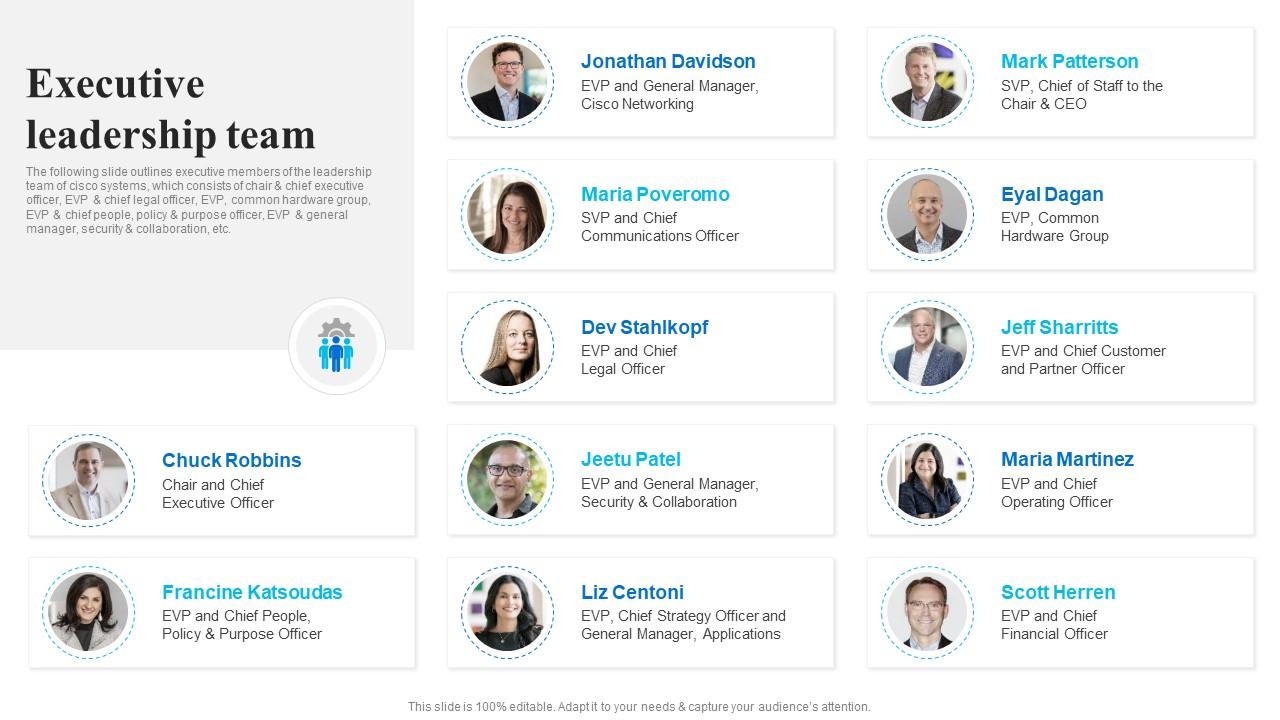
Executive Leadership Team Cisco Company Profile CP SS
The following slide outlines executive members of the leadership team of cisco systems, which consists of chair and chief executive officer, EVP and chief legal officer, EVP, common hardware group, EVP and chief people, policy and purpose officer, EVP and general manager, security and collaboration, etc. Introducing Executive Leadership Team Cisco Company Profile CP SS to increase your presentation threshold. Encompassed with one stages, this template is a great option to educate and entice your audience. Dispence information on Executive, Purpose, Manager, using this template. Grab it now to reap its full benefits.
The following slide outlines executive members of the leadership team of cisco systems, which consists of chair and chief executive officer, EVP and chief legal officer, EVP, common hardware group, EVP and chief people, policy and purpose officer, EVP and general manager, security and collaboration, etc.
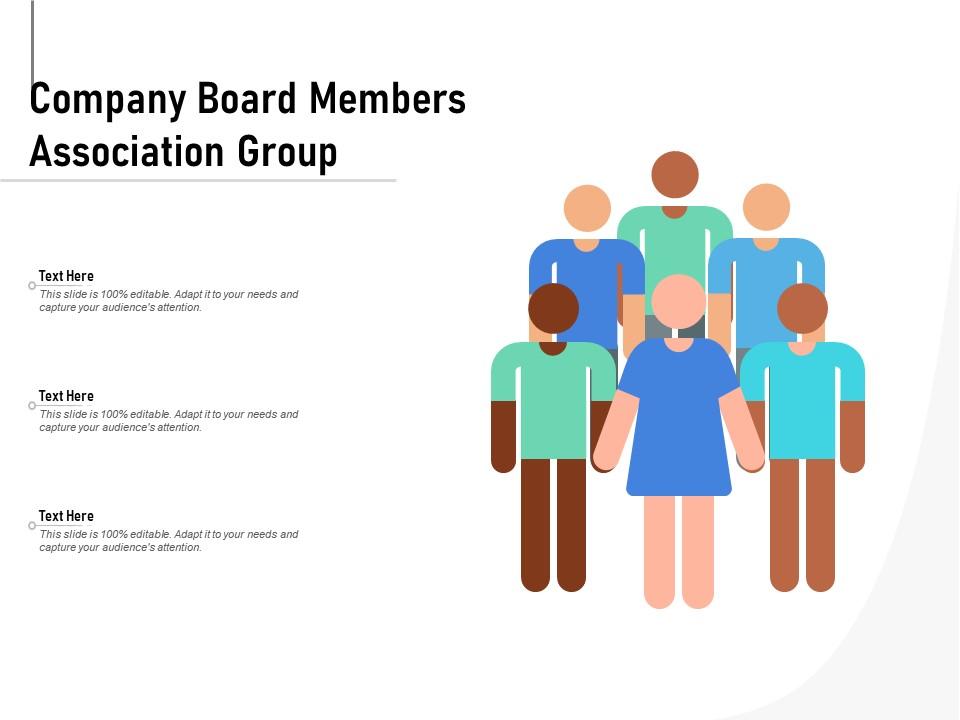
Company board members association group
Presenting this set of slides with name Company Board Members Association Group. This is a one stage process. The stages in this process is Company Board Members Association Group. This is a completely editable PowerPoint presentation and is available for immediate download. Download now and impress your audience.
Our Company Board Members Association Group are topically designed to provide an attractive backdrop to any subject. Use them to look like a presentation pro.
- Company Board Members Association Group
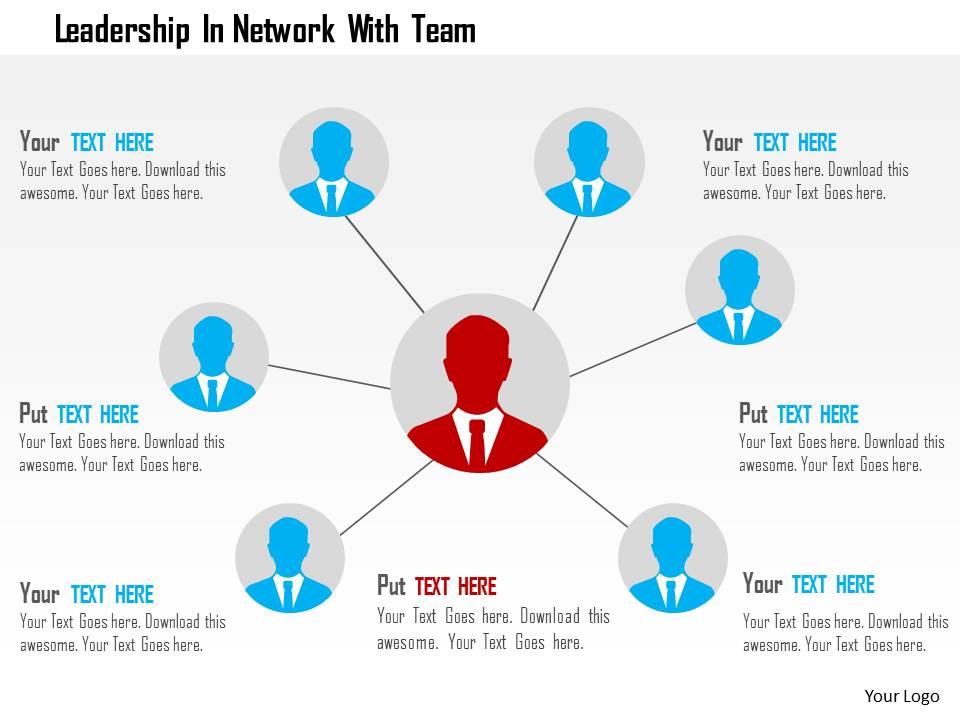
Leadership in network with team flat powerpoint design
We are proud to present our leadership in network with team flat powerpoint design. Concept of leadership has been displayed in this PPT diagram. This PPT diagram contains the graphic of network and business peoples. Use this PPT diagram for business and technology related presentations.
Derive complete comfort with our Leadership In Network With Team Flat Powerpoint Design. You will experience halycon days.
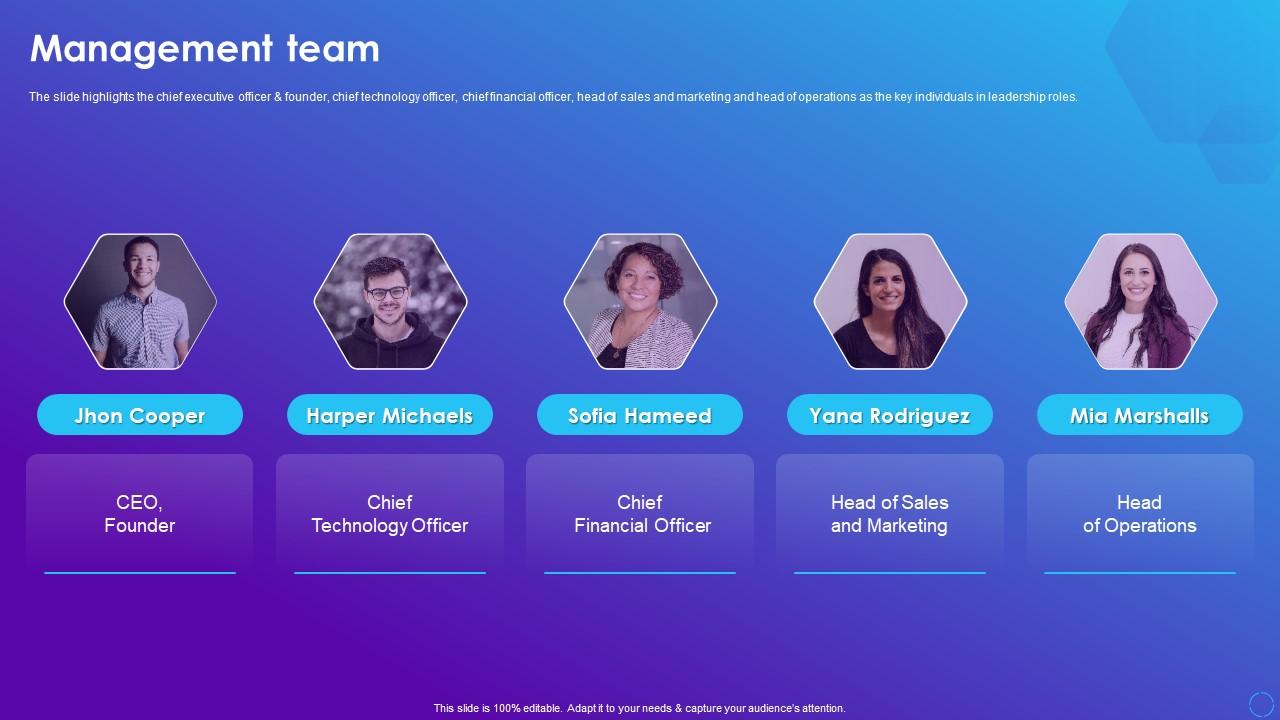
Management Team Software Company Profile Ppt Slides
The slide highlights the chief executive officer and founder, chief technology officer, chief financial officer, head of sales and marketing and head of operations as the key individuals in leadership roles. Introducing Management Team Software Company Profile Ppt Slides to increase your presentation threshold. Encompassed with five stages, this template is a great option to educate and entice your audience. Dispense information on Sales And Marketing, Financial Officer, Technology Officer, using this template. Grab it now to reap its full benefits.
The slide highlights the chief executive officer and founder, chief technology officer, chief financial officer, head of sales and marketing and head of operations as the key individuals in leadership roles.
- Sales and Marketing
- Financial Officer
- Technology Officer


IMAGES
VIDEO
COMMENTS
Here are 12 great safety presentation ideas you can use in your workplace. Click on each idea to learn more. How to prevent slips, trips, and falls How to respond to hazardous spills How to stay safe when working on an elevated work platform How to prevent workplace violence and harassment
Here are some safety topics you can consider for your meetings: 1. Slipping, Tripping, and Falling. Slips, trips, and falls constitute some of the most frequent workplace accidents and can result in serious injuries. To mitigate these risks, it is essential to maintain clear, unobstructed walkways and workspaces.
3. Cold work safety. Cold weather can be deadly when preparedness efforts fall short. Share cold-weather safety tips with your team before a day of working in the cold, and set them up with a buddy system so all workers have someone who can look after them. 4. Defensive driving.
30 safety topics and messages to send in 2024. Ensuring a safe workplace can start today. We've created the following compilation of safety topics you can use as a guide for maintaining a safe work environment and fostering a culture of well-being within your organization. 1. Importance of proper lifting techniques.
Here are 24 safety moment ideas to improve general safety and inspire detailed presentations about the hazards in their work environments. Universal safety moment topics 1. Situational and safety awareness. One of the most important skills you can help your employees develop is situational awareness in the workplace.
Hopefully, these will help keep your idea bank full for the foreseeable. 5 Examples of Unsafe Bad Habits. Achieving your Team's Health and Safety Goals. Alcohol Awareness. Allergies and Hayfever. Asbestos. Attitudes to Workplace. Health and Safety. Back Stretches.
2 - The Idea of the "Large Ripple": Behavioral Safety Meeting. This is probably my favorite idea to pass on to my employees in the field. In the construction industry where I work, we are a project-based business. This means we only work with a small percentage of the whole company on our job site.
Members have access to over 320+ additional toolbox talks that are not found on this free site. There are also PowerPoint presentations with quizzes, 80 Spanish safety talks, and hand-picked weekly topic ideas. Additional members-only content is added every month! Click the image of the safety talk to the left to download 1 of the over 550+ ad ...
If your workplace involves machinery, it is important to keep your staff up to date on operation, maintenance, and safety protocols. Topics include: 26. Forklift safety. 27.Machine operation. 28. Conveyor belt safety. 29. Safety with hand trucks and dollies.
Always ensure there's an actionable takeaway in each safety moment for work that employees can use in their day-to-day work lives. Include remote workers in your safety tips by sending pop-up video messages. 30 SAFETY MOMENT IDEAS FOR MEETINGS IN 2024. Here are some safety moment ideas that you can deliver in your workplace in 2024: 1.
Template 1- Focus on Employee Safety to Avoid Critical Incident. This PPT Template is a torchbearer for the activities that an organization can implement to employ the best employee safety practices in the construction business. It highlights the agenda for a safety program, major issues, goals, impact of safety training, and performance sheet.
Always identify the range of the audience and target your presentation appropriately. Identify the purpose of the presentation and the one, single message you want to transmit. Paint a picture to give the message. A good approach is to make a point and then tell a storey about that point or tell a storey to make a point.
Download Templates Of Welder Wearing Shield And Gloves At Work For Health Safety. 5. Encourage stretch breaks and regular meetings. Allow your employees to take stretch breaks because even a five-minute break can release muscle tension, loosen joints, and reduce the potential repetitive motion injuries.
Additionally, you can instruct staff members on the symptoms of heat exhaustion and stroke. 8. Fire Safety: Safety officials should be bold in reminding employees of the significance of fire safety. They should also inform the employees about the fundamental best practices they need to know in case of a fire.
2. Fun Safety Games for Work. Try a game like "safety bingo" or "spot the hazard.". Hand out prizes like branded t-shirts or points that add up and can be cashed in for a bigger prize at the end of training. 3. Small-Group Training Sessions. Divide students up into small groups.
Understanding Safety Moments A quick talk or presentation on a particular safety issue is called a "safety moment" at a work meeting. It aims to increase knowledge, reinforce safe procedures, and motivate employees to prioritize and keep safety first. However, safety moment ideas are concise talks, targeted discussions, or activities that ...
9. Creative Writing. Have employees create a short story involving workplace safety. Post these stories on a wall in a common area or ask each employee to read theirs out loud during a presentation. 10. Talent Contest. Let employees put their creative skills to use with a talent contest on workplace safety.
From trivia to hands-on challenges, here is our list of fun games that teach employees about workplace safety. 1. Slip and Fall Game. The Slip and Fall Game highlights the risks of falling at work. Participants spot hazards that may cause accidents. When planning this game, create cards that have possible falling hazards on them.
Tip 3: Add images to your presentations. Copilot in PowerPoint can make your presentations more visually compelling as well. Use it to suggest stock images for your presentation by using the Copilot prompt to "Add an image" related to your topic, and it will go through the stock images and select an image to add from that collection.
Additionally, there were 33,890 estimated work-related heat injuries and illnesses that resulted in days away from work from 2011-2020, an average of 3,389 per year in that time period. However, these statistics for occupational heat-related illnesses, injuries, and fatalities are likely vast underestimates.
Explore top work ute storage ideas for tradies! From heavy-duty toolboxes to customisable drawers, discover efficient solutions for organising tools and gear.Tradies often face the challenge of keeping their work utes organised and efficient. Without proper storage space, tools and equipment can become difficult to fin. Free Shipping for Limited Time only.
Whether your team has Zay Flowers, Zay Jones, or if there's another Zay floating around you're really passionate about, Zay My Name will work for you. Or draft Scottie Miller for the vibes alone. Songs, movies, whatever floats your boat these names will get you right.
Hammer time - celebrating a decade of safety success. Tin and aluminum are the traditional materials associated with 10th anniversary gifts, so to mark the 10-year milestone, Jennifer gave each employee a shiny aluminum hammer, etched with a commemorative engraving.
Introducing Meet Our Team PowerPoint Slide Ideas PowerPoint presentation. Employing this PPT presentation you can get familiar with employees of other departments as well and promote the social culture of your company. This social interaction PowerPoint theme can be helpful in knowing more about the firm's employees and their designations.